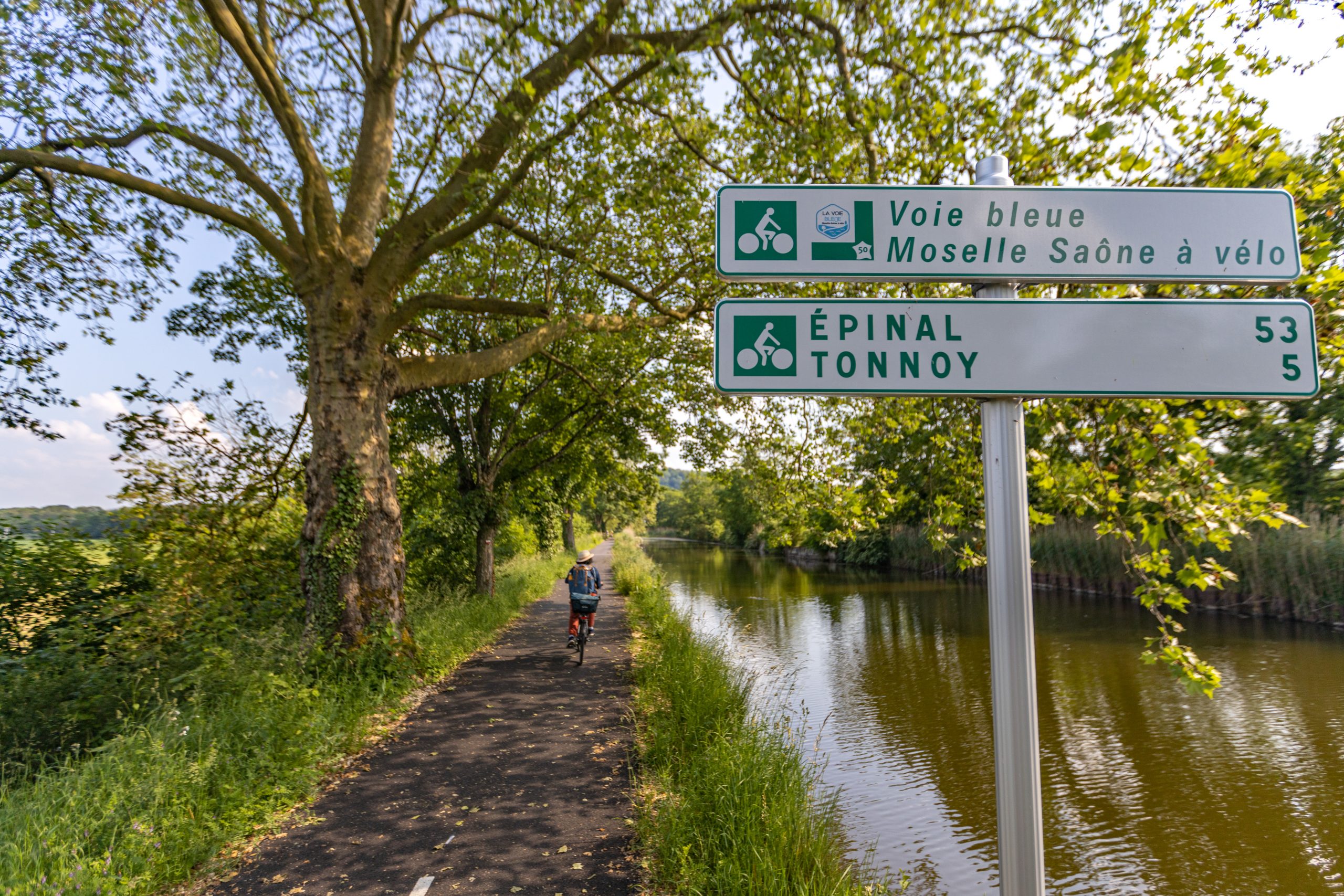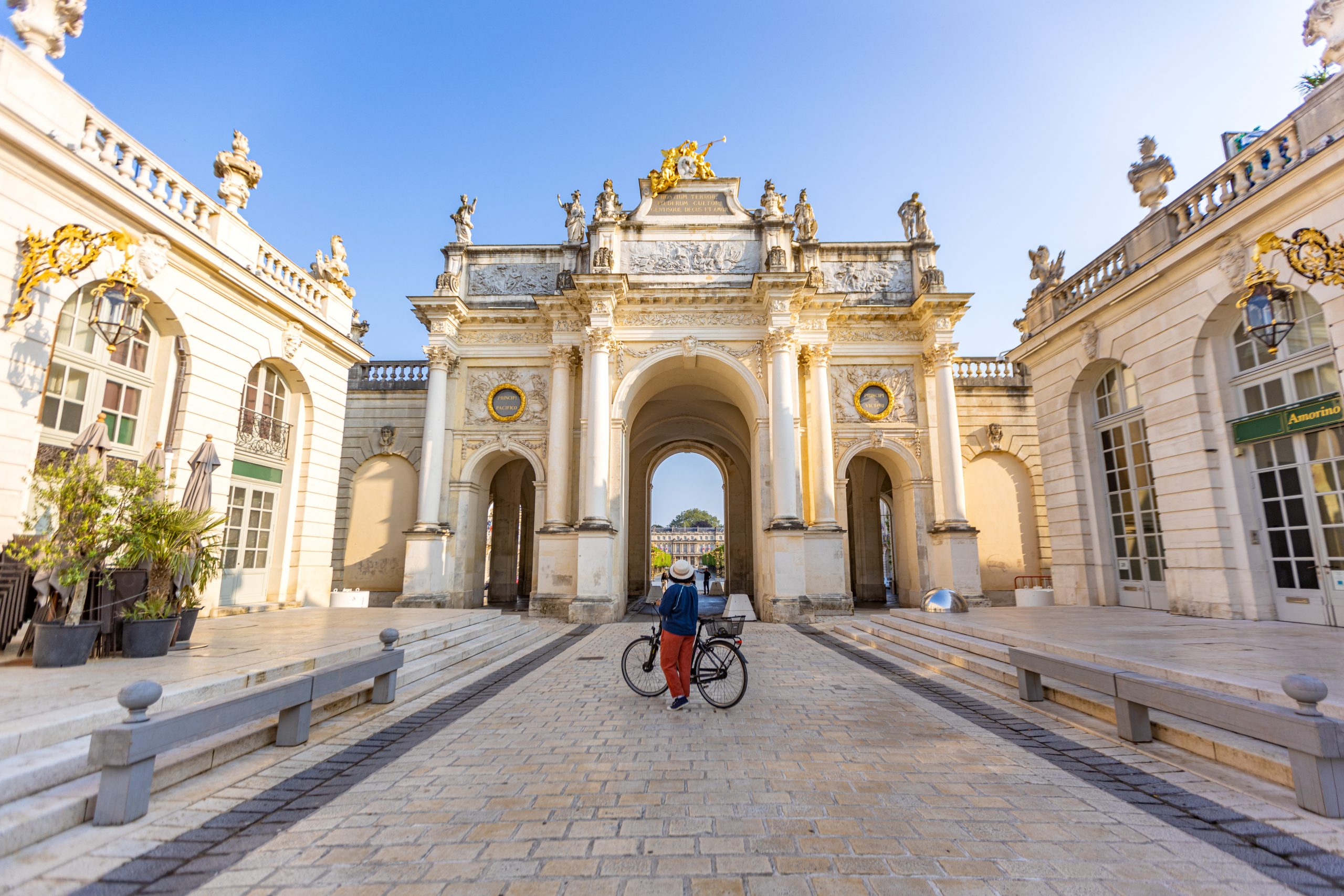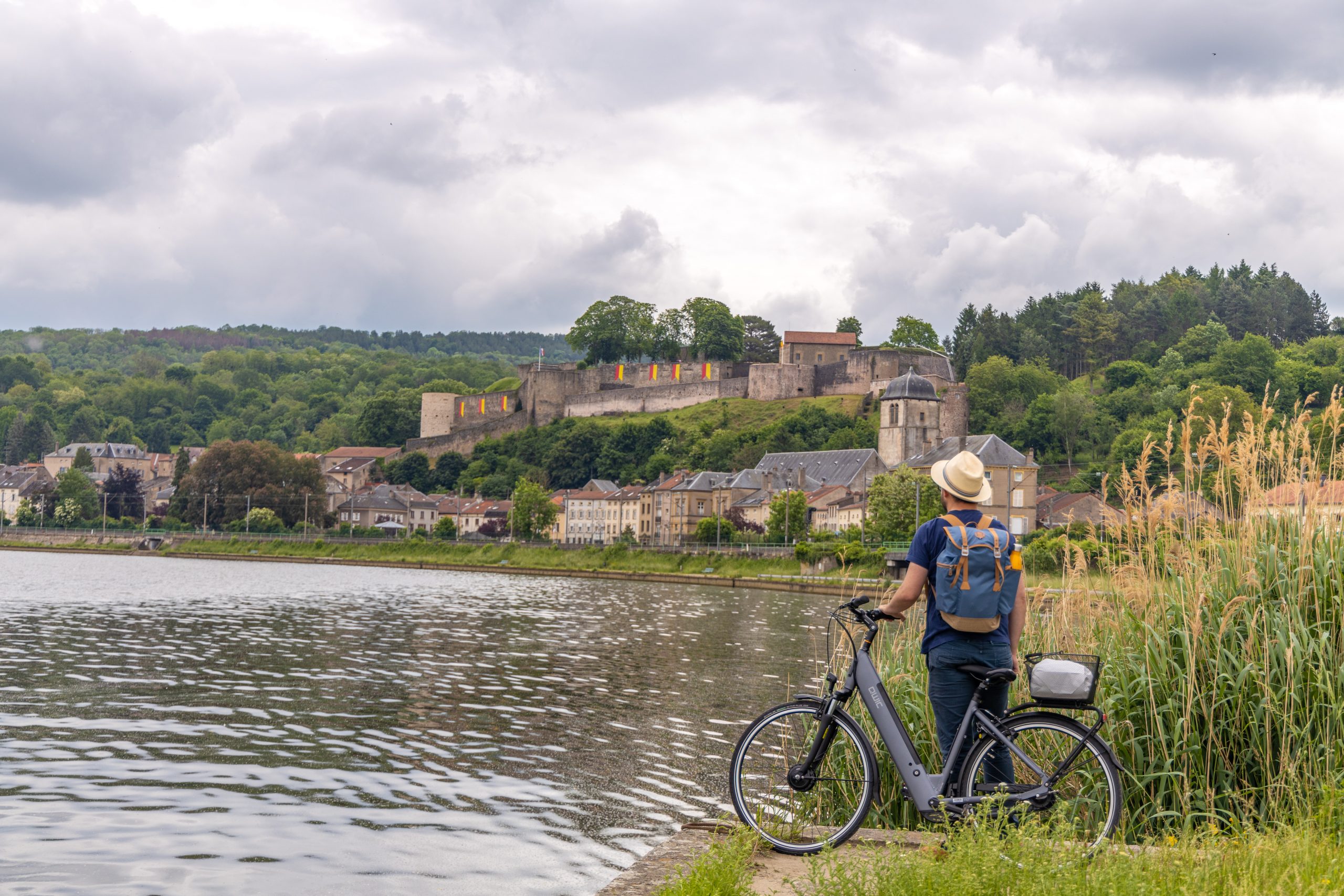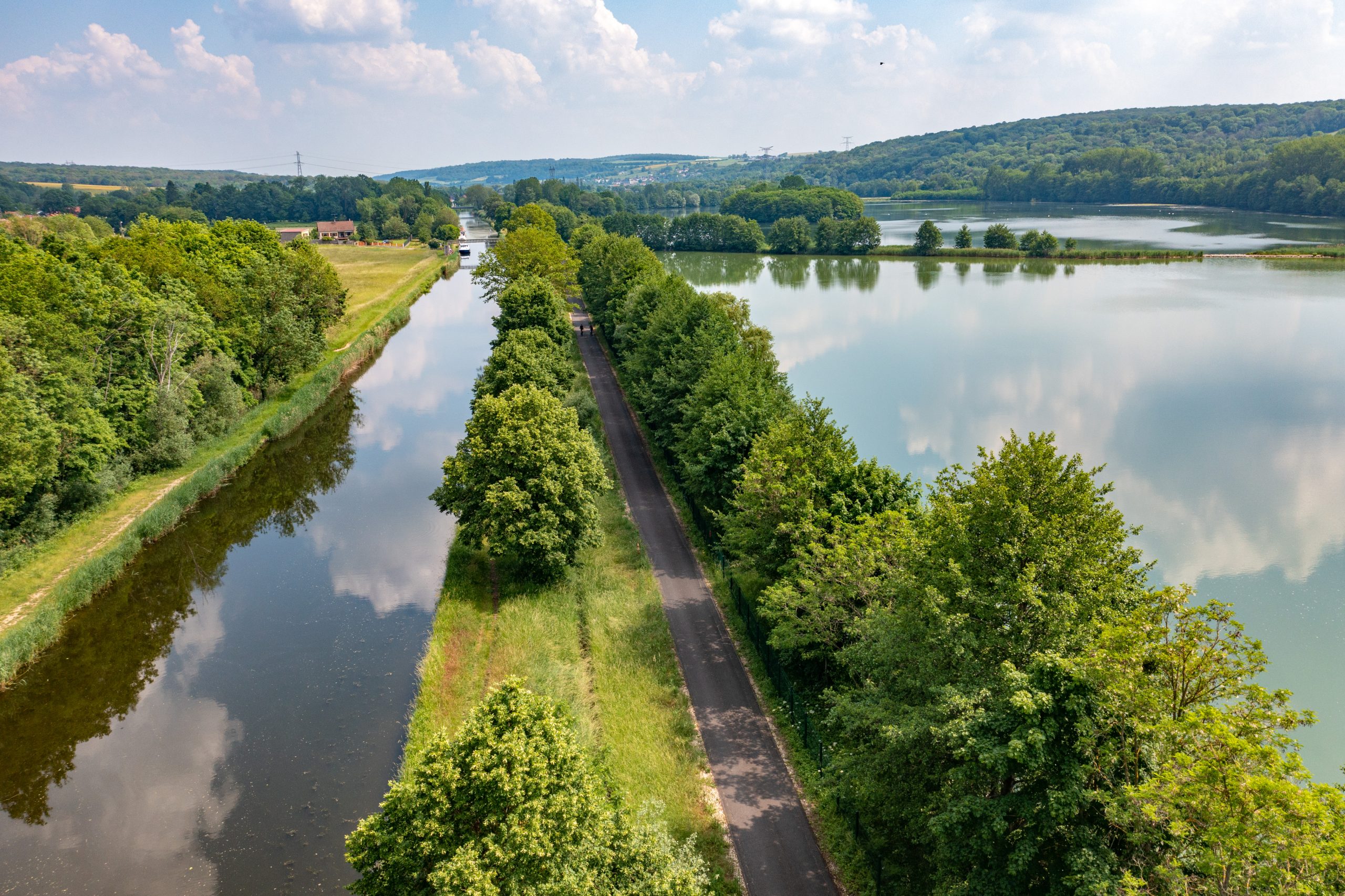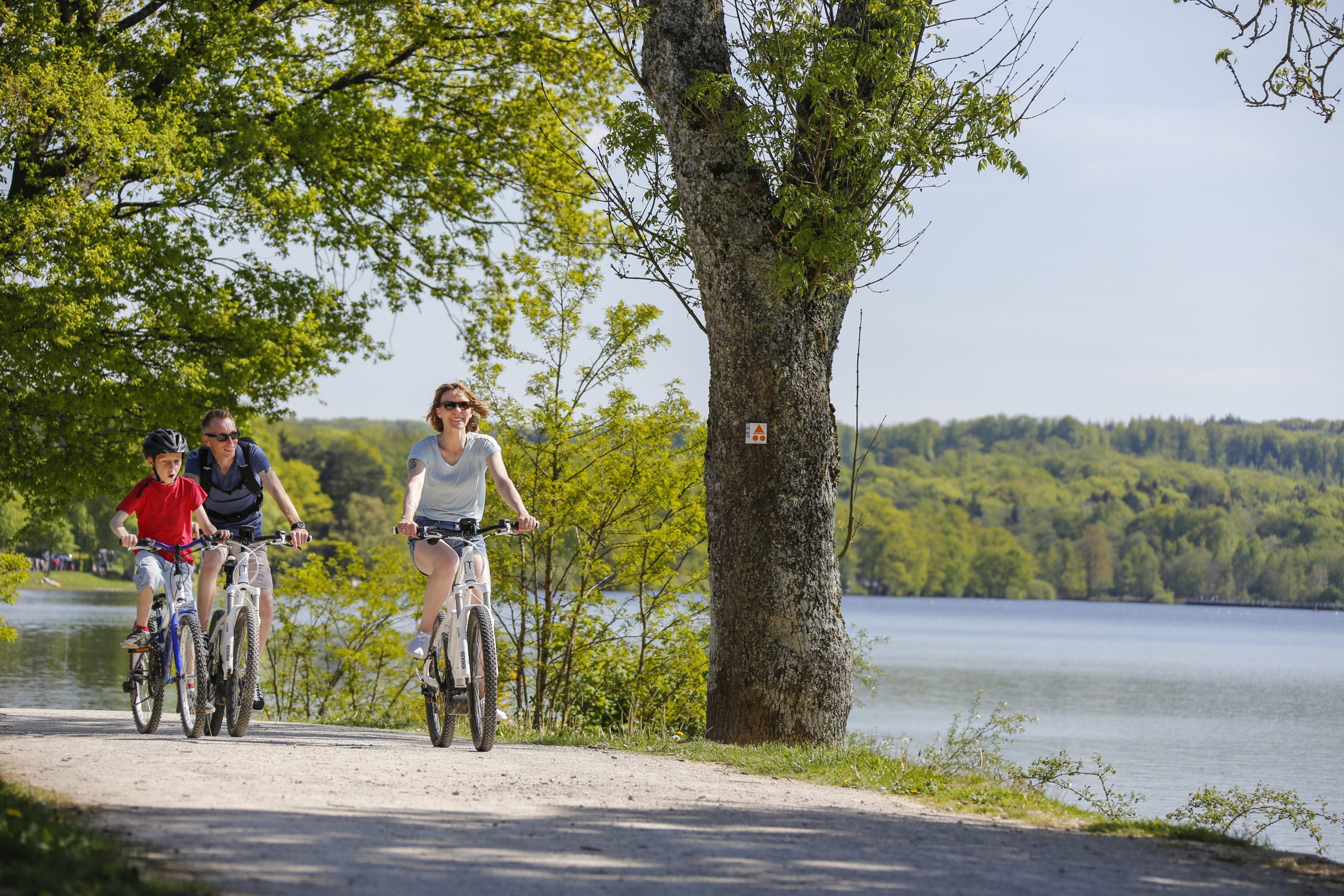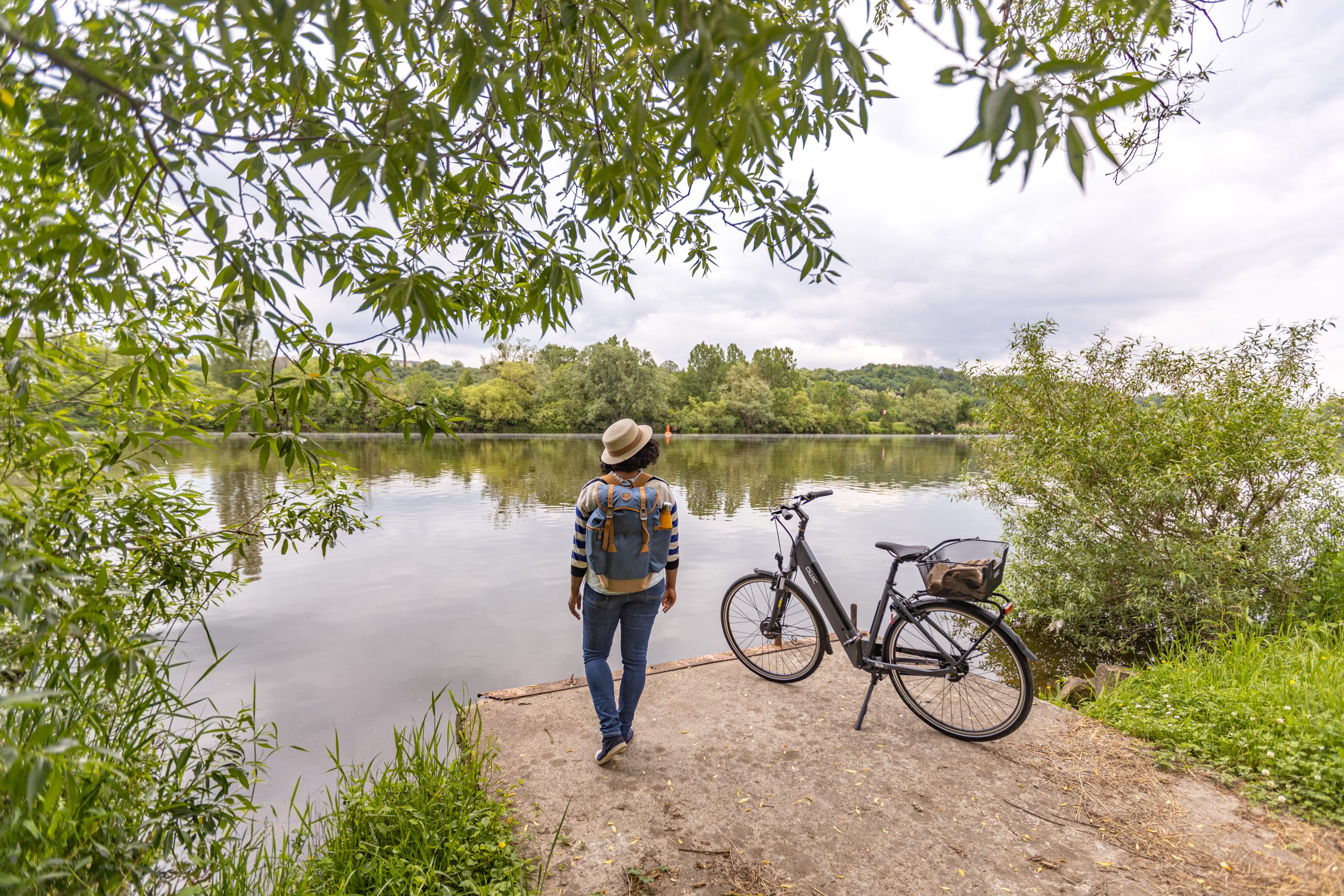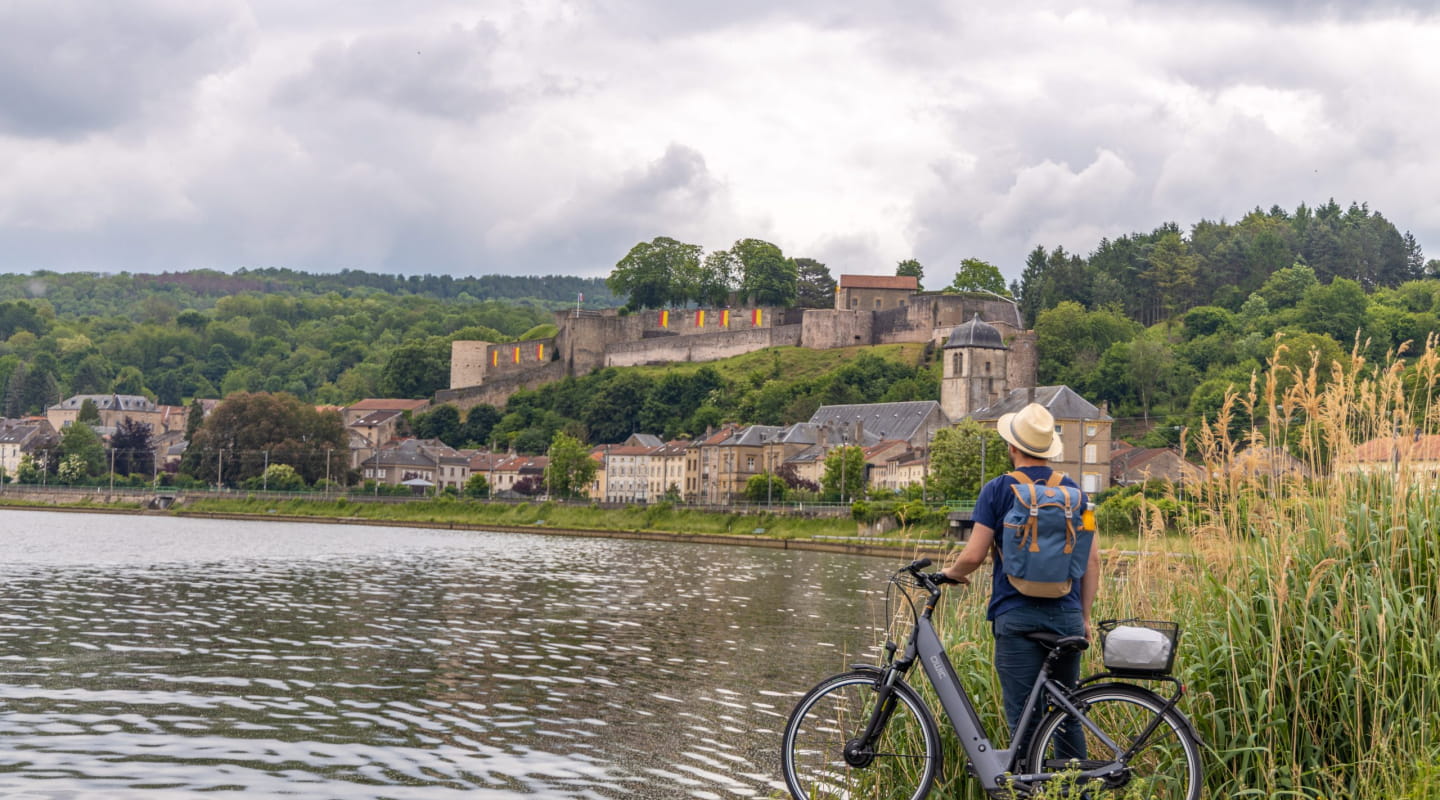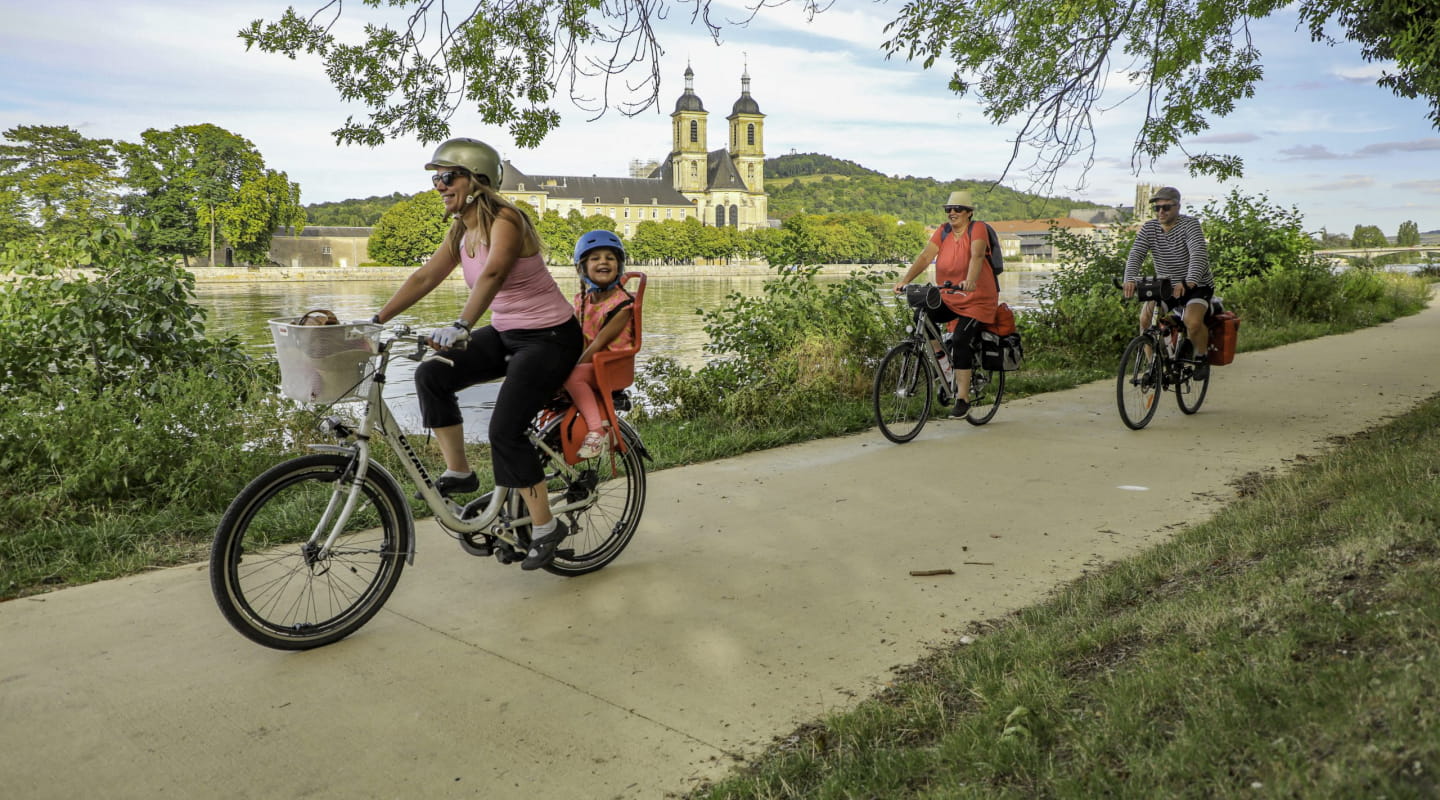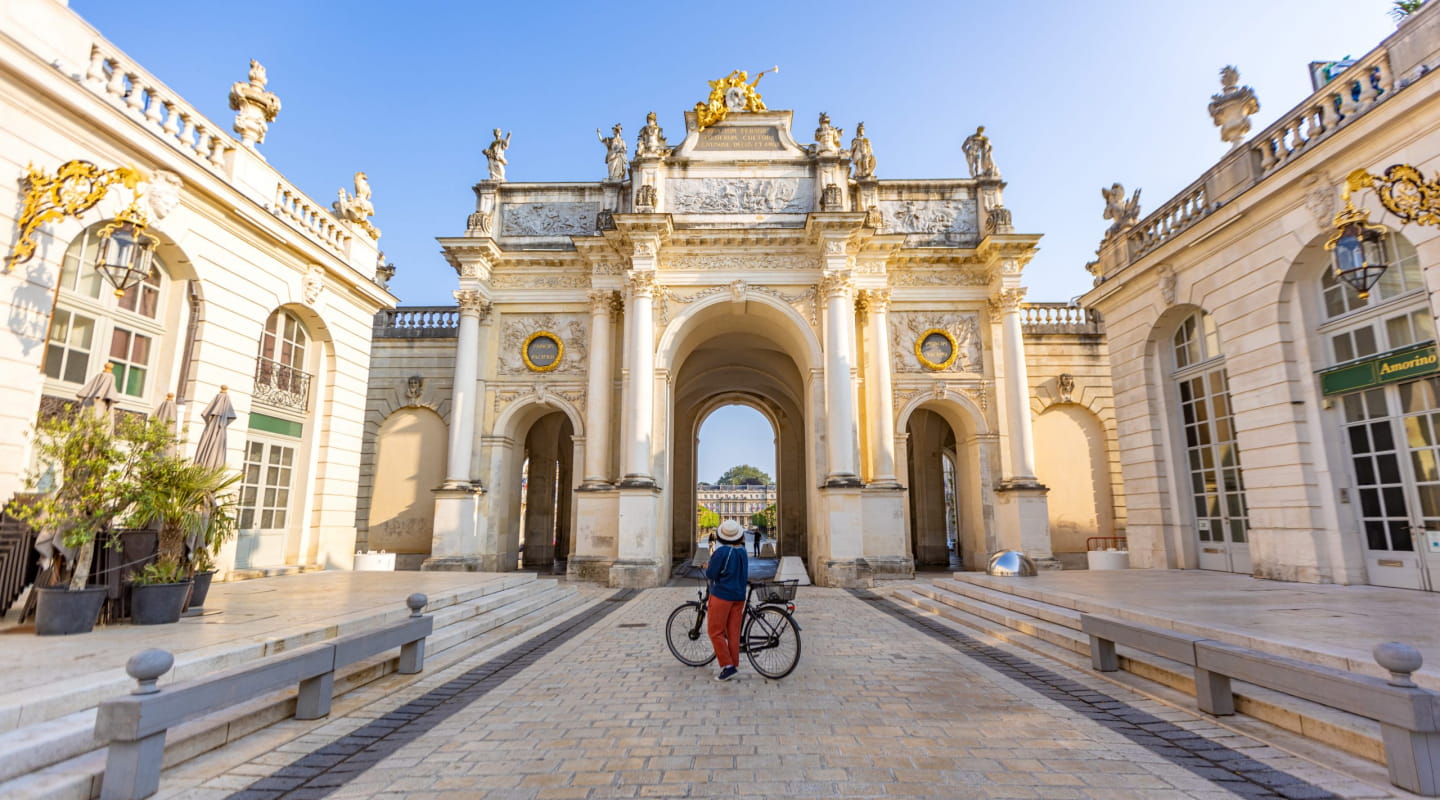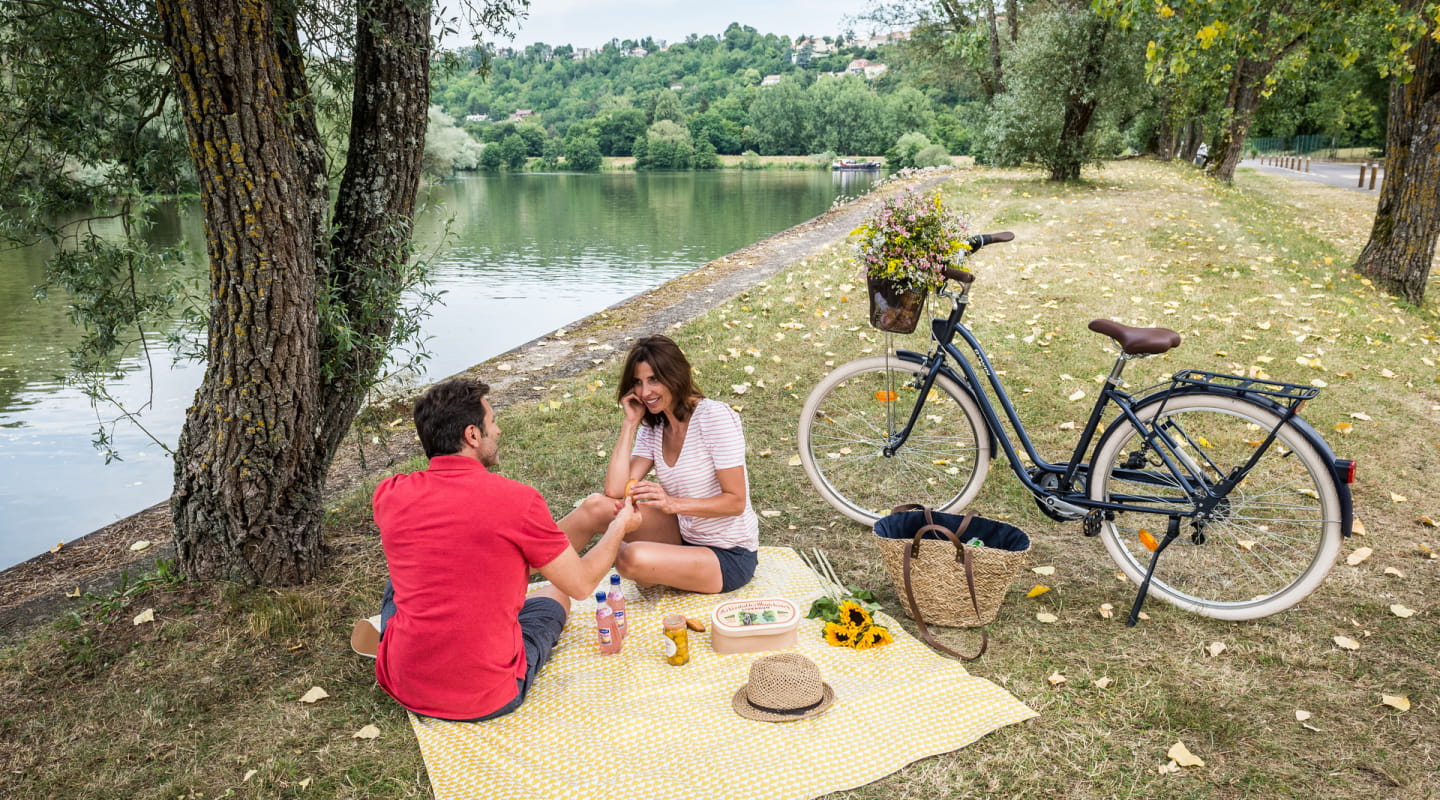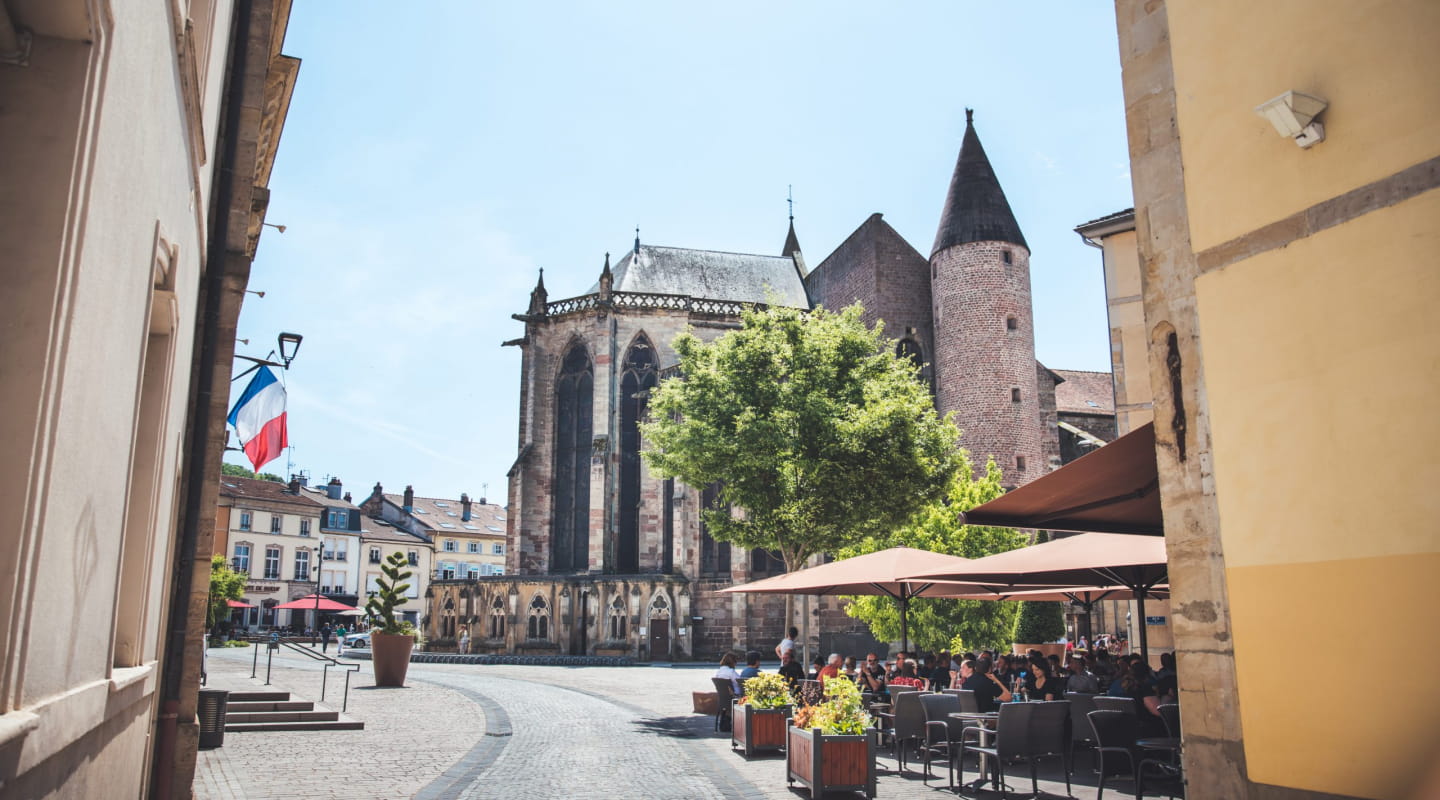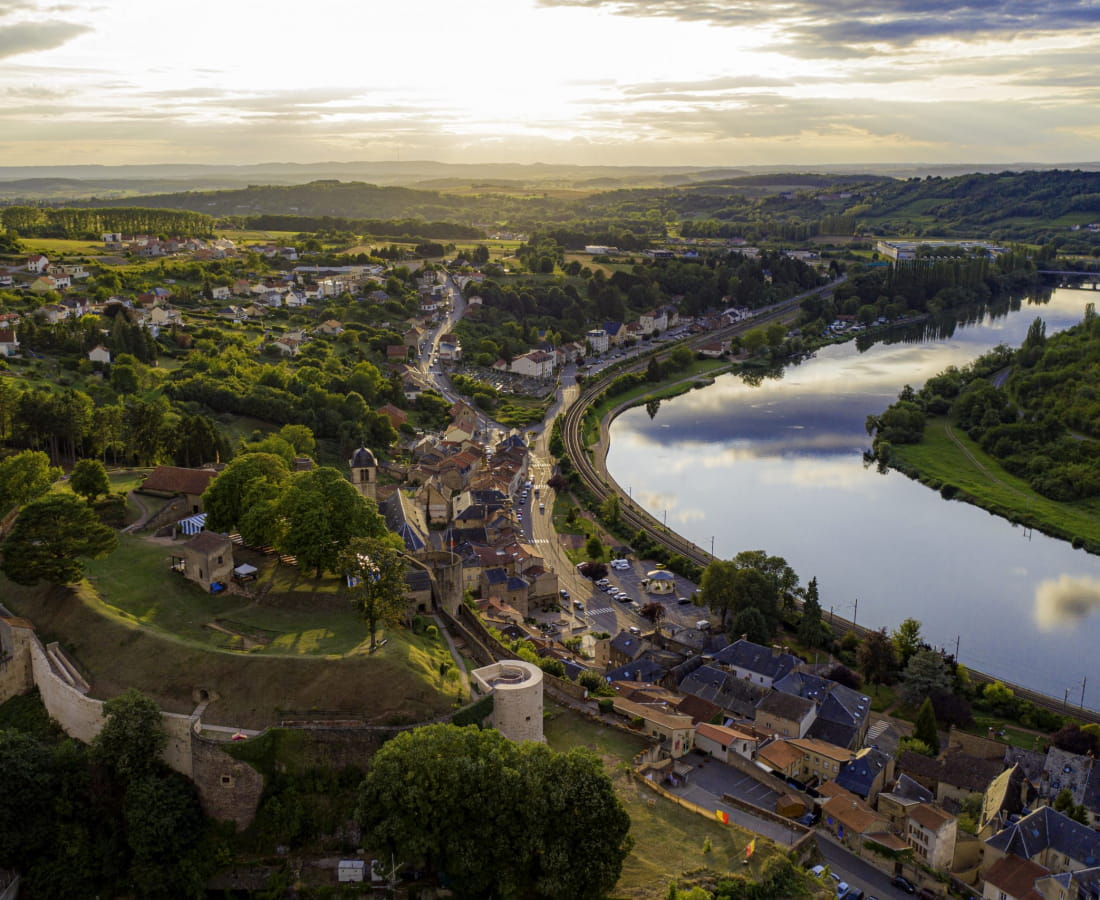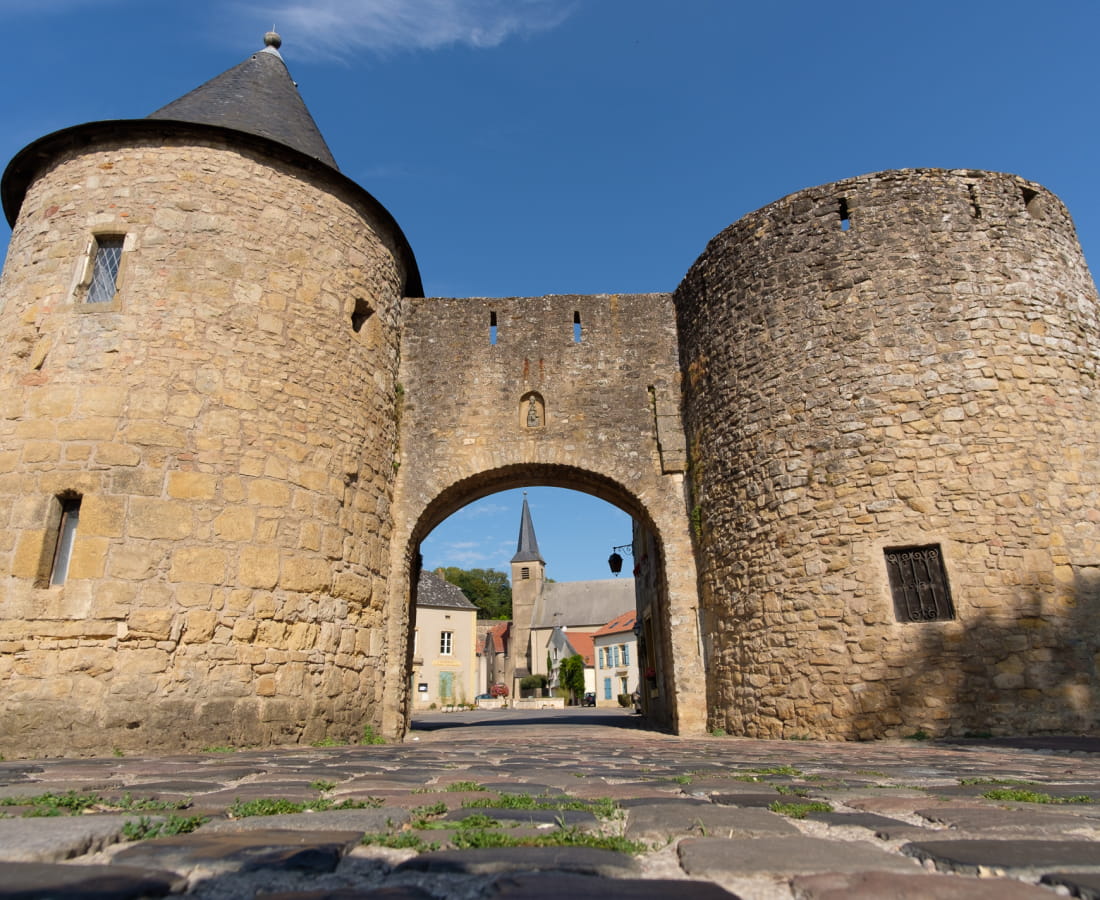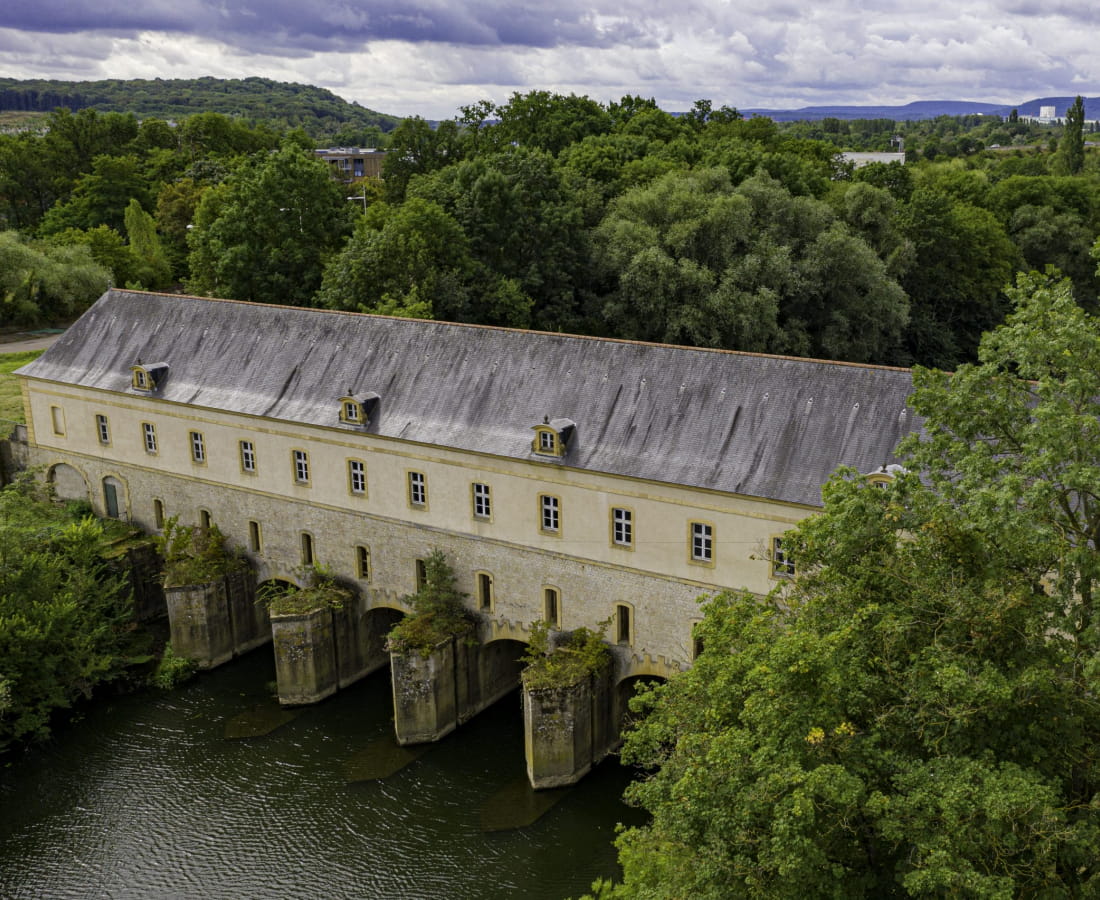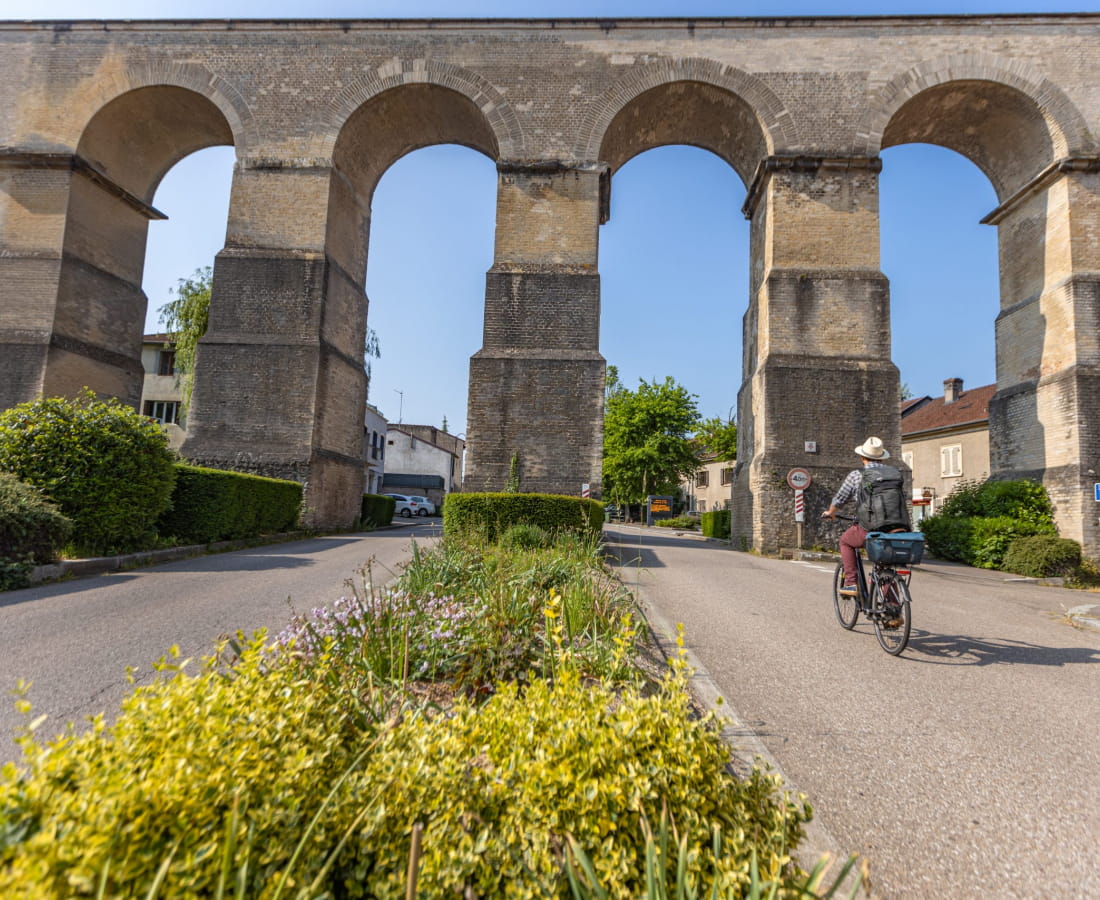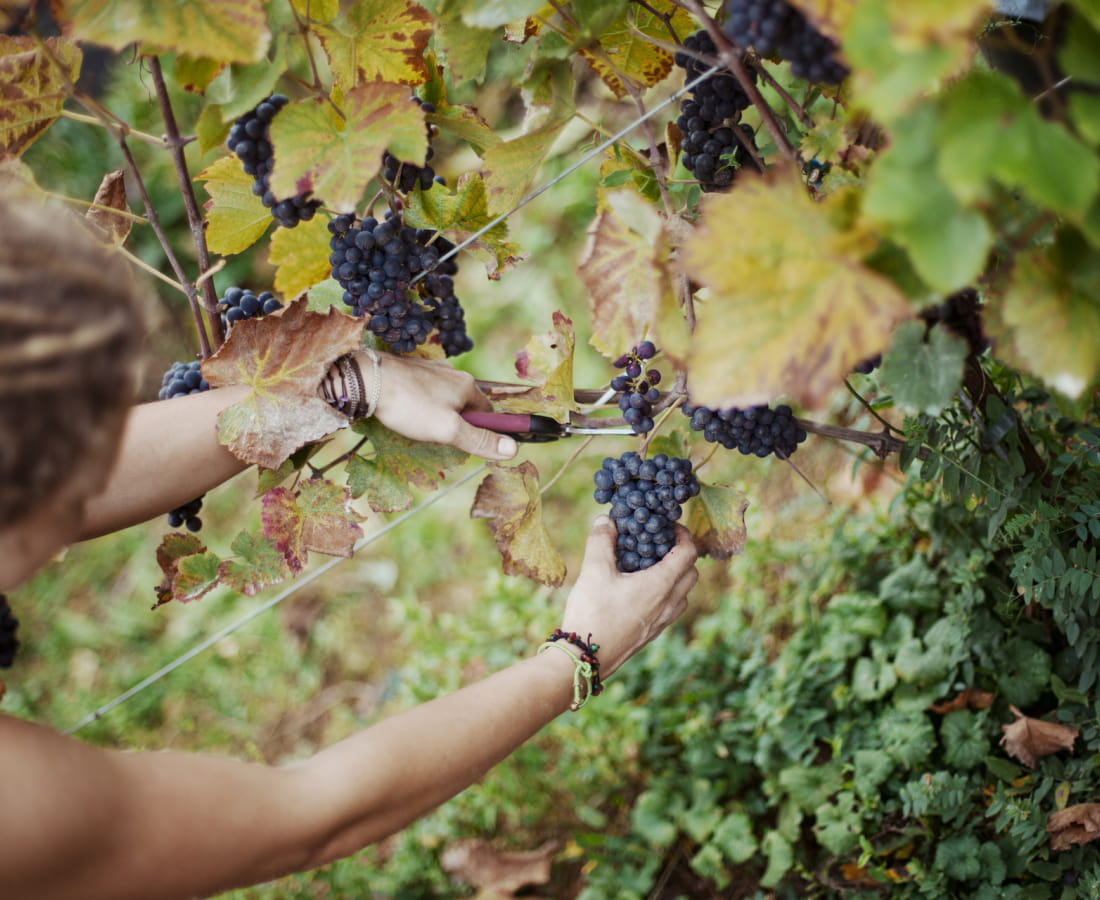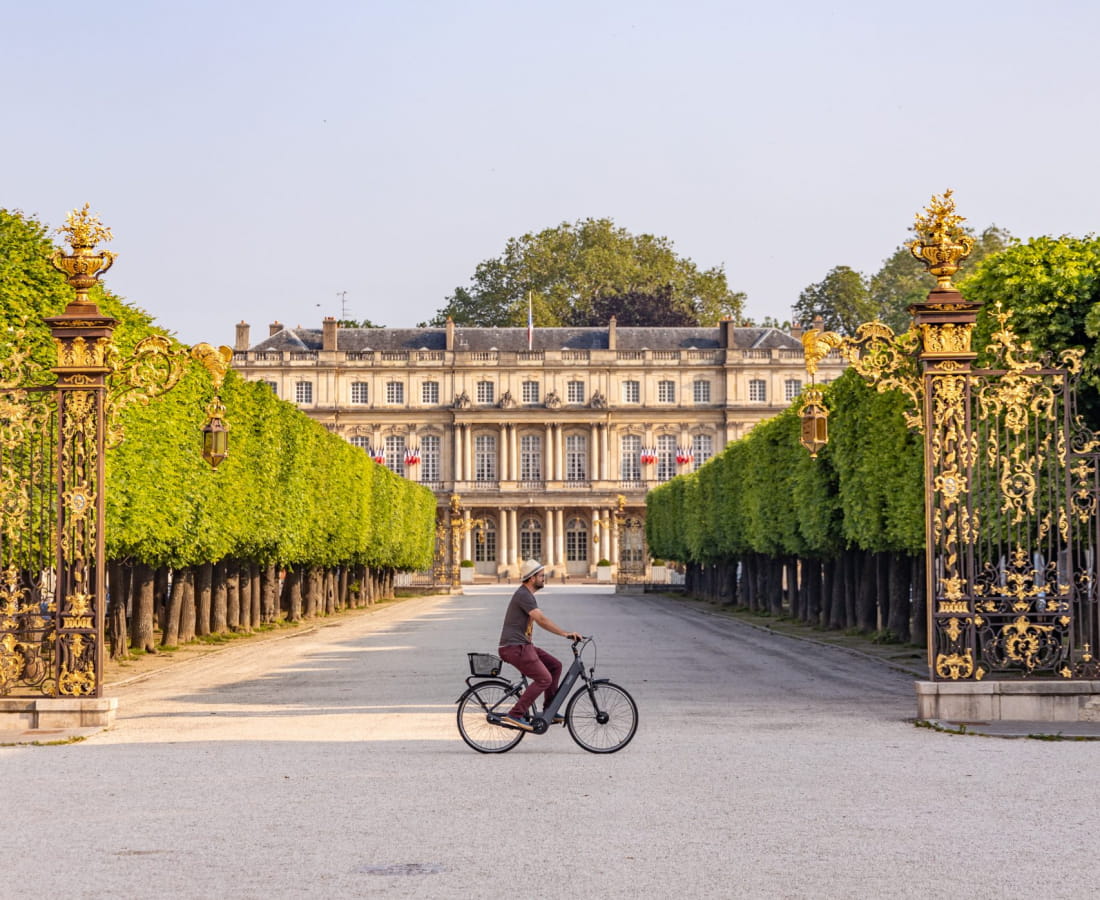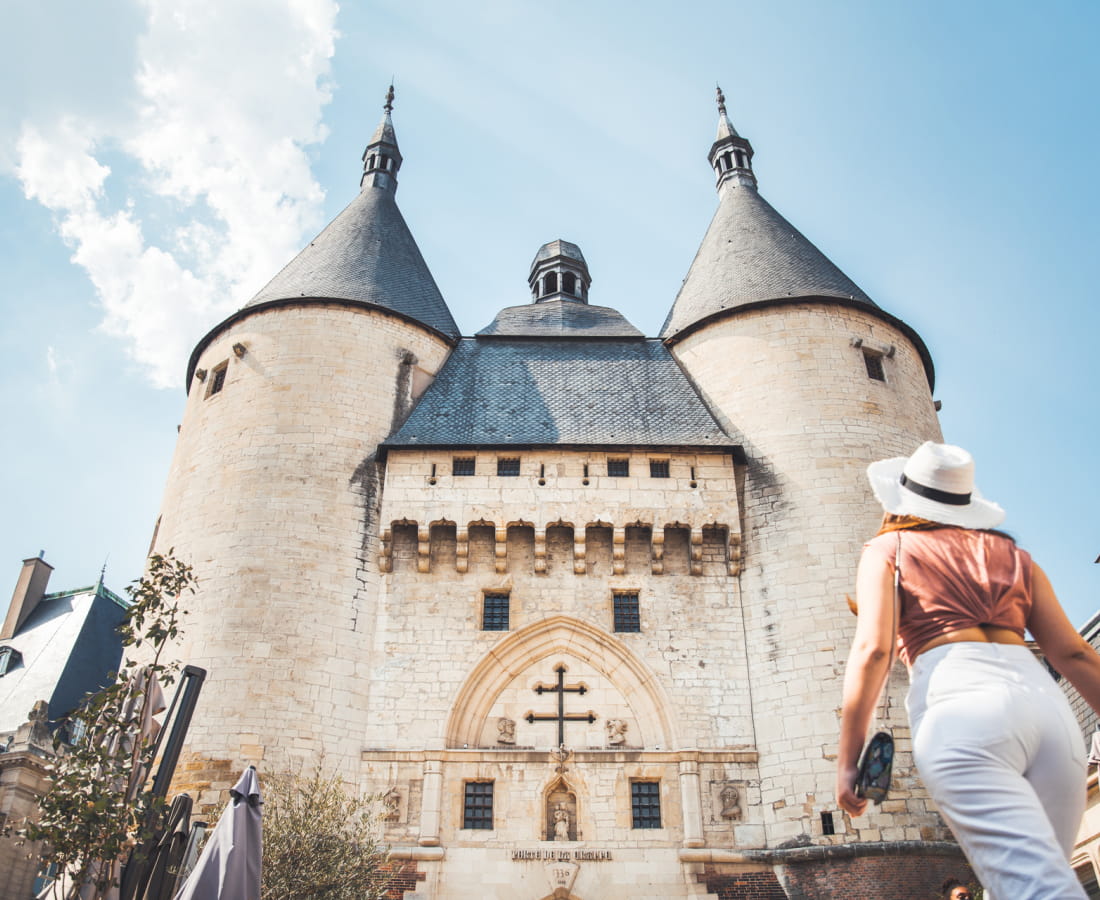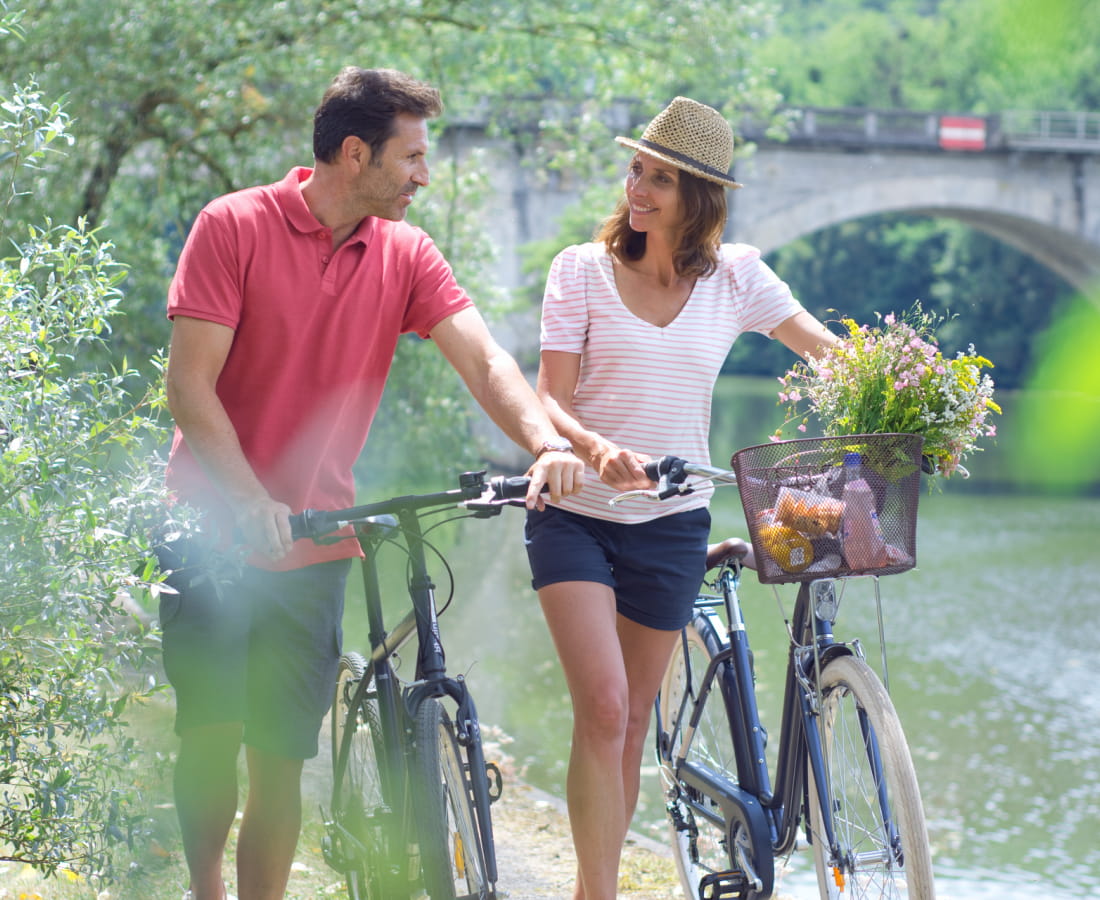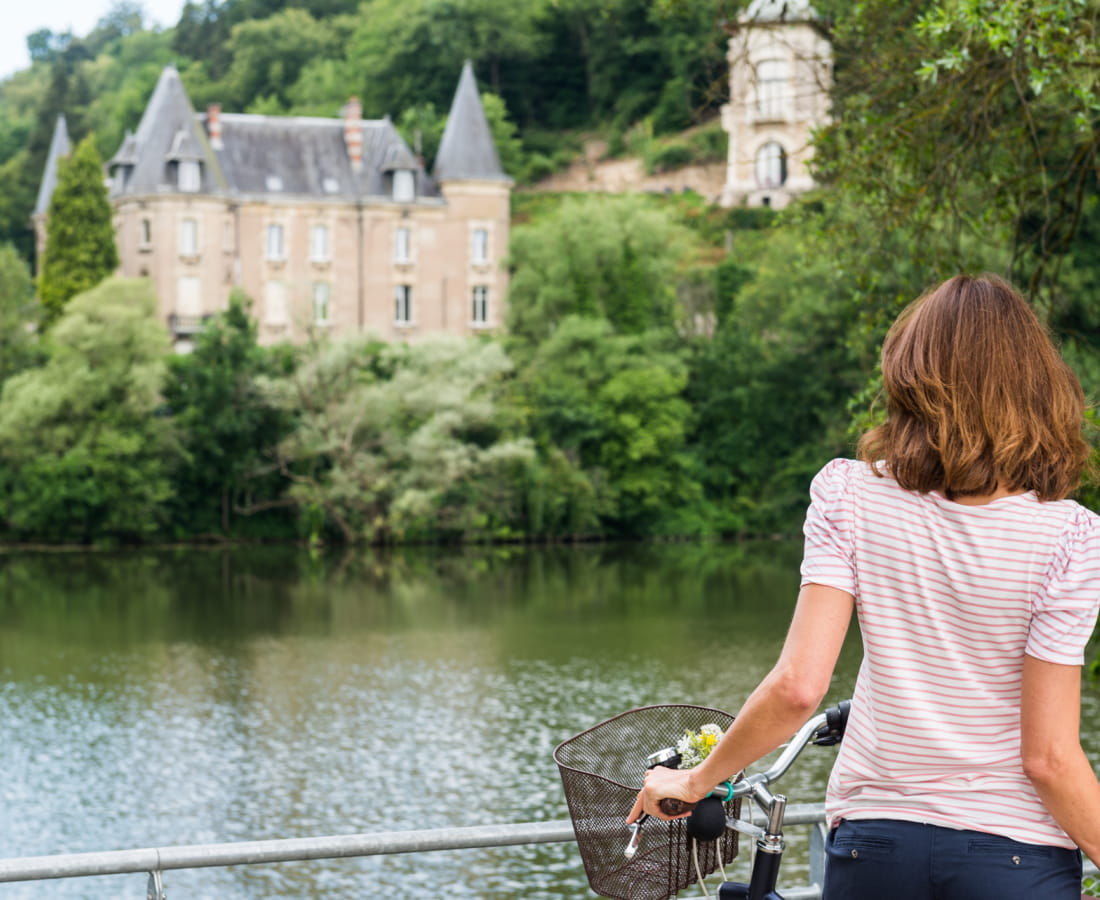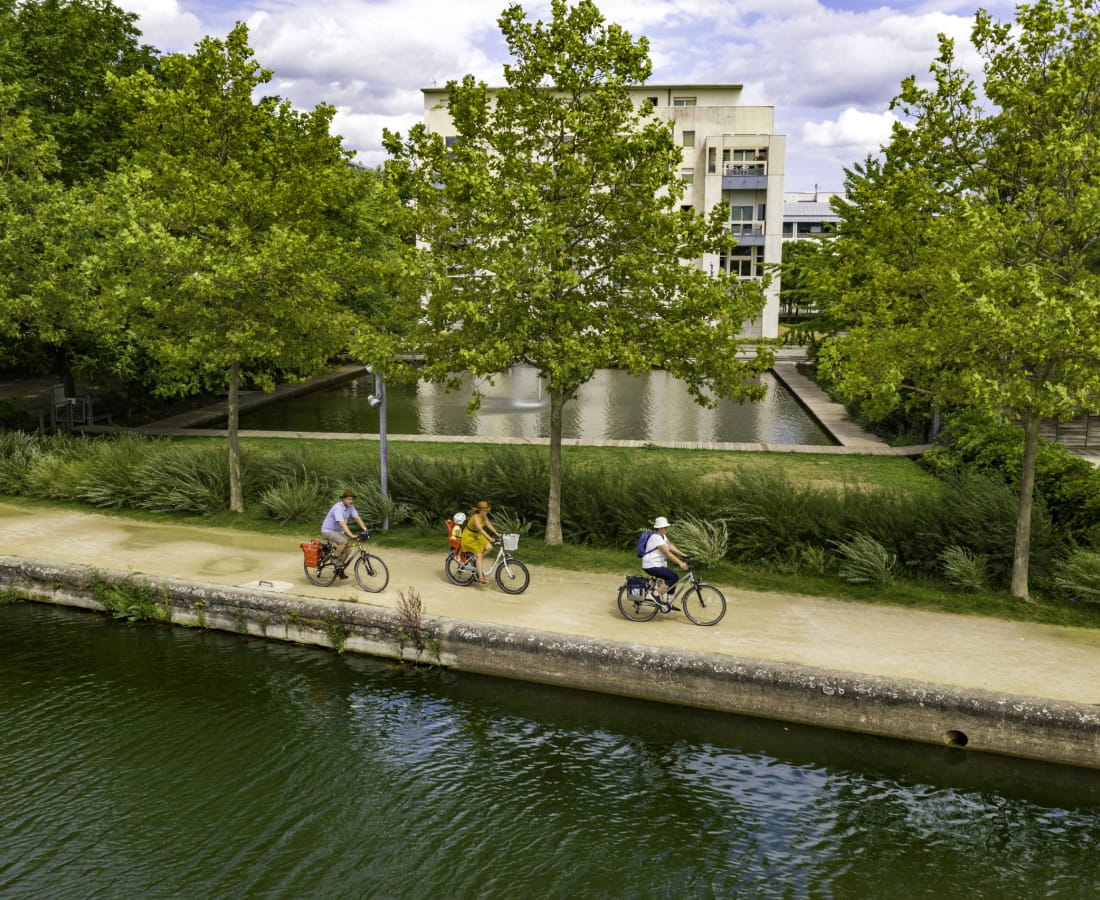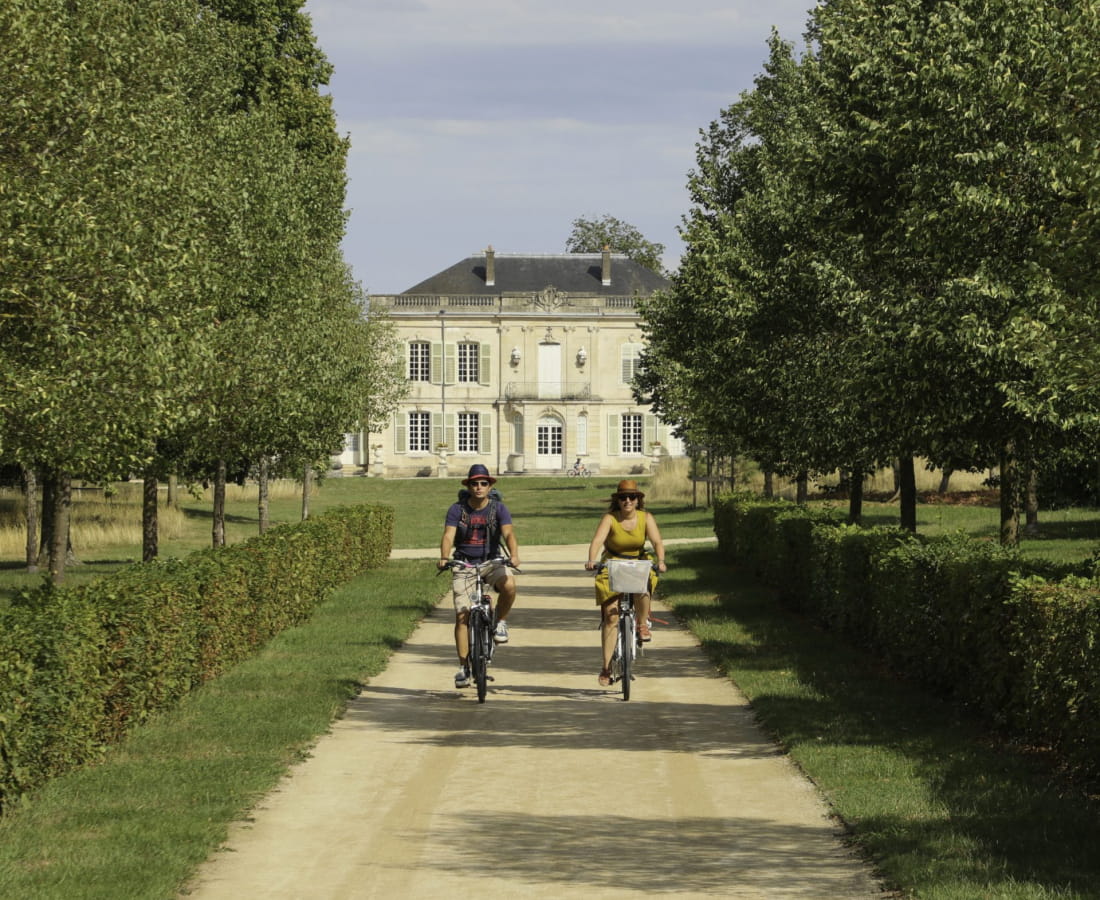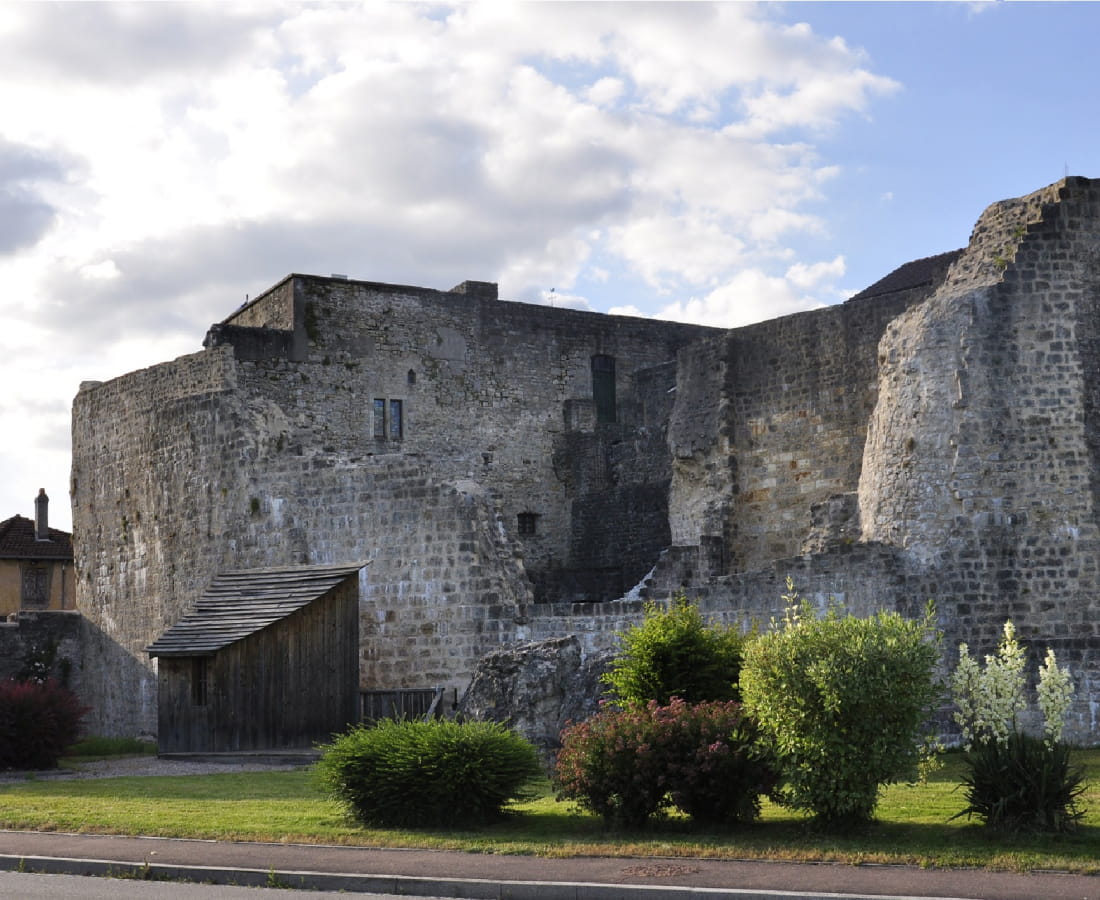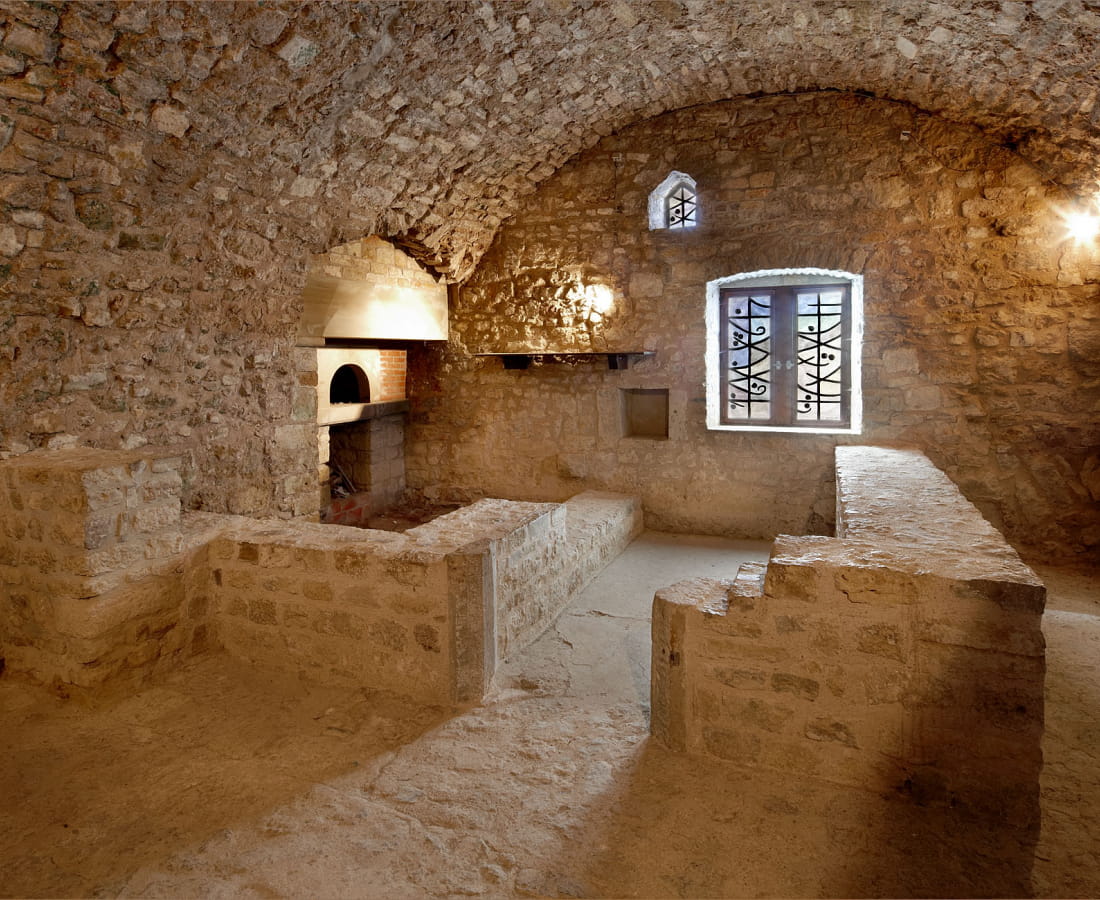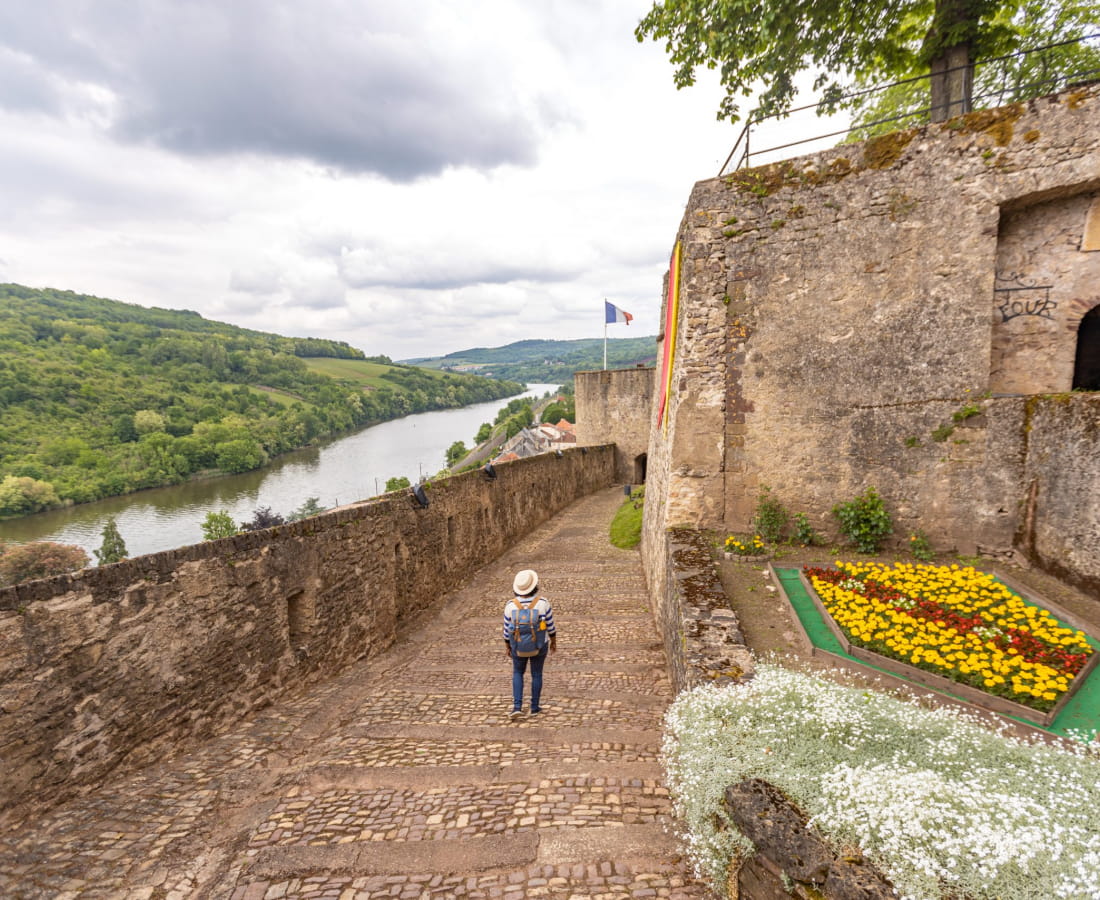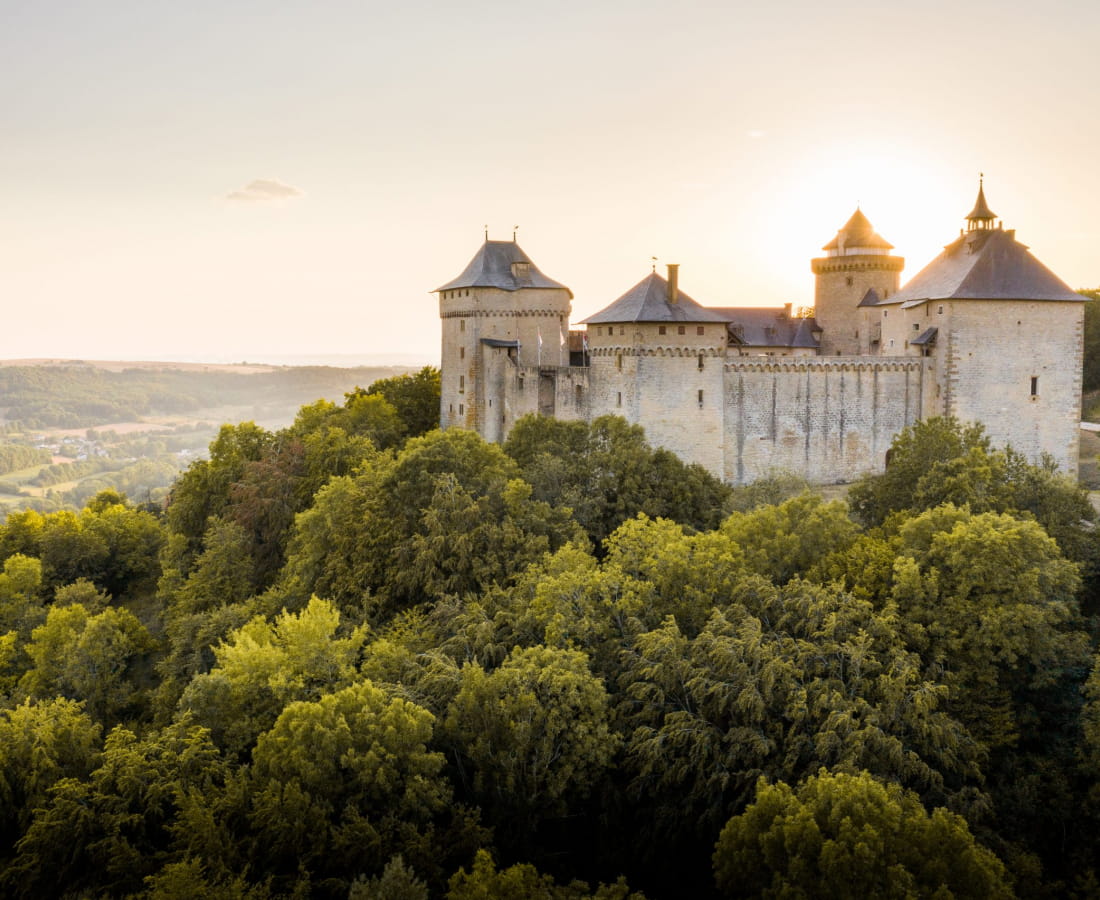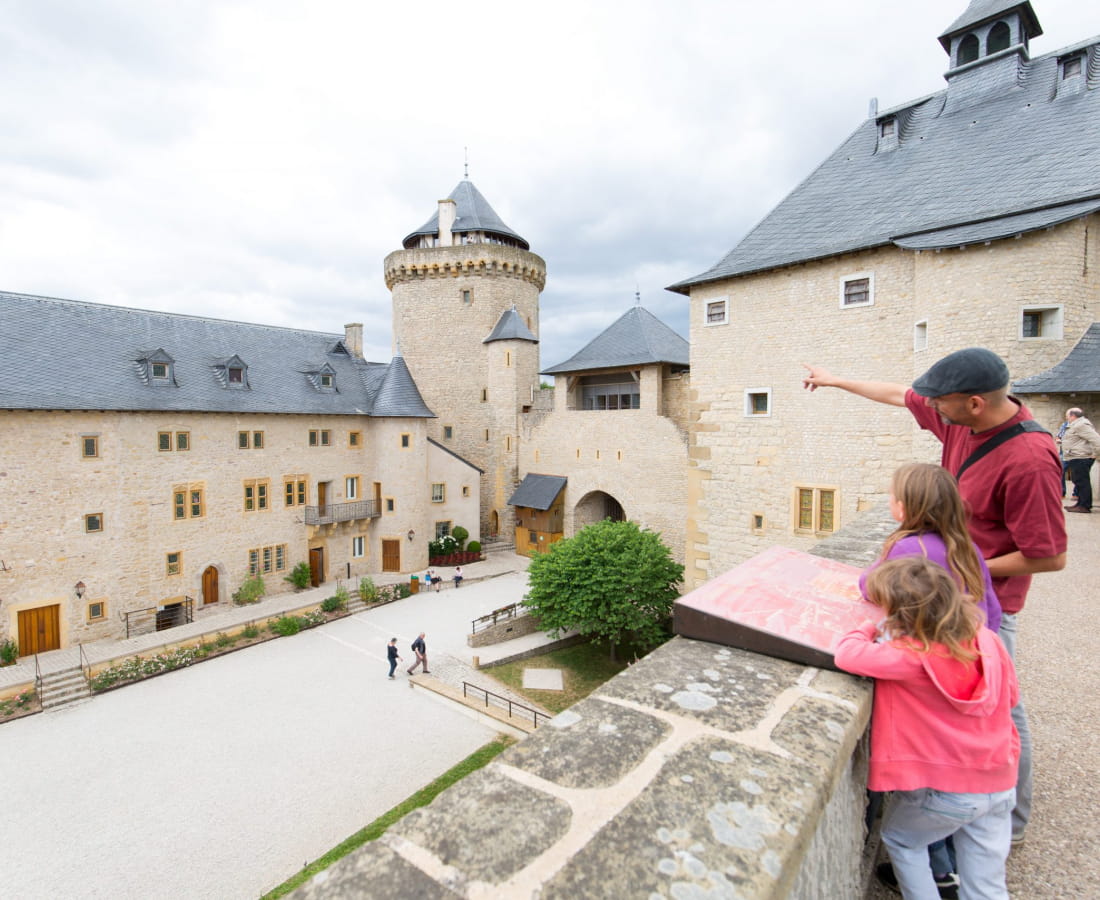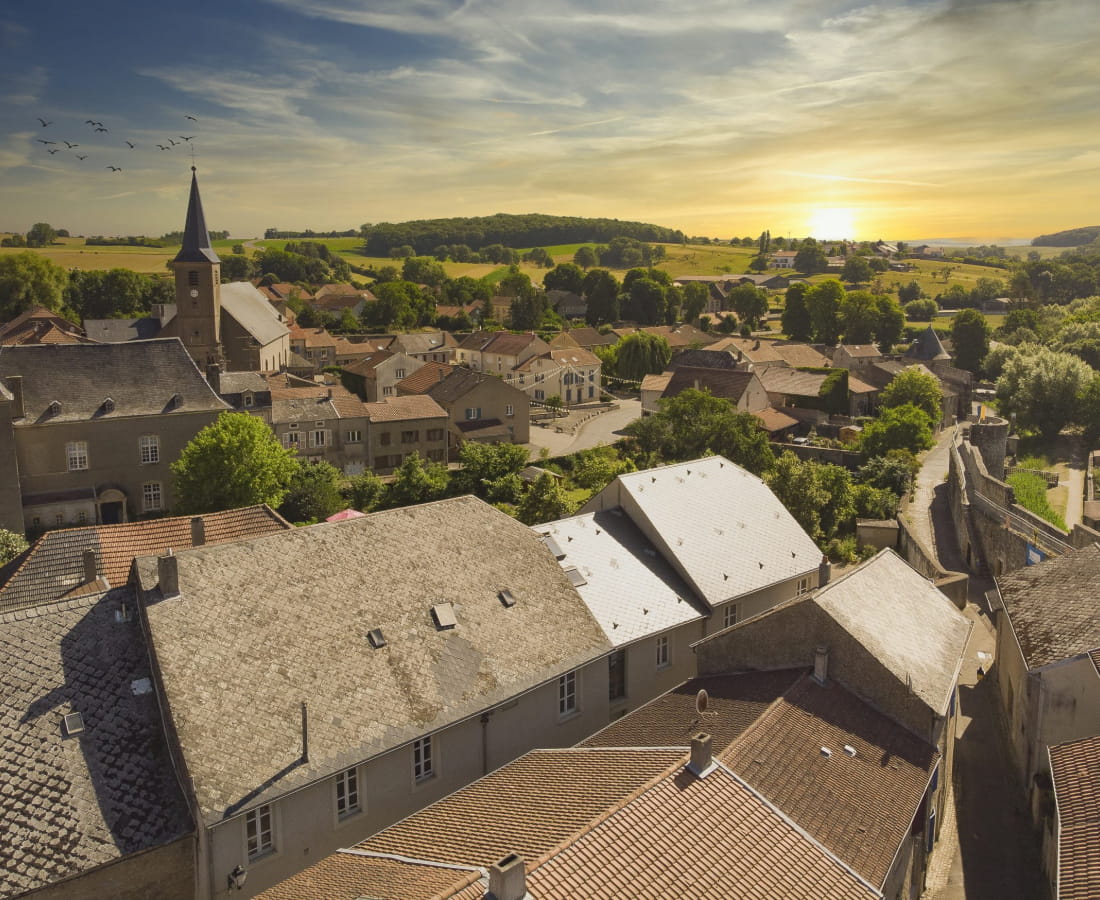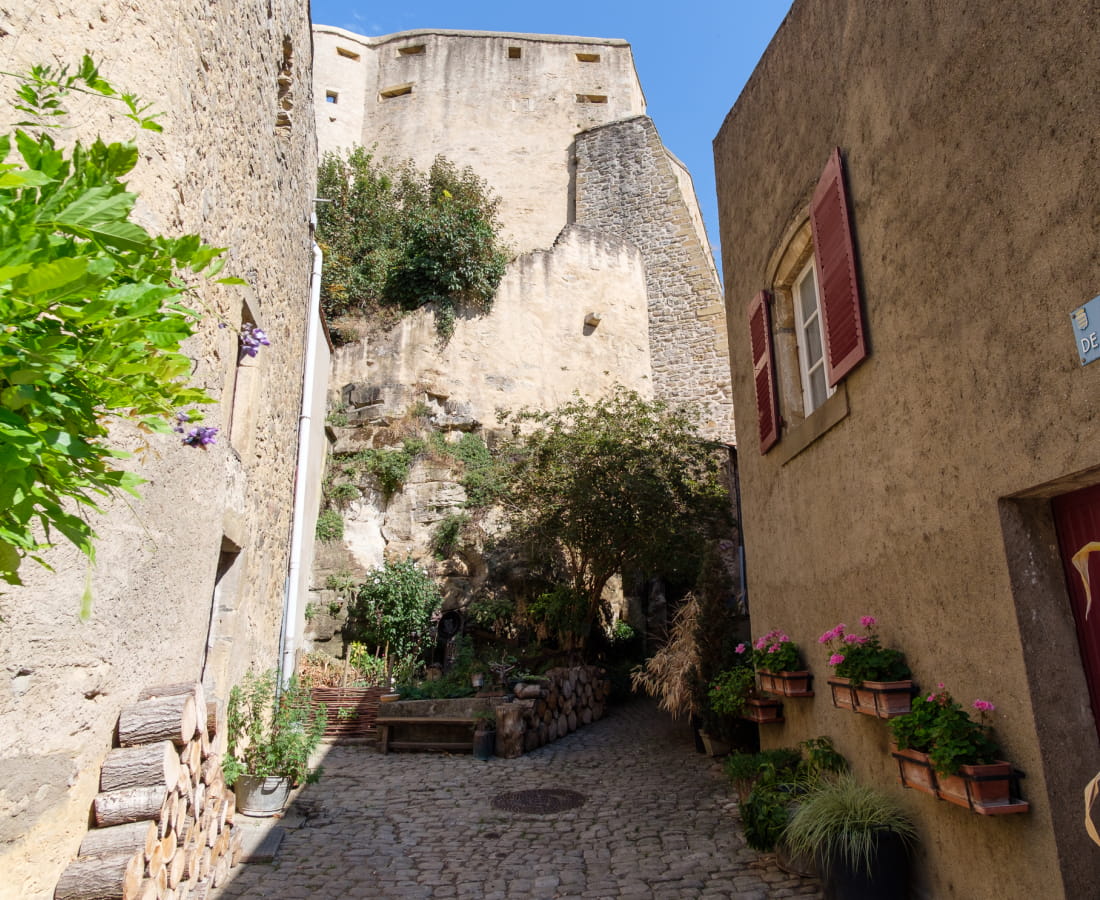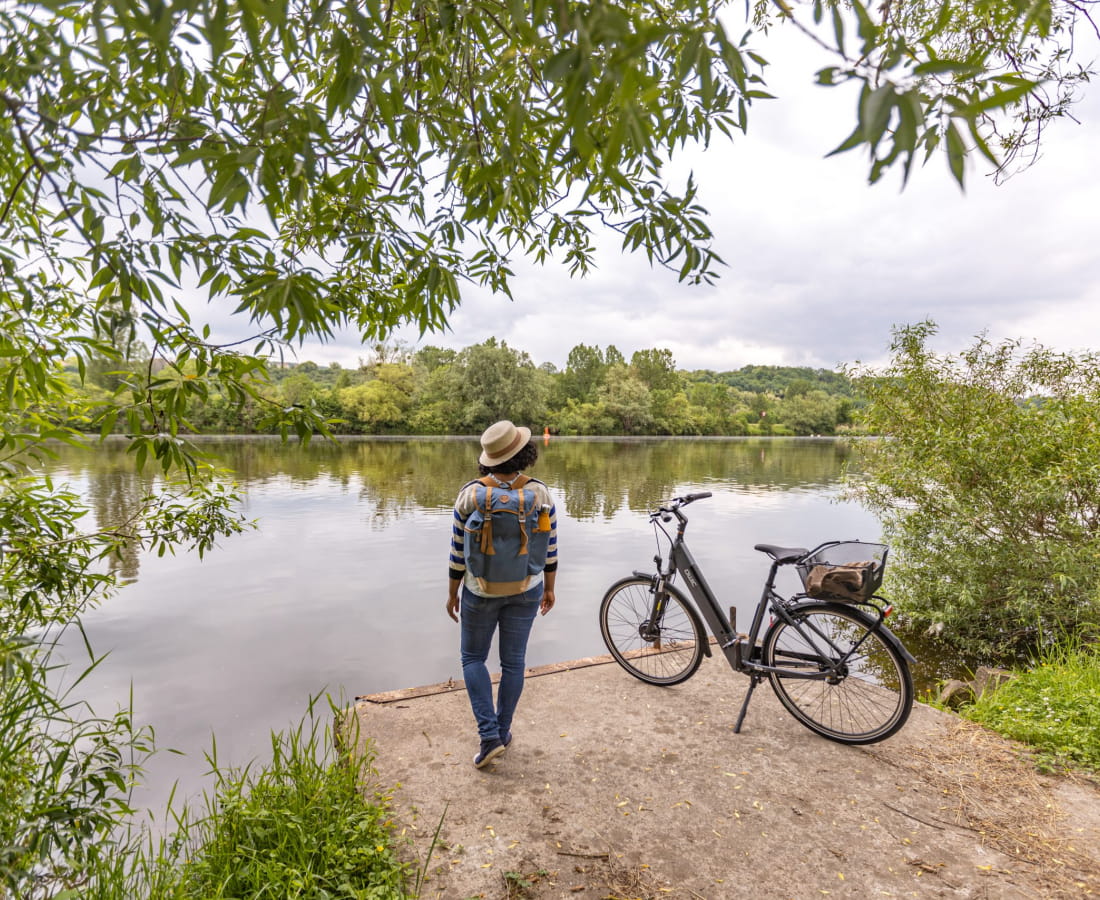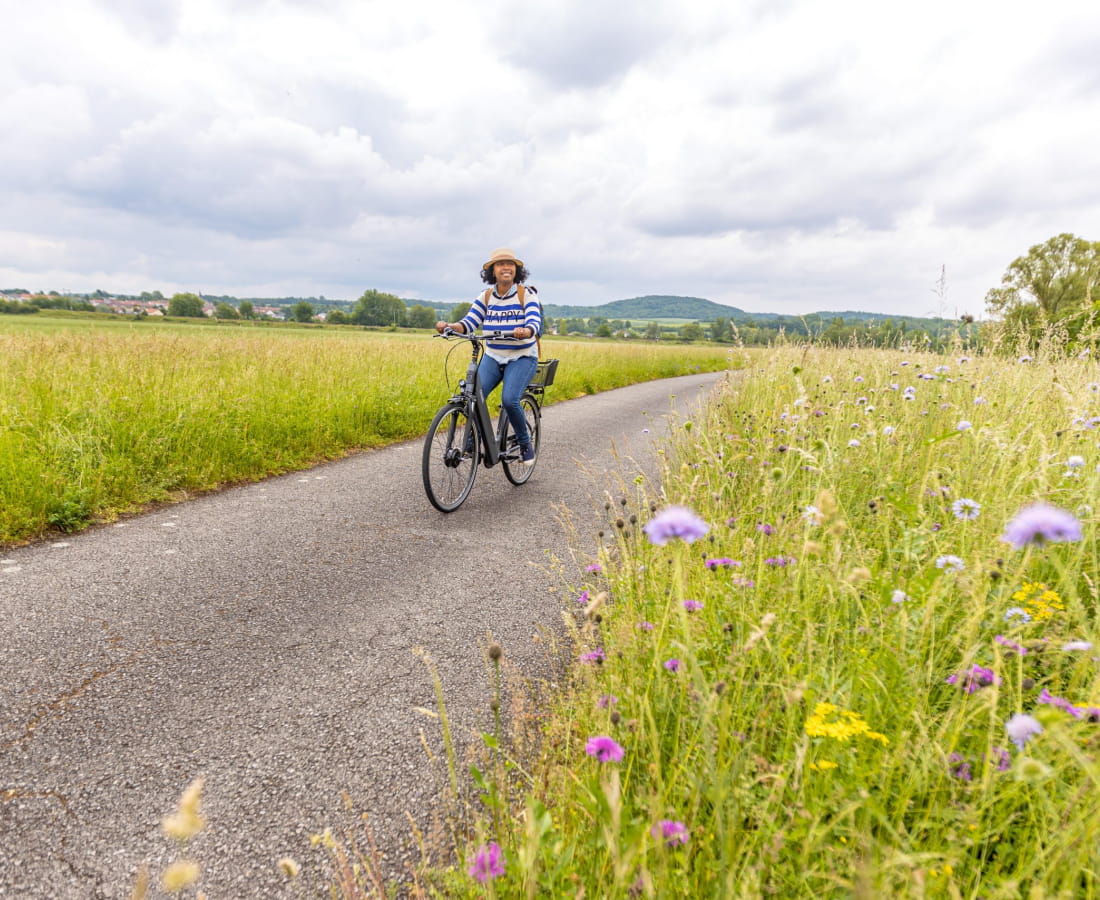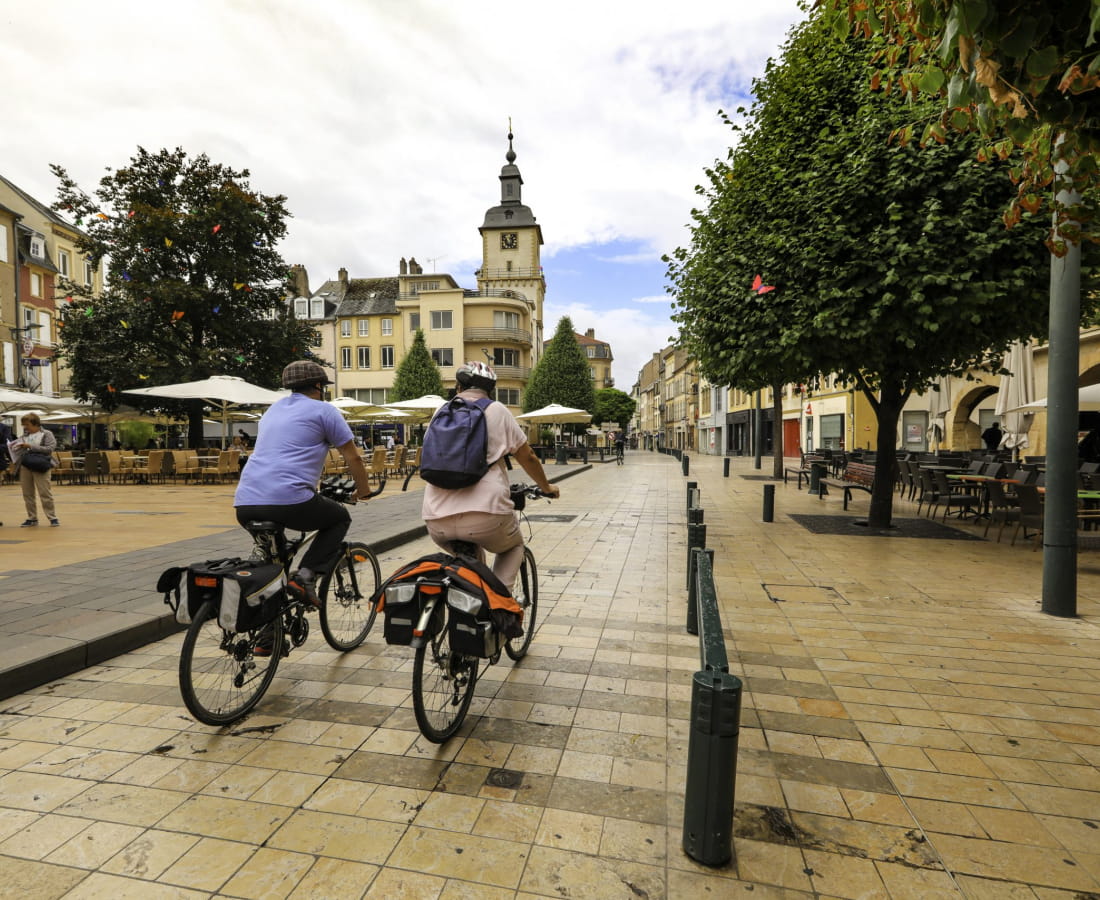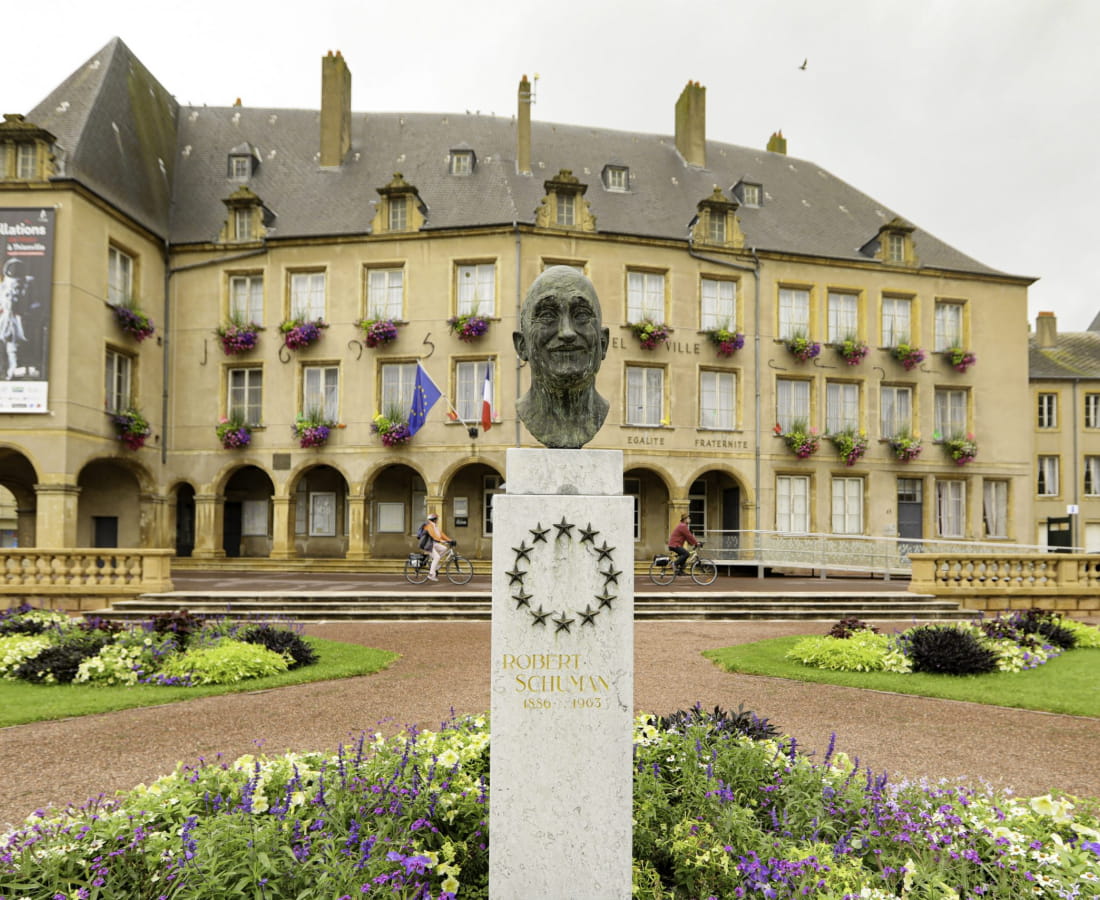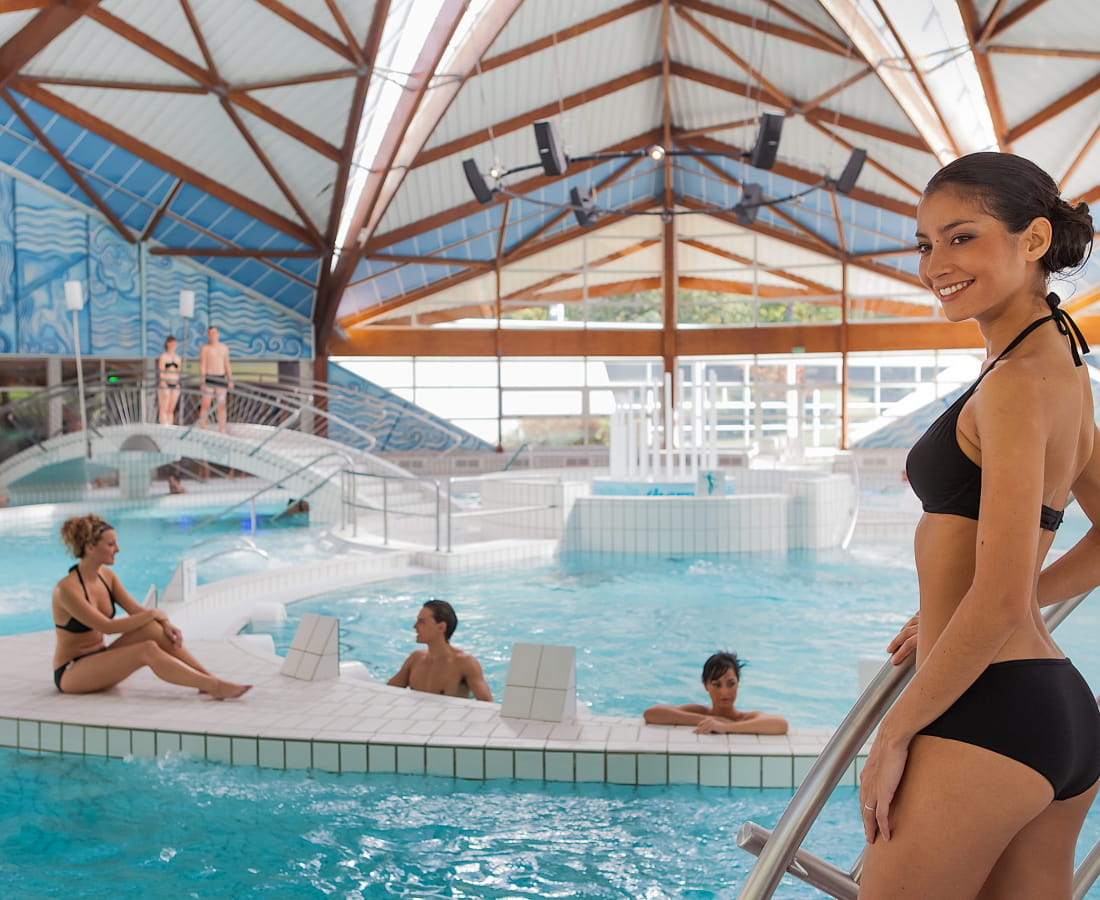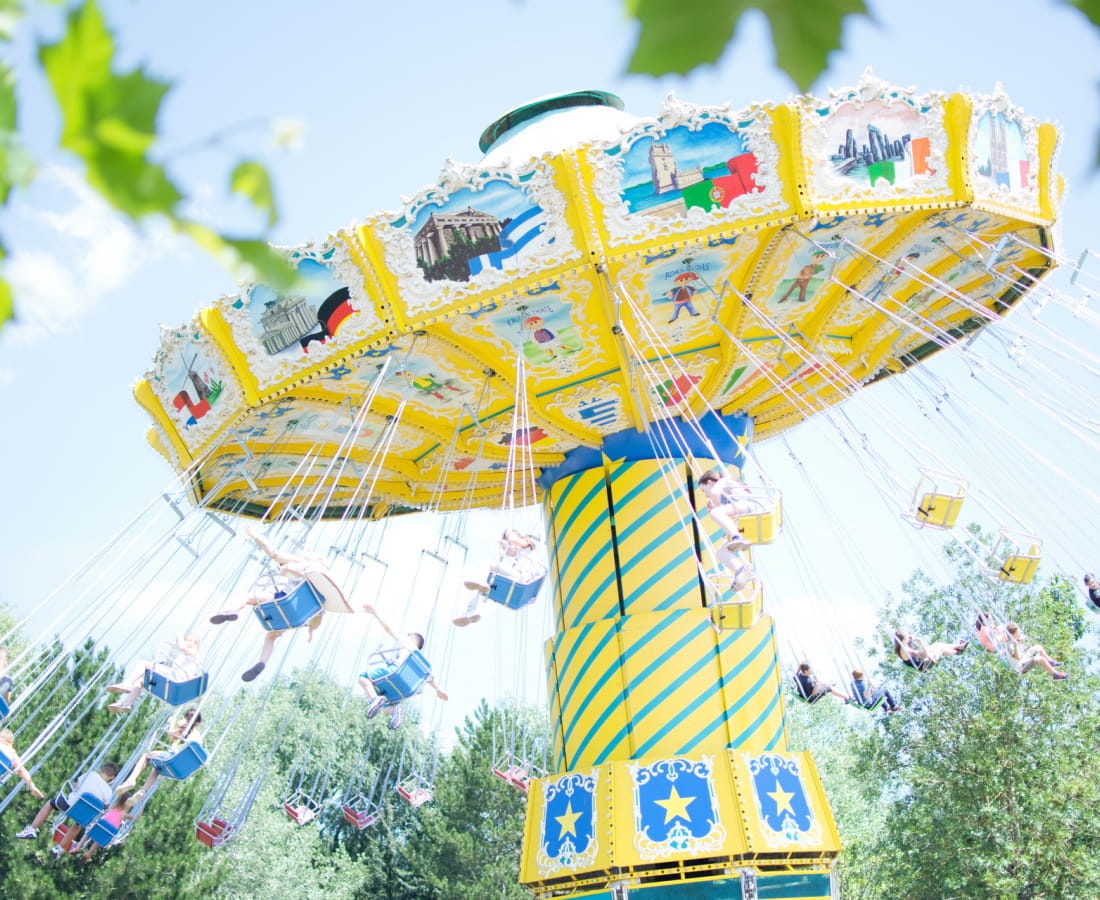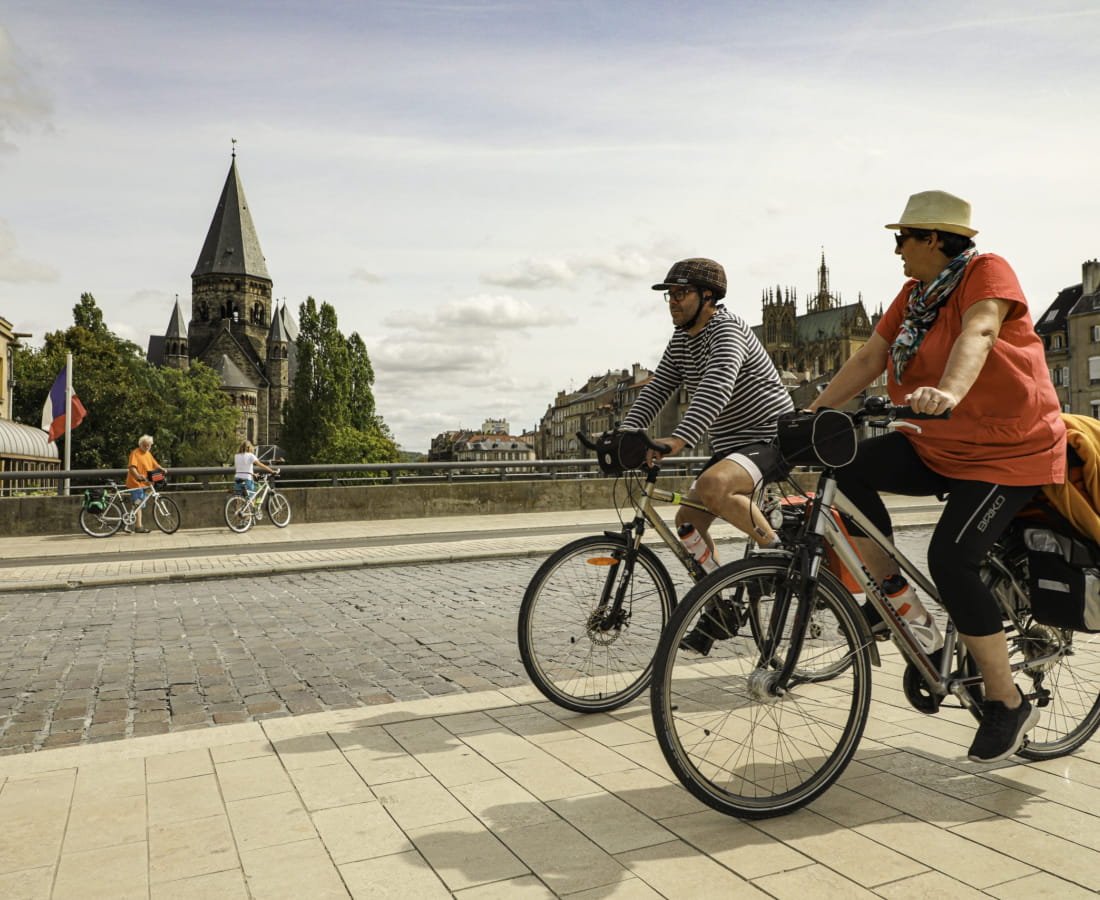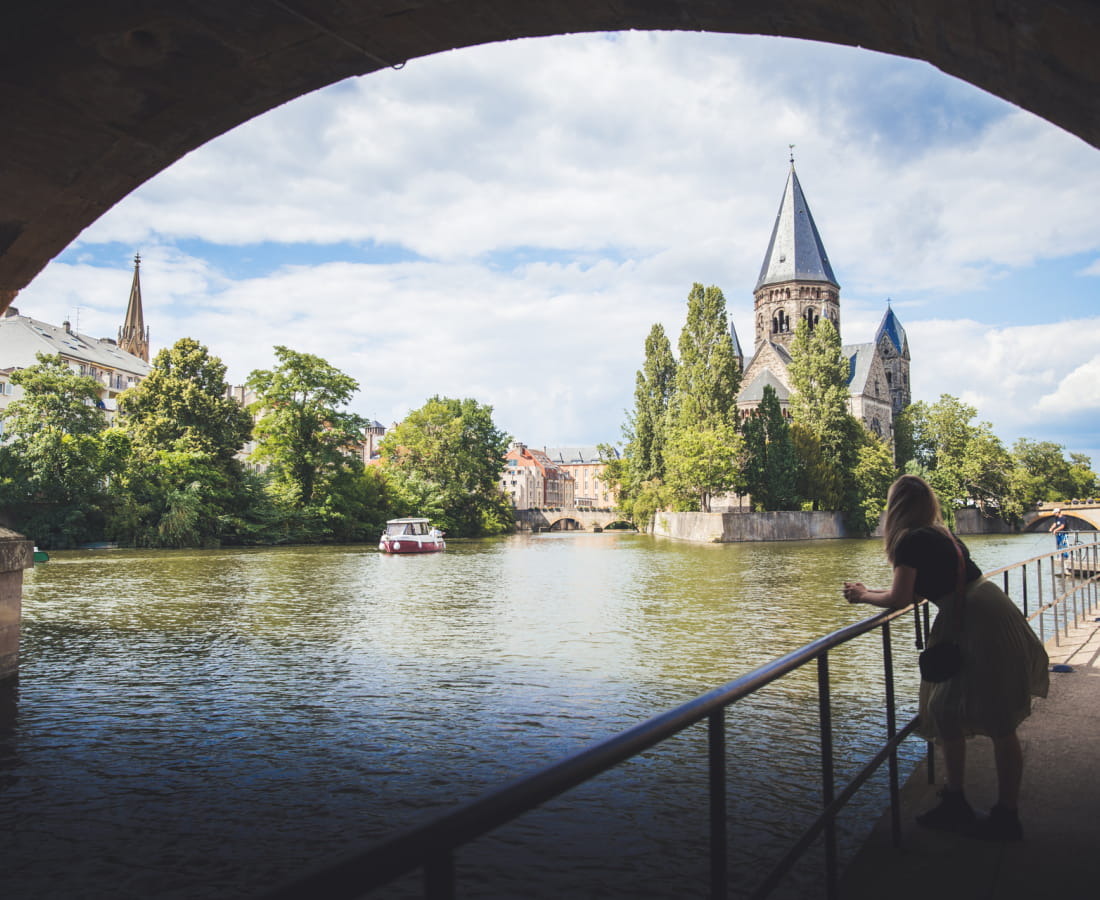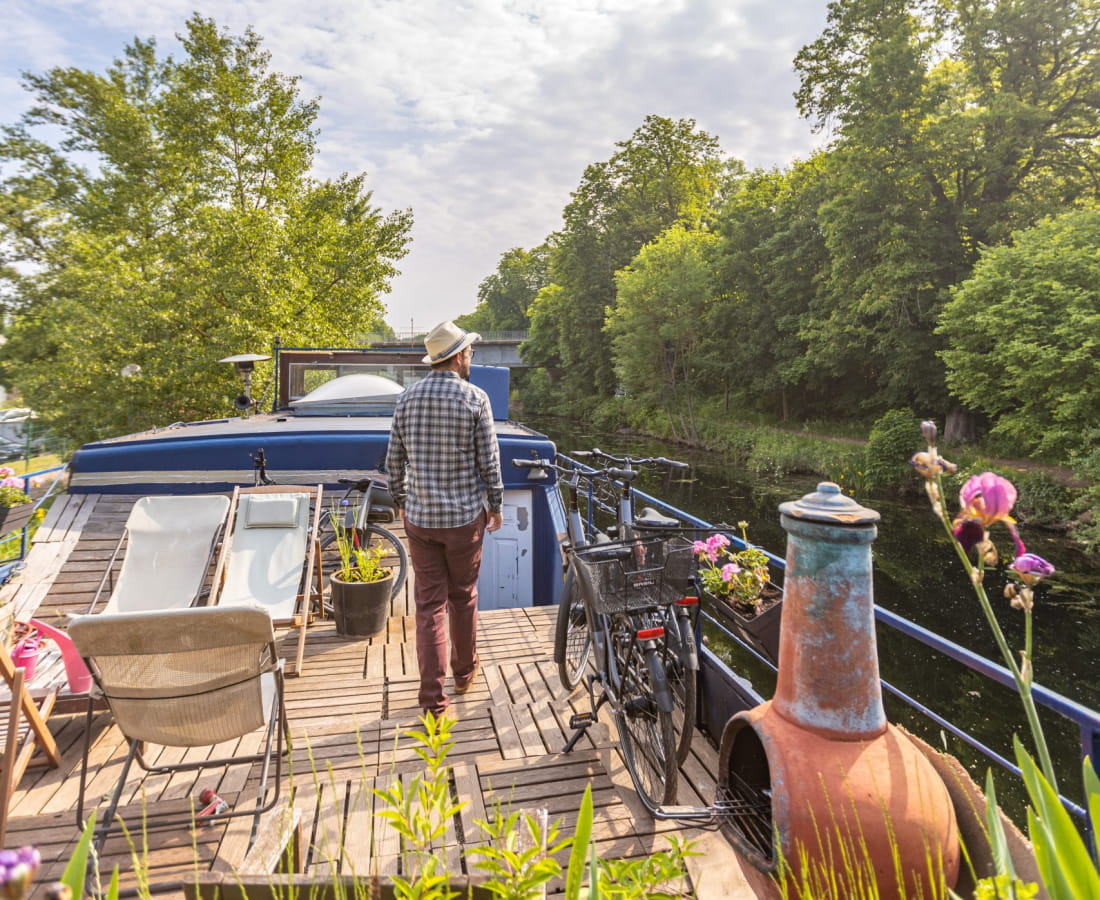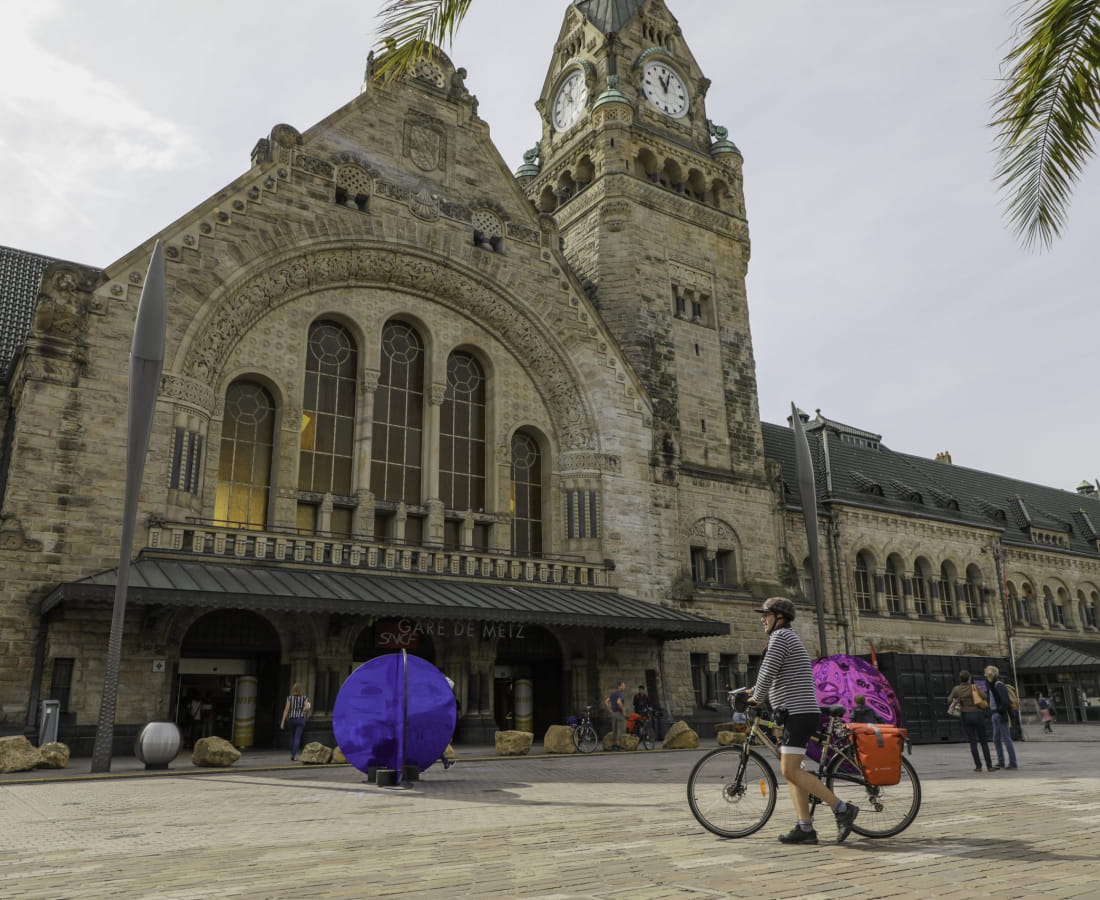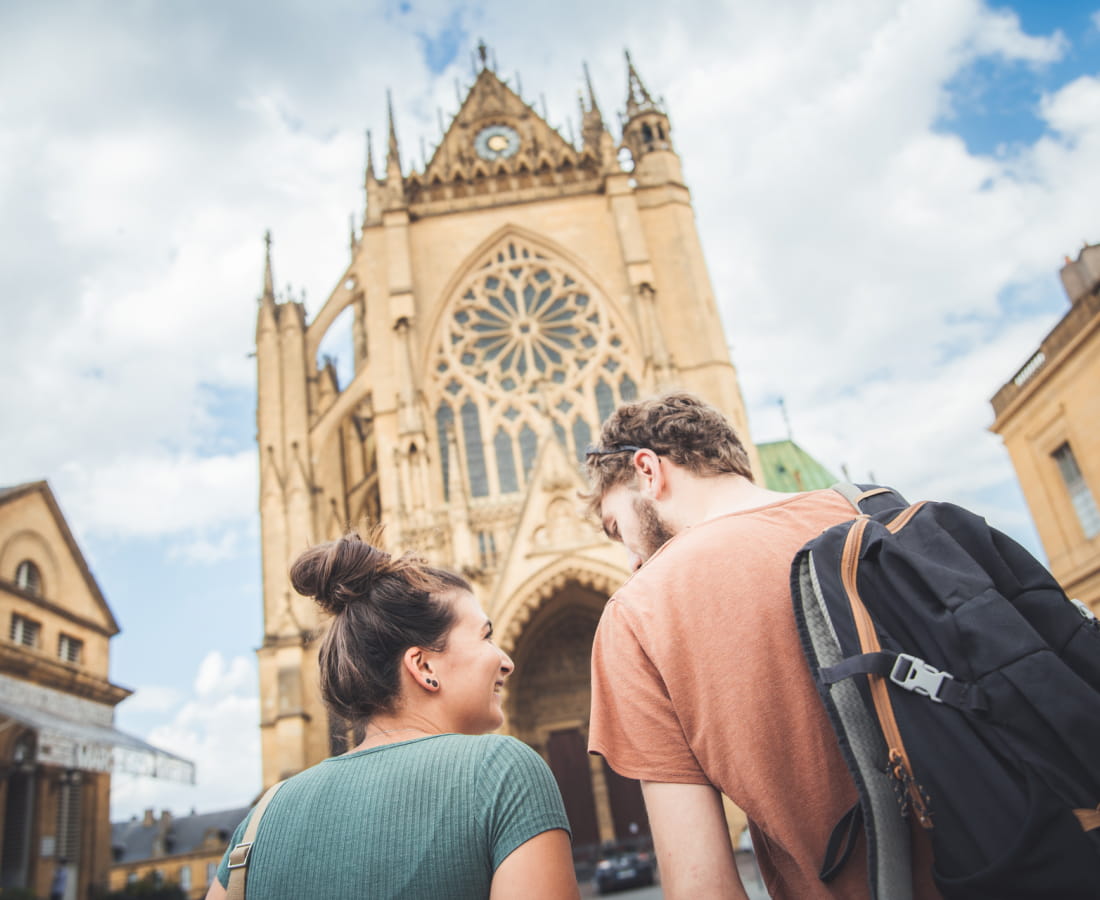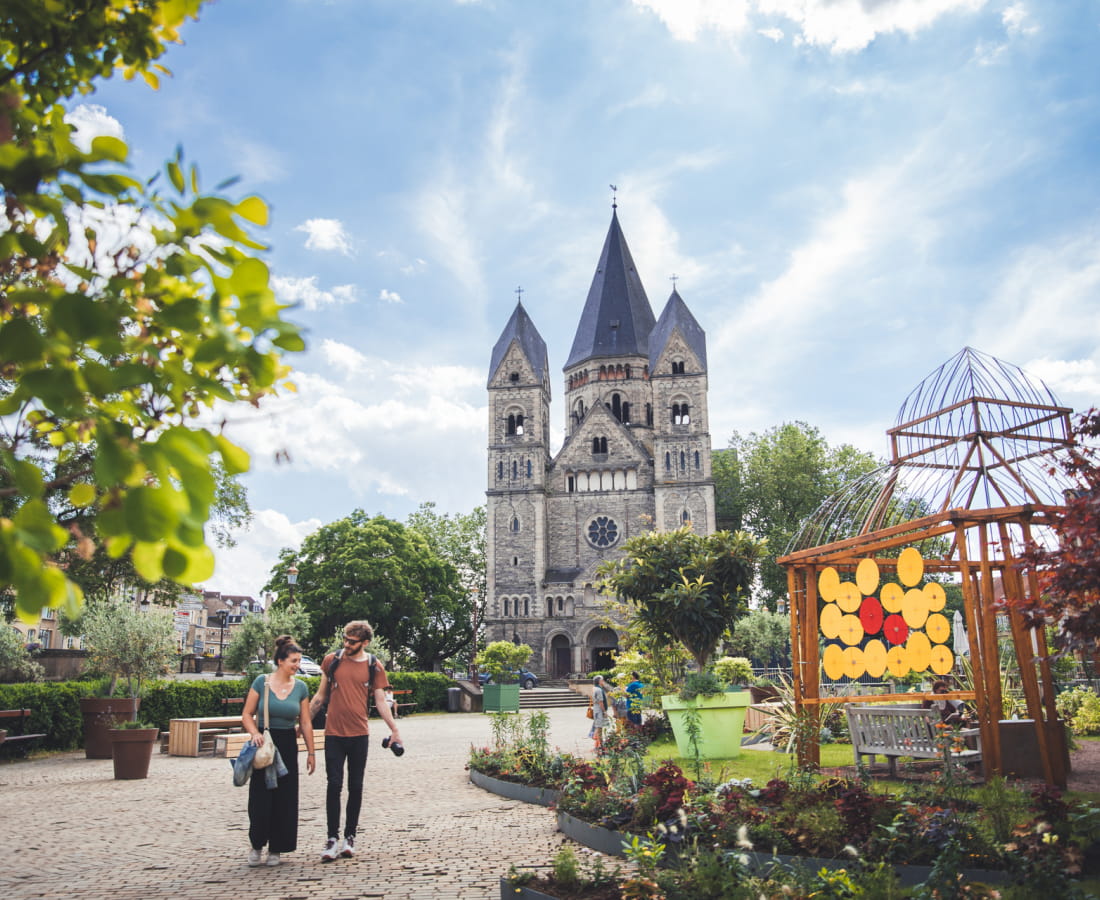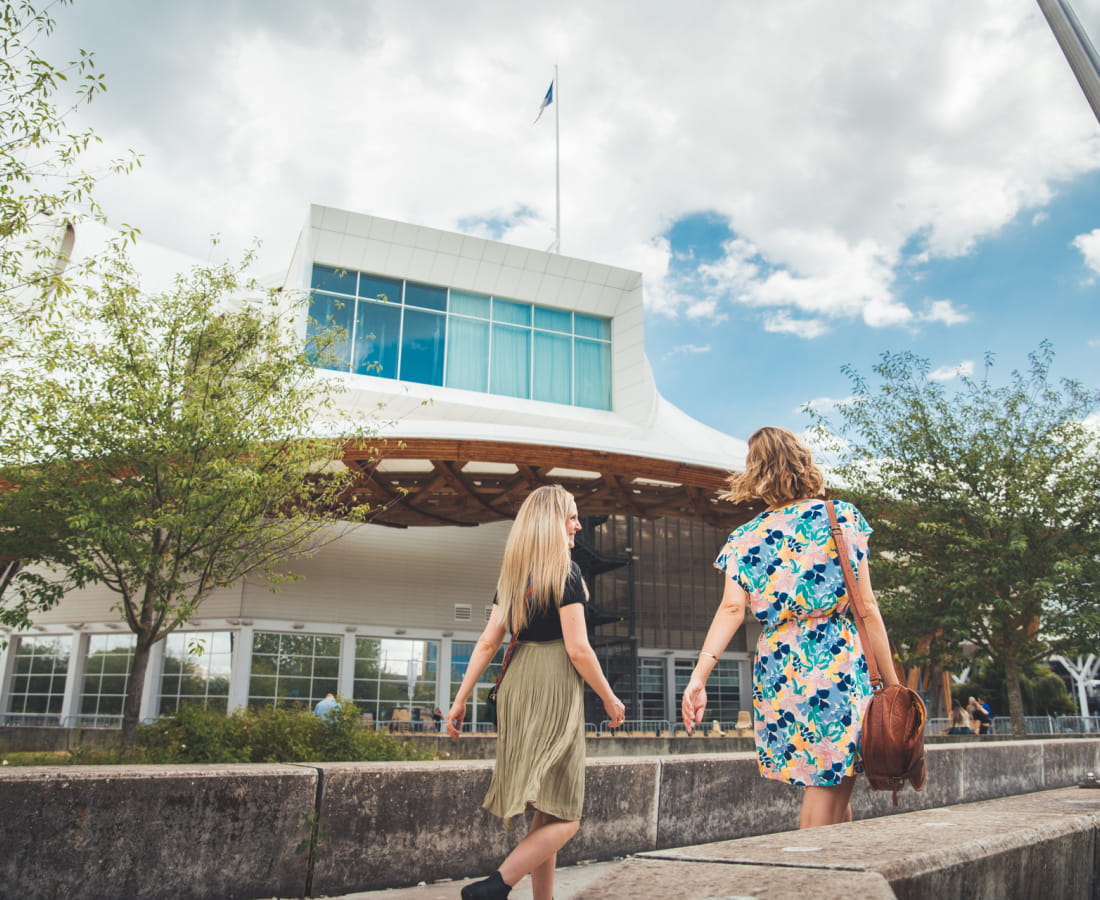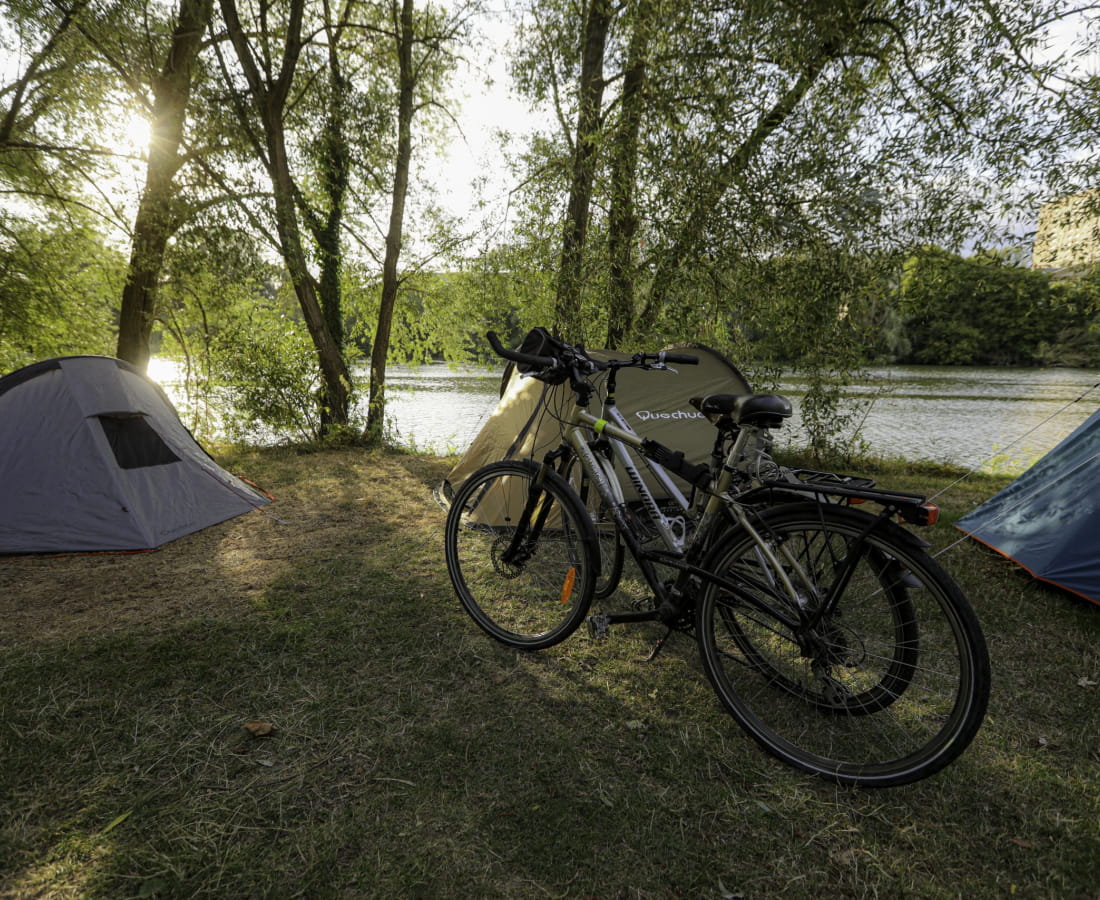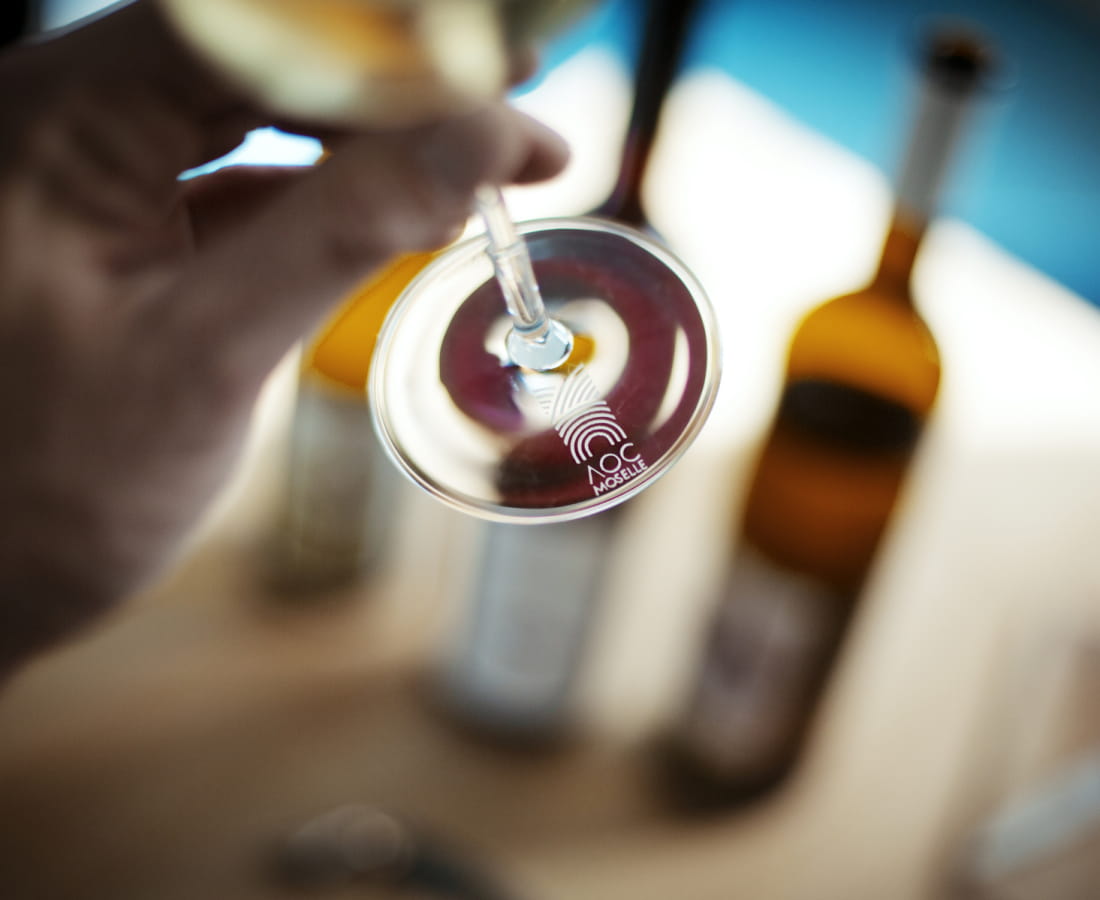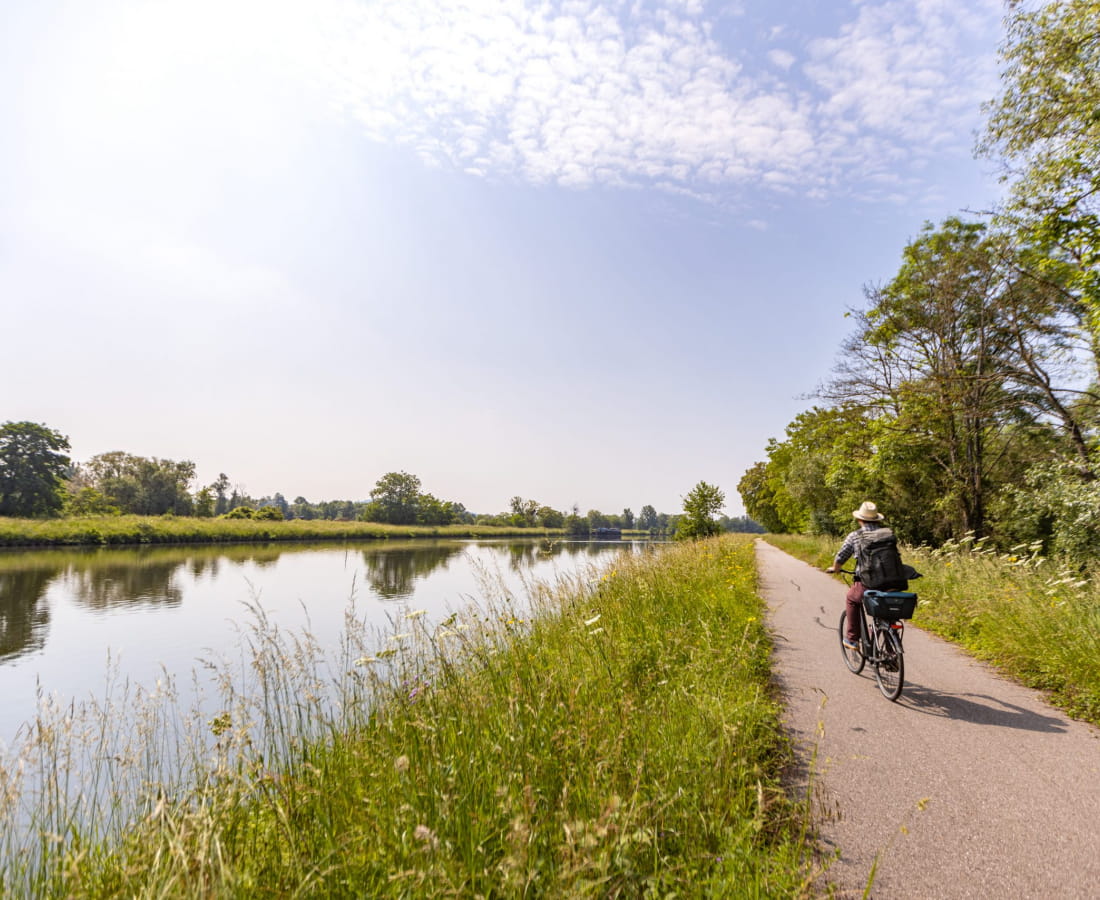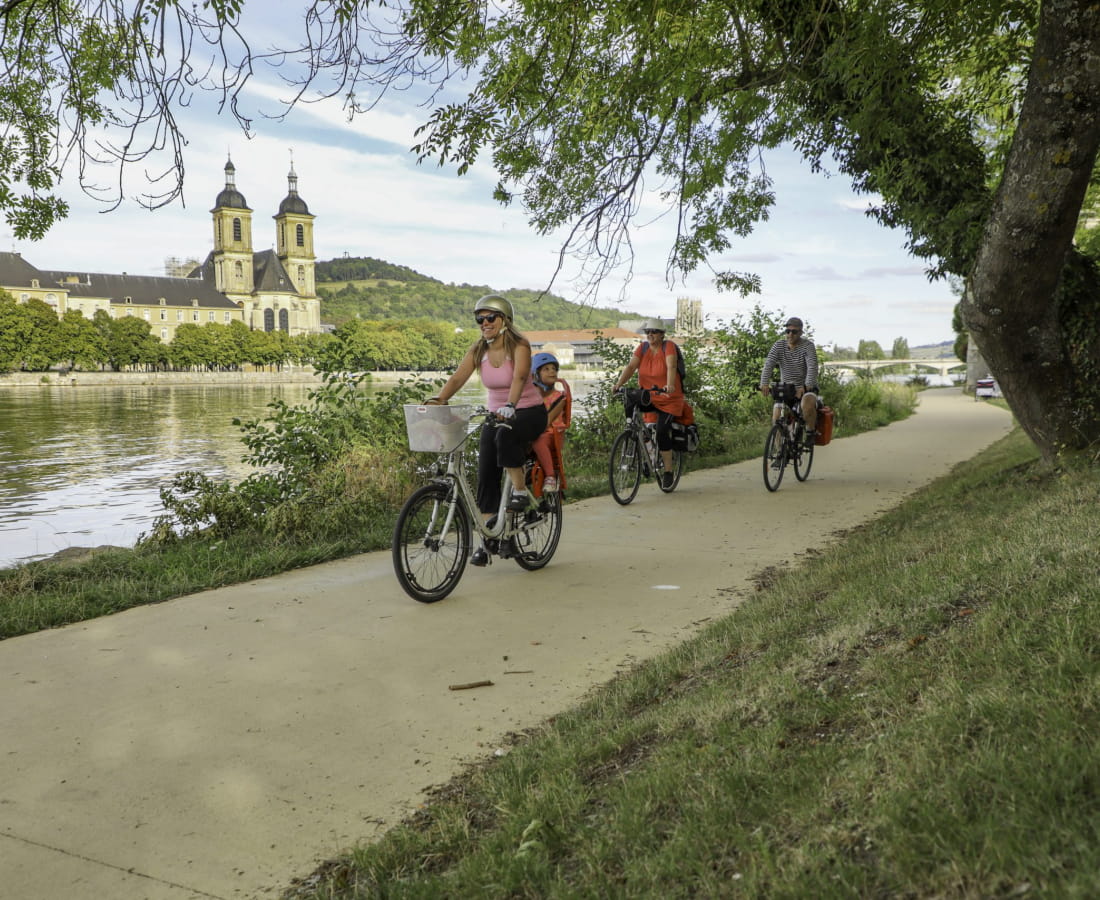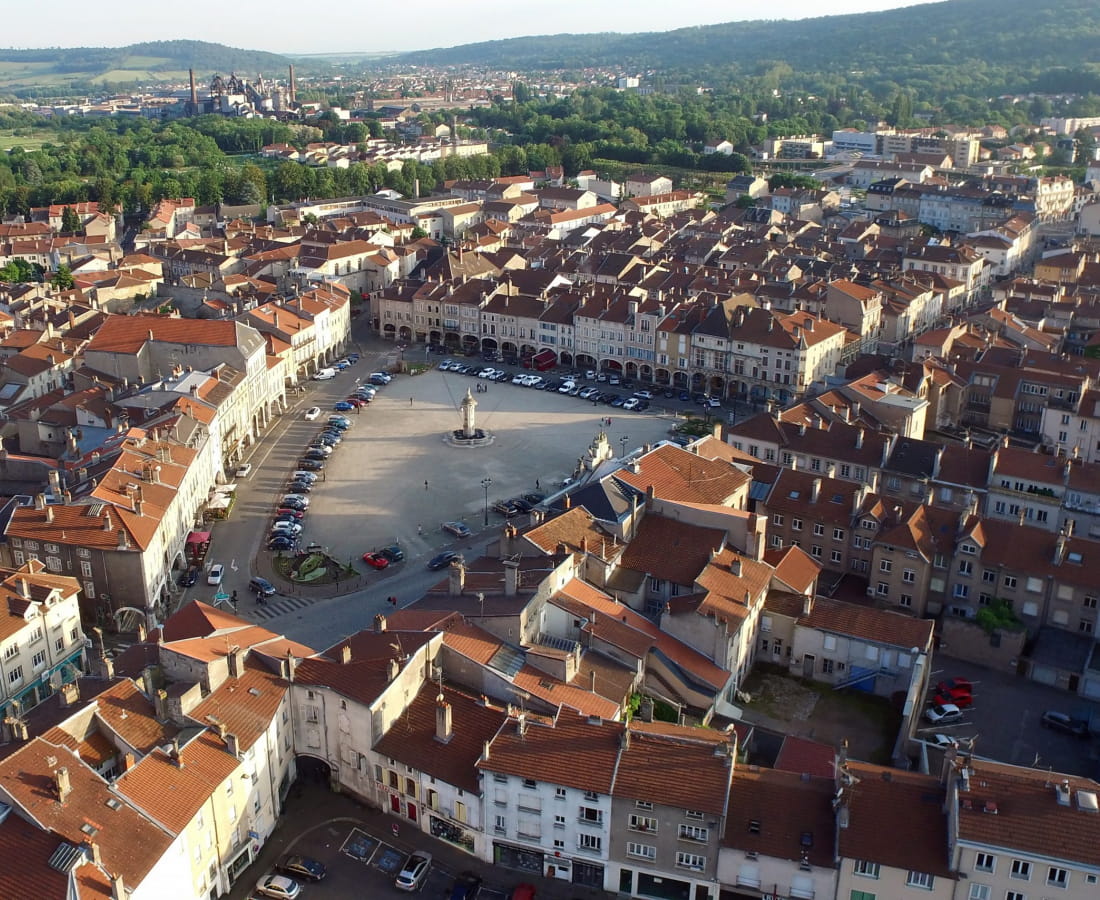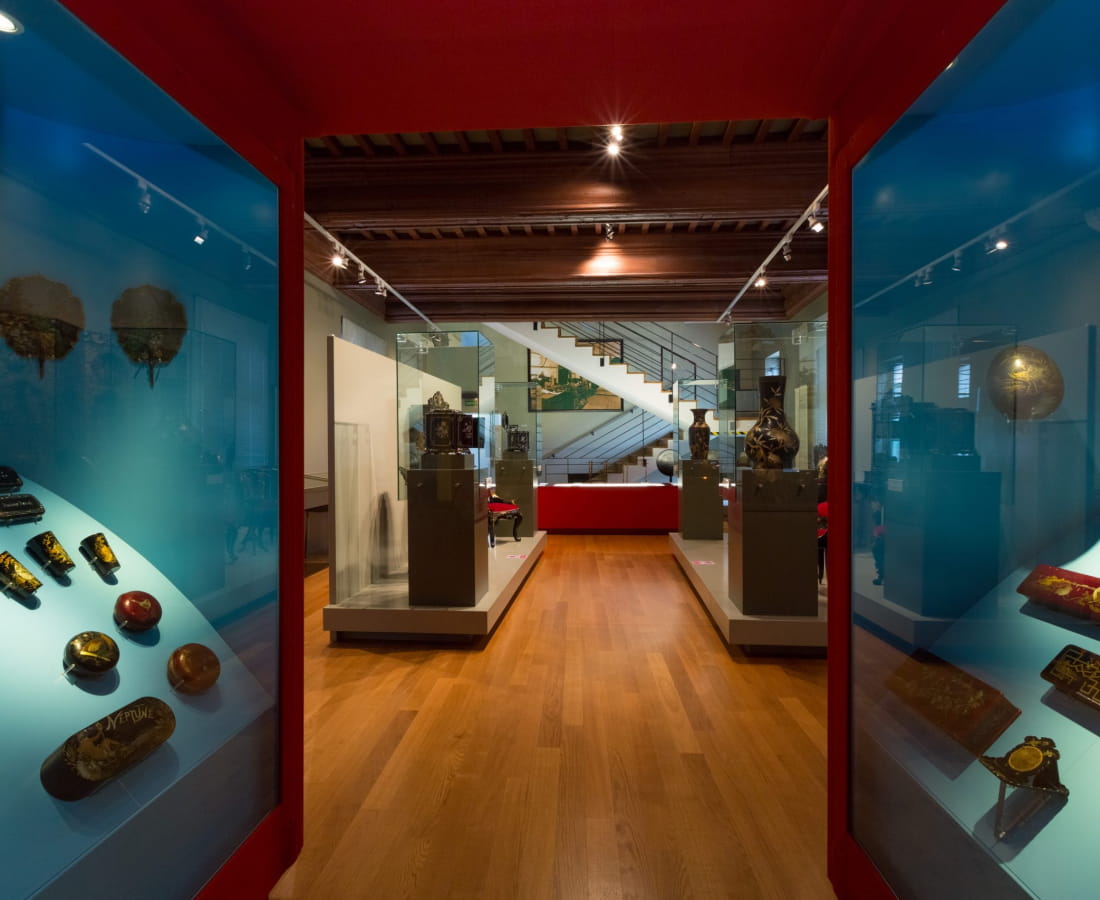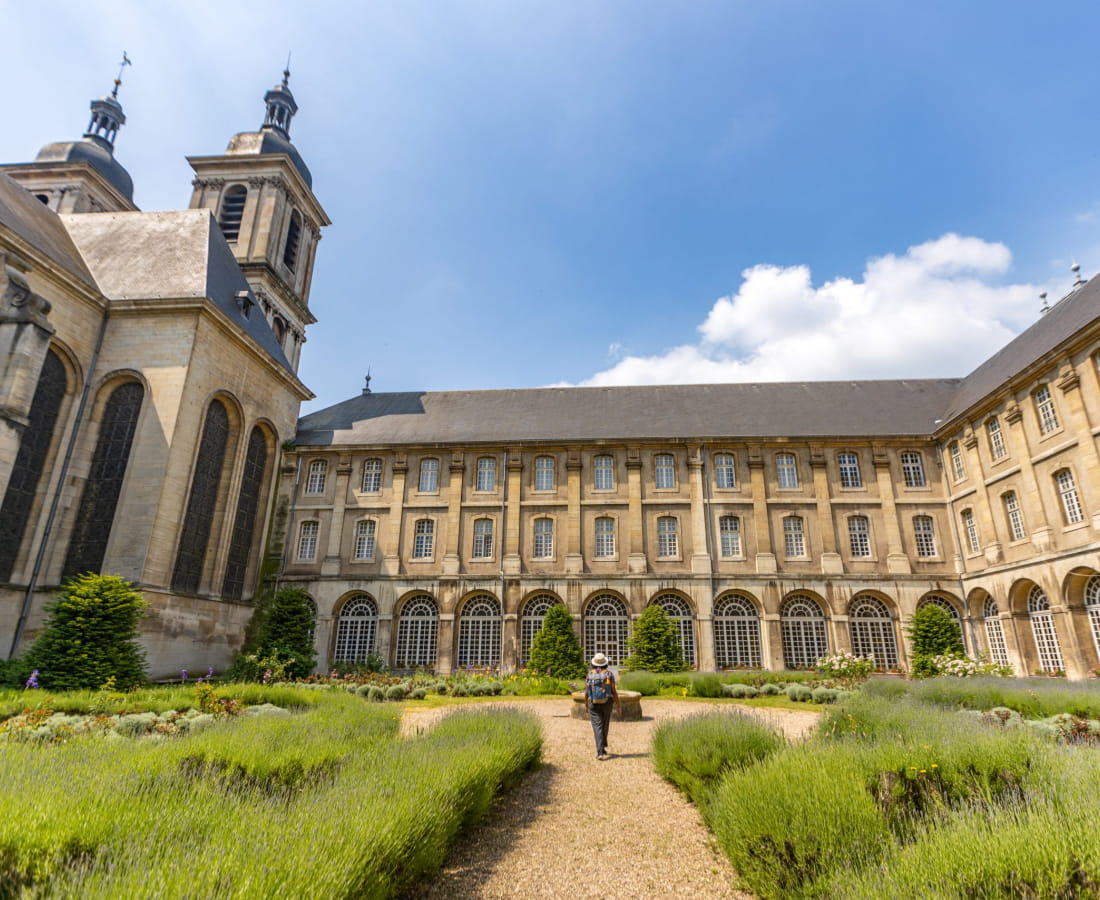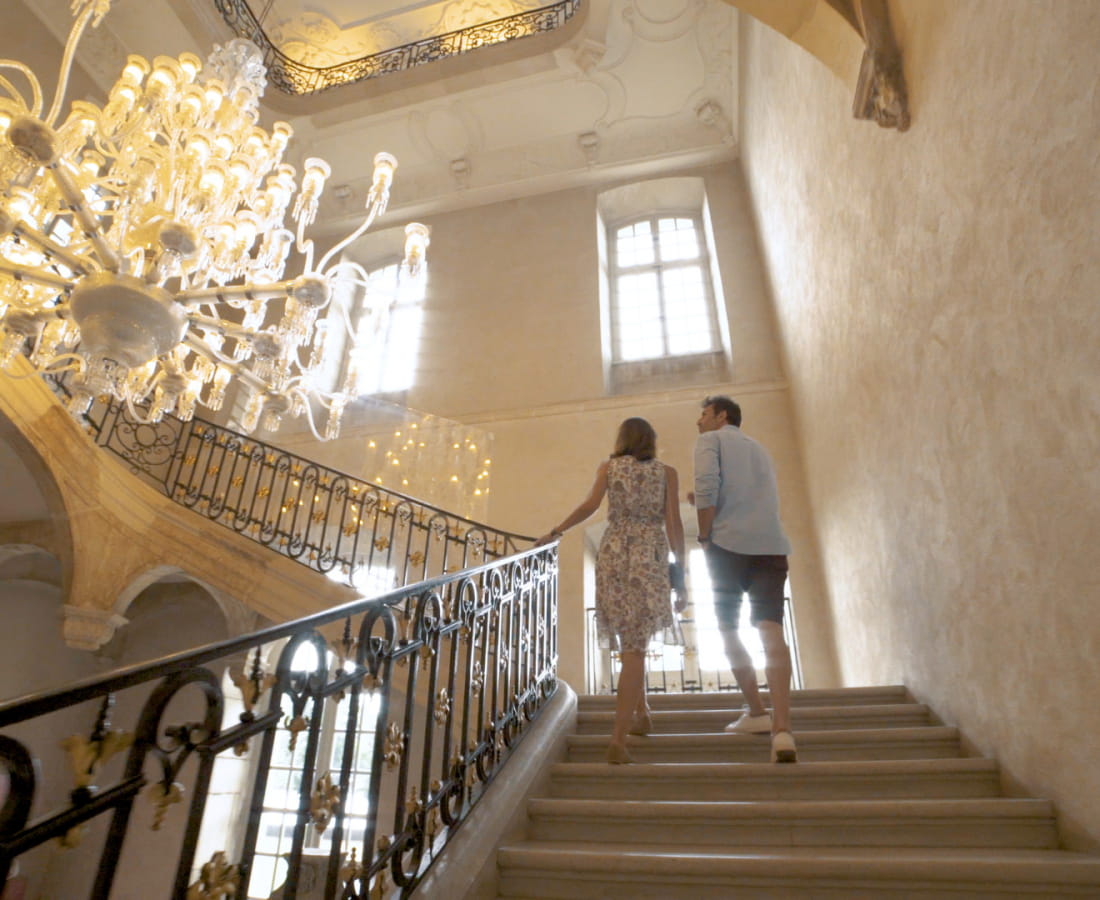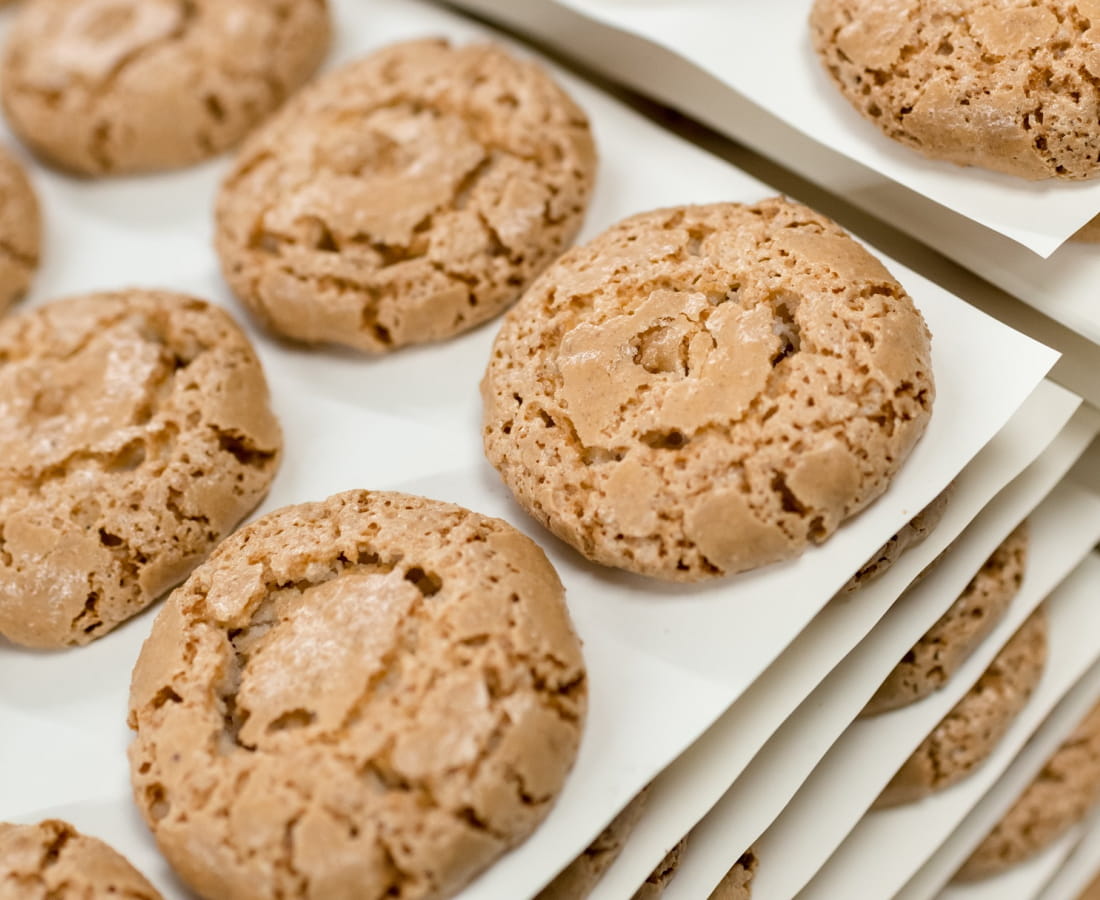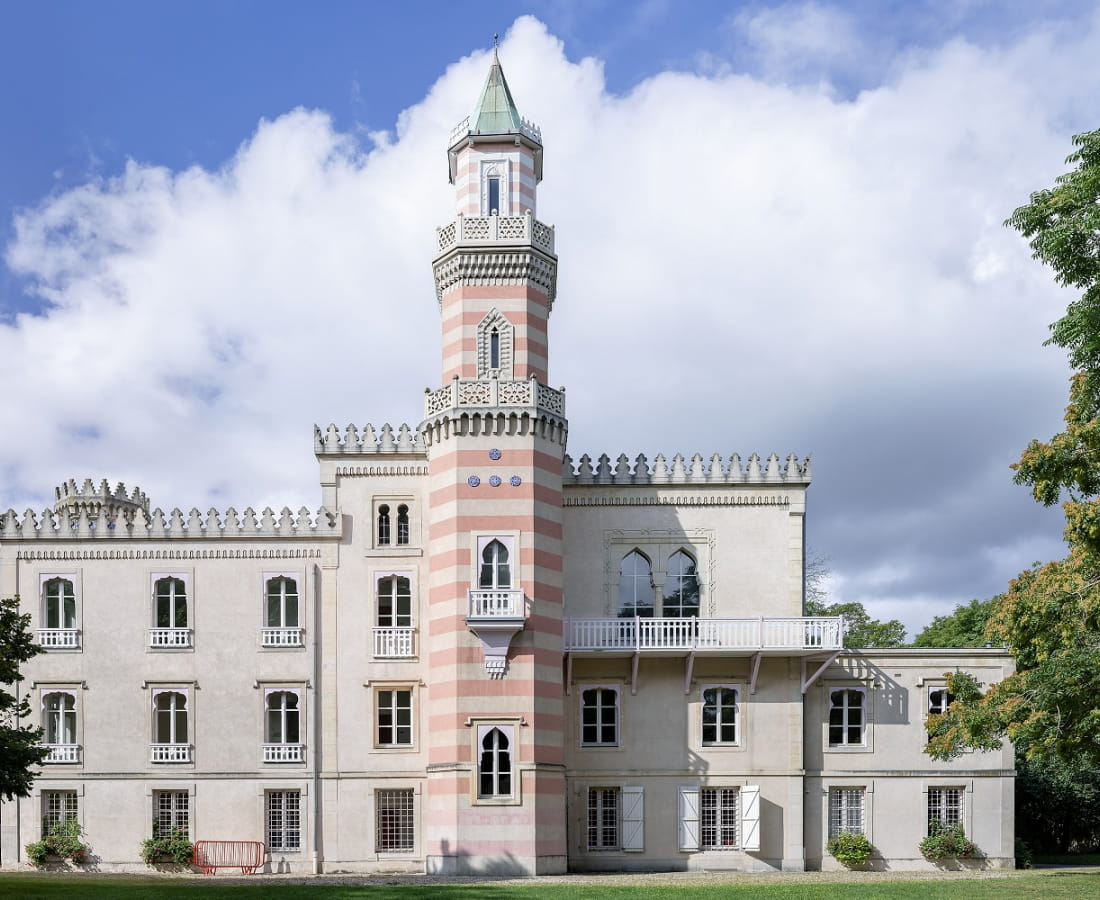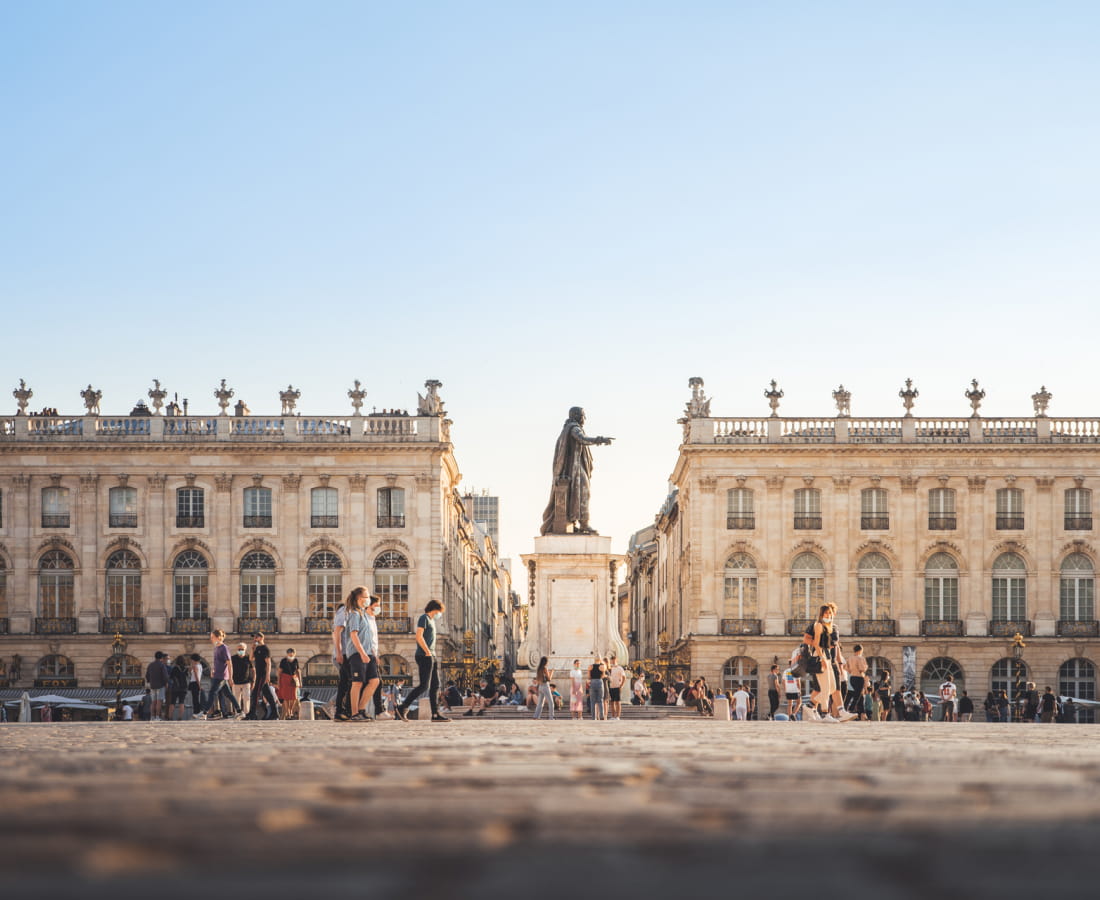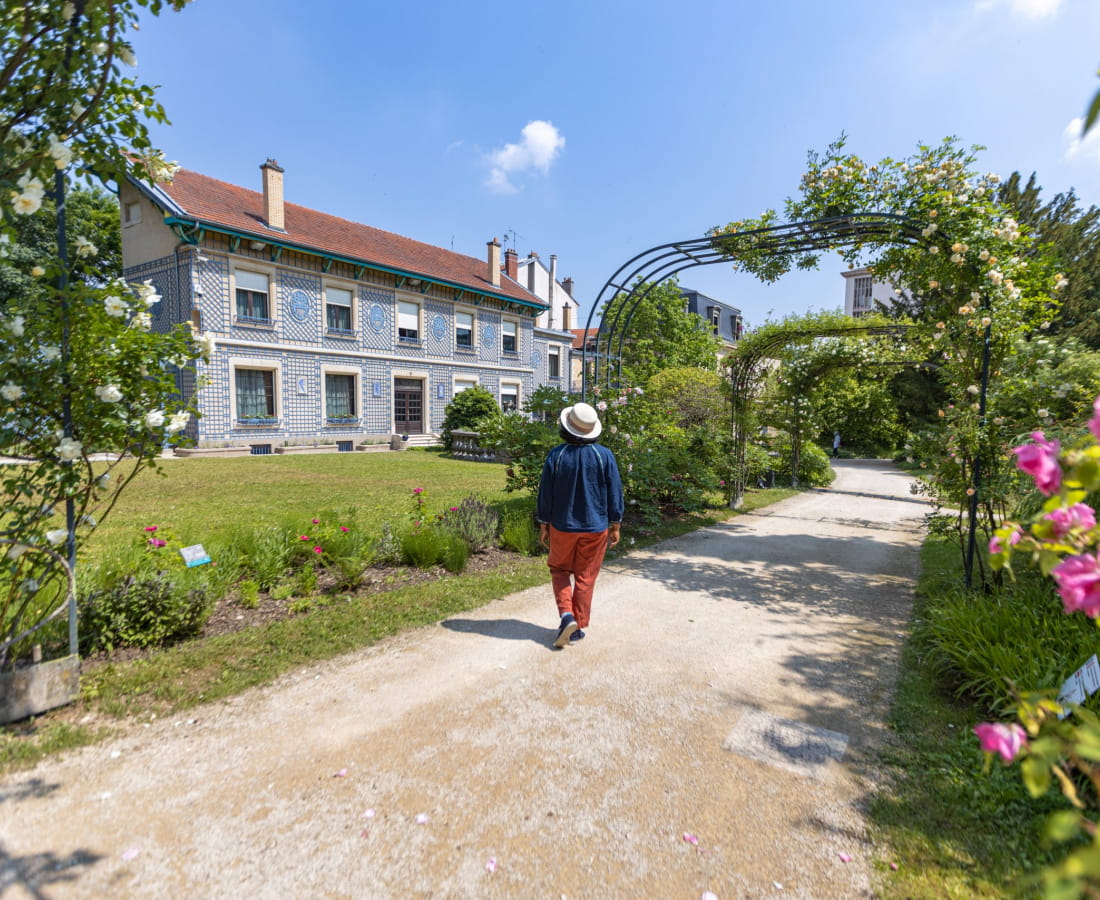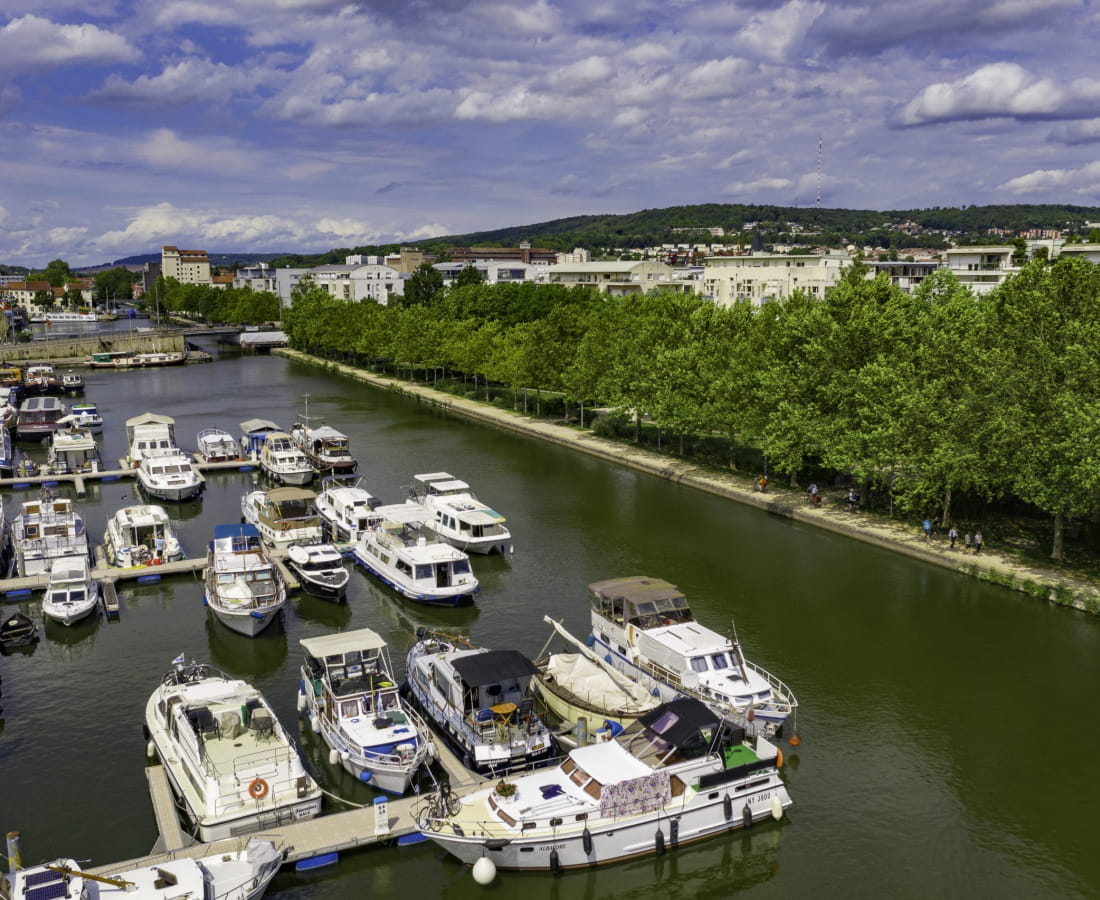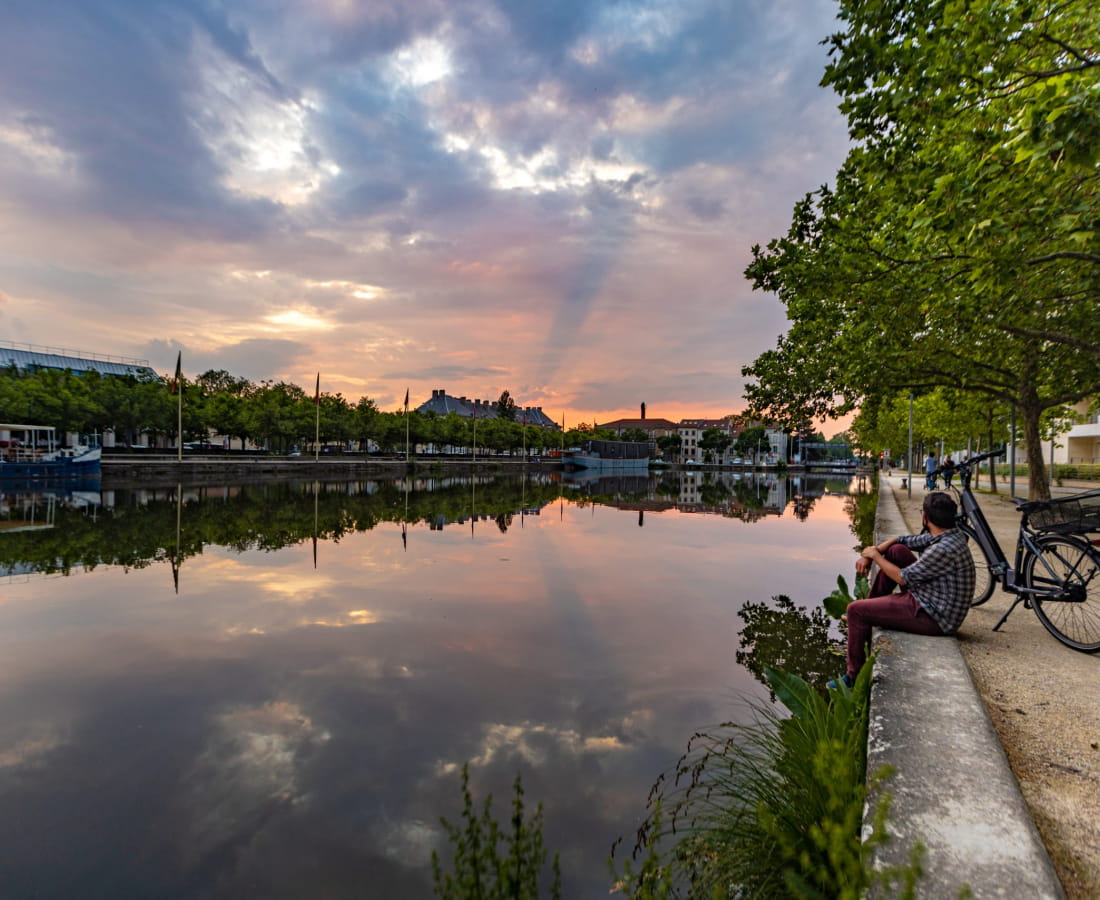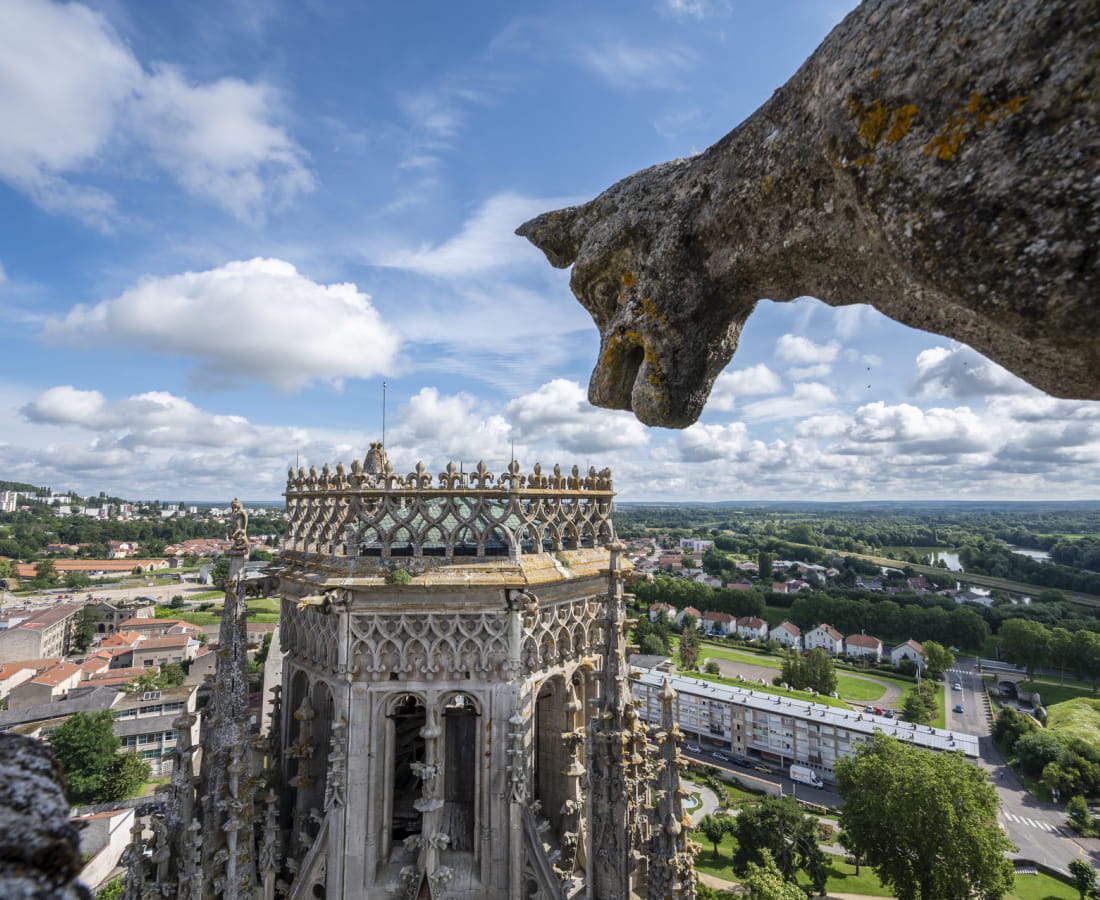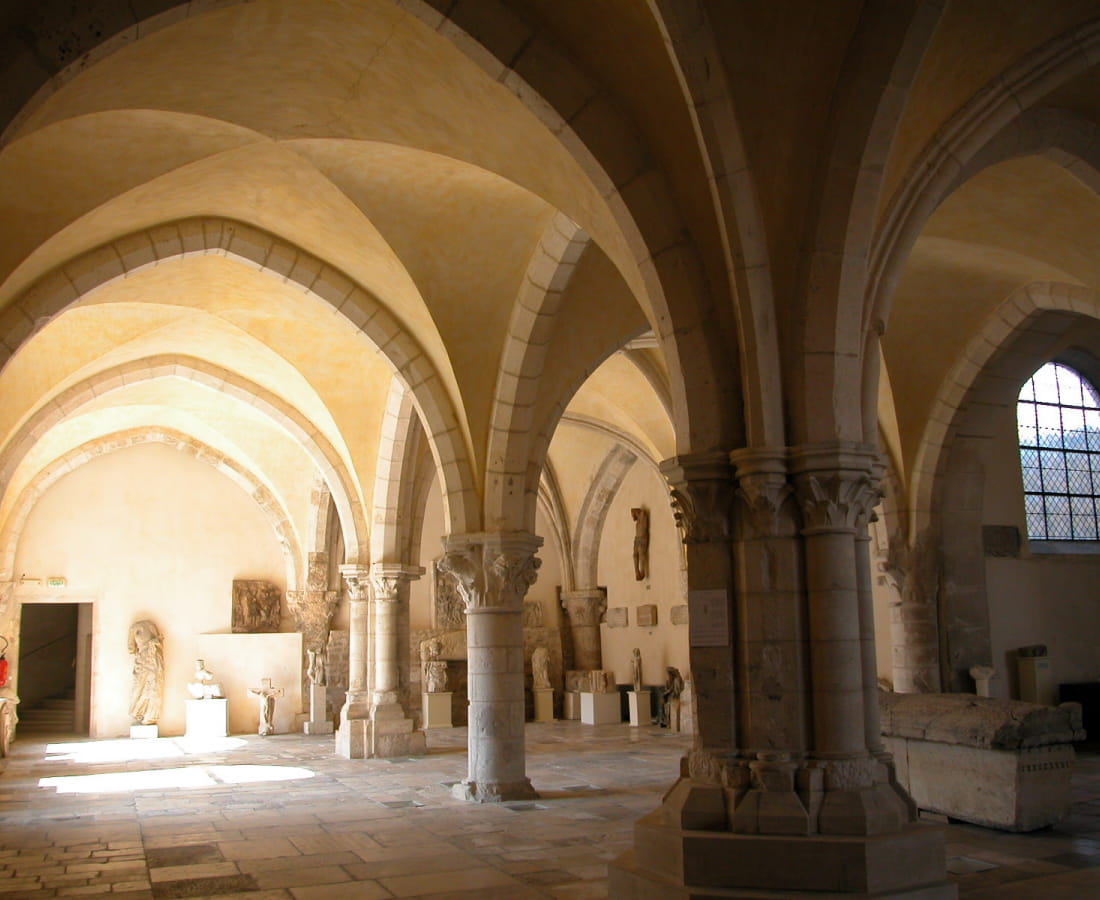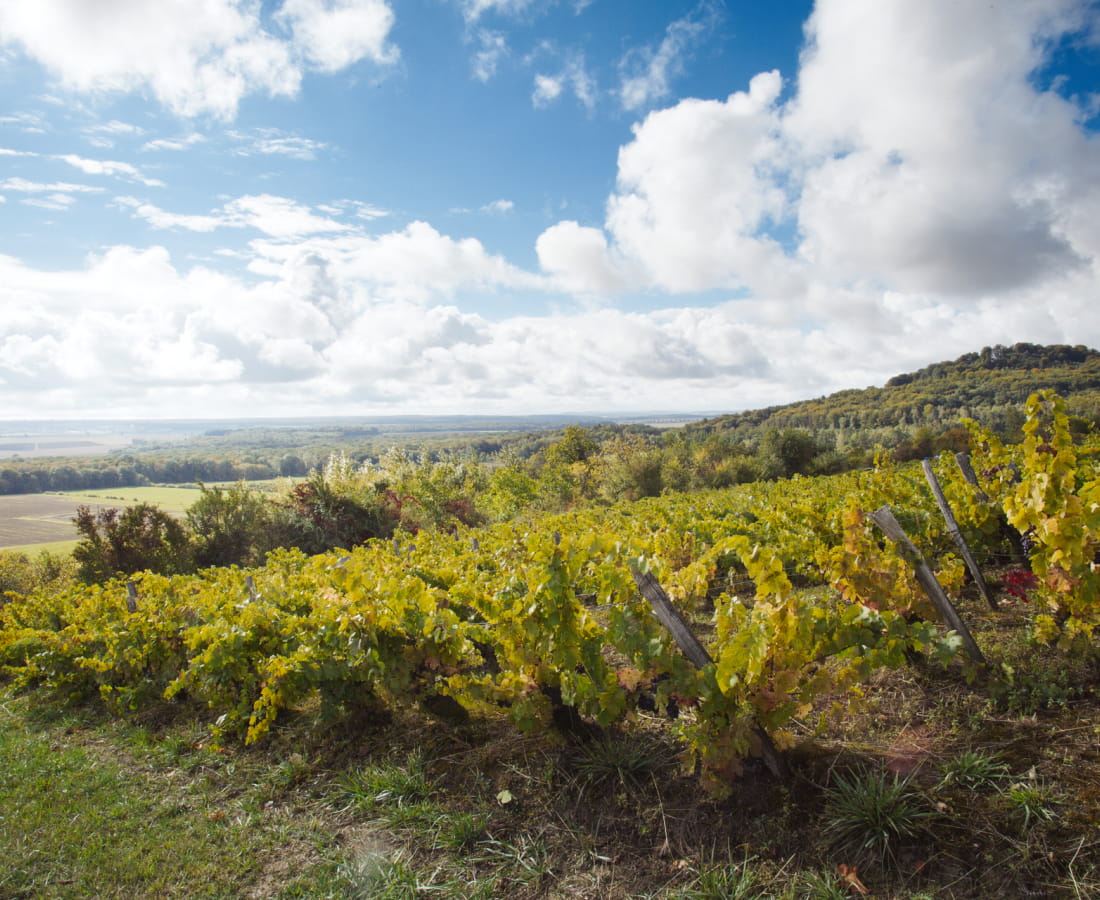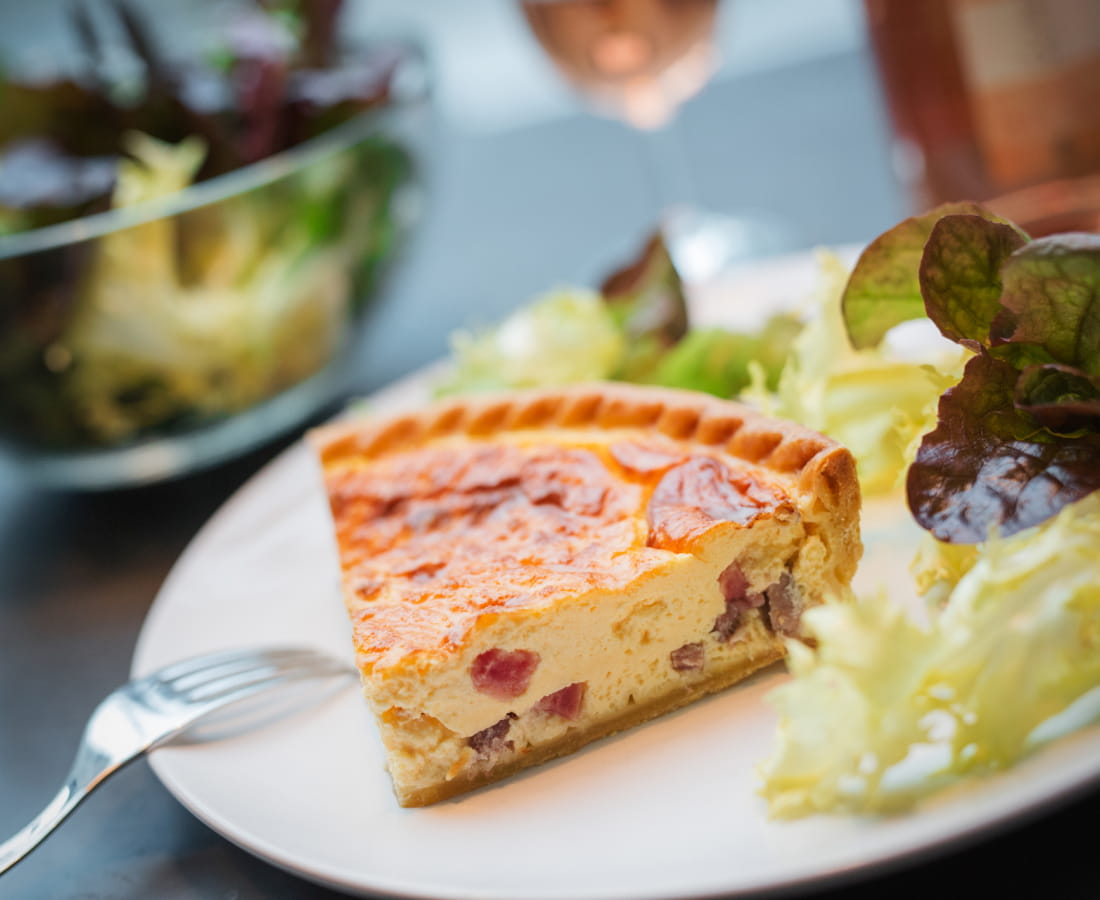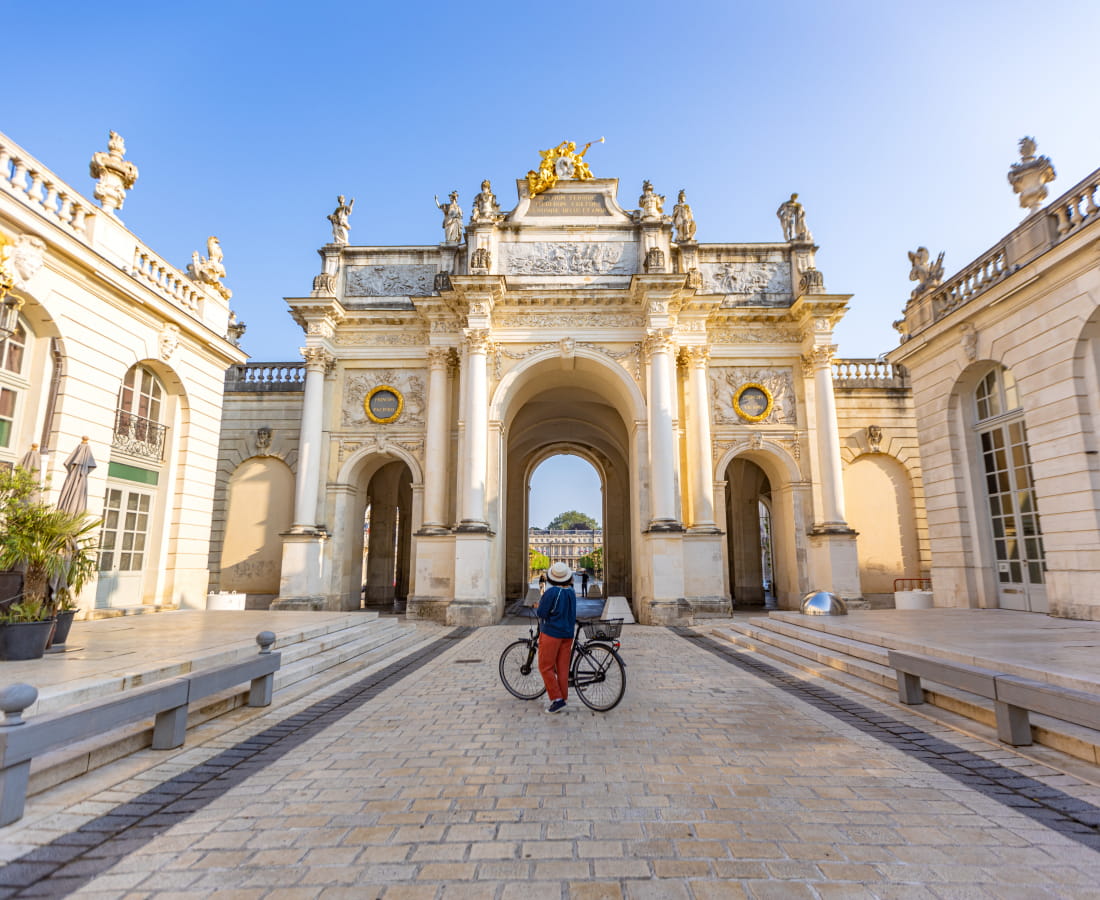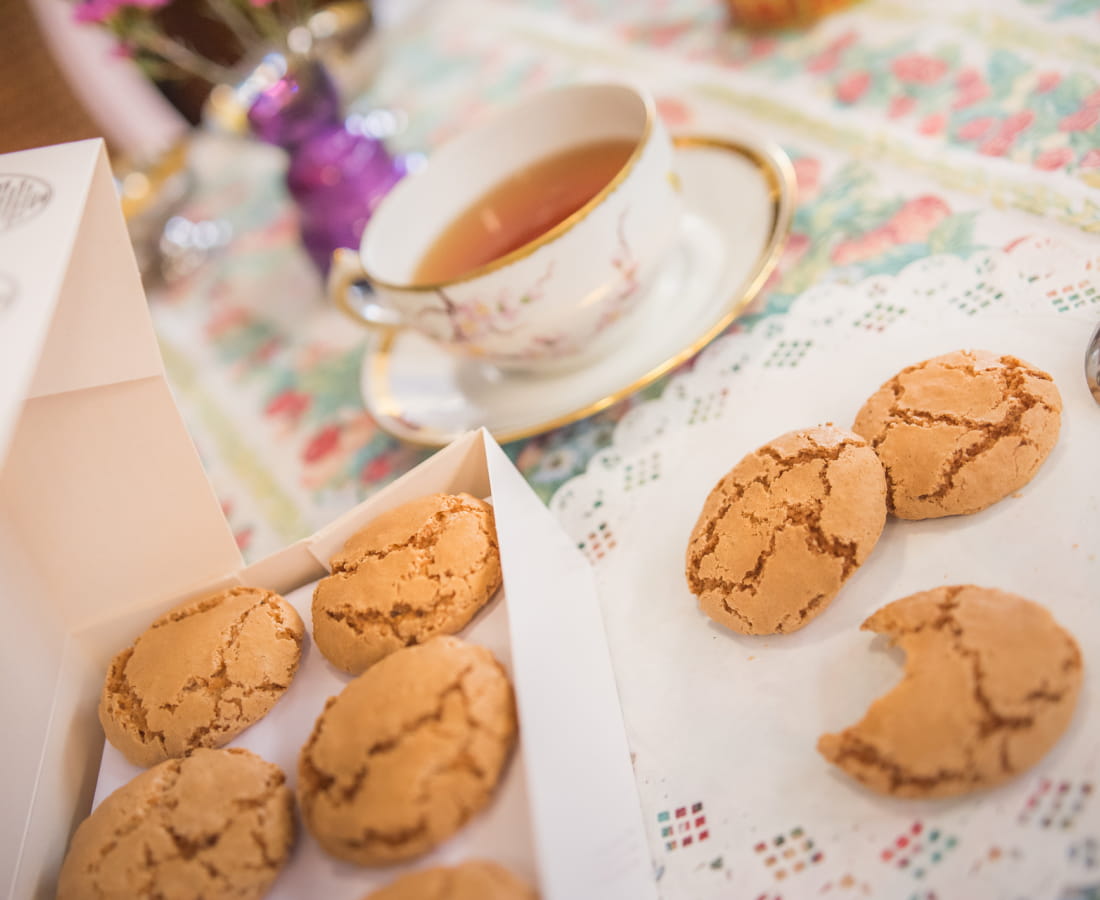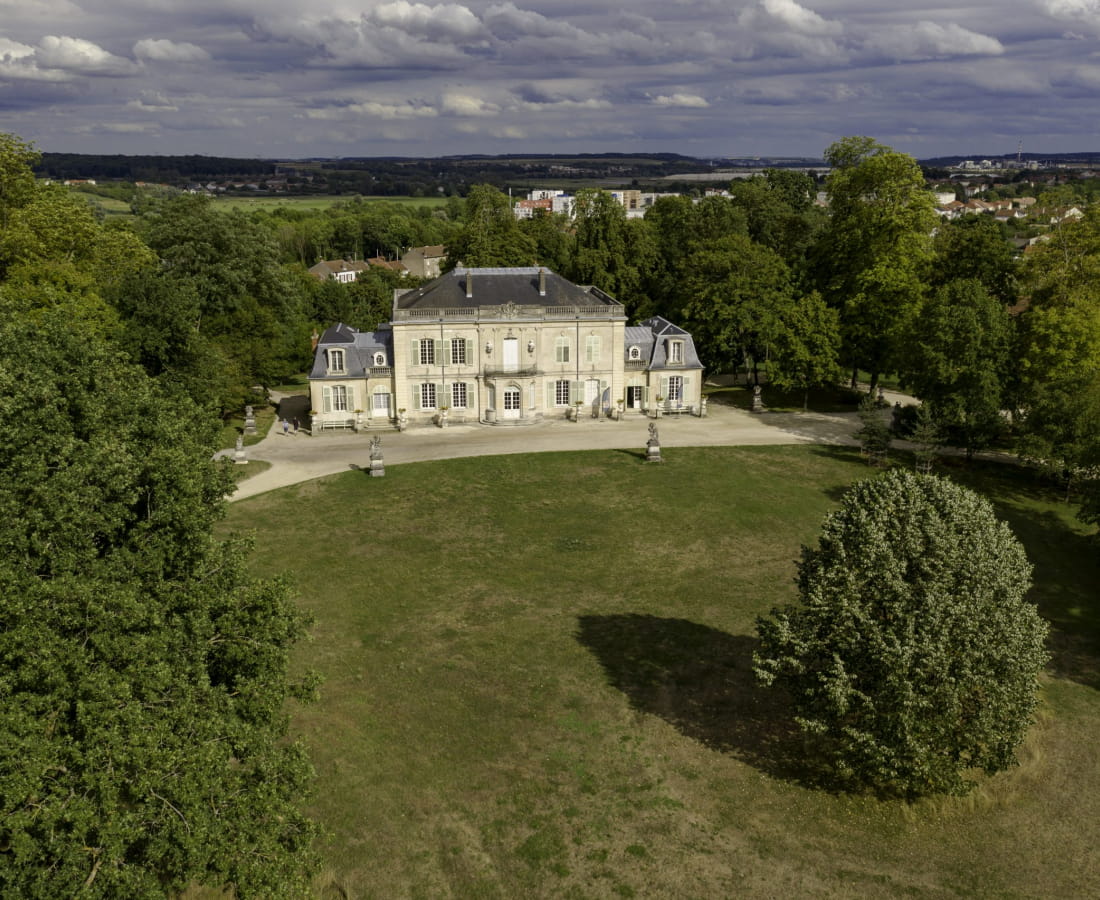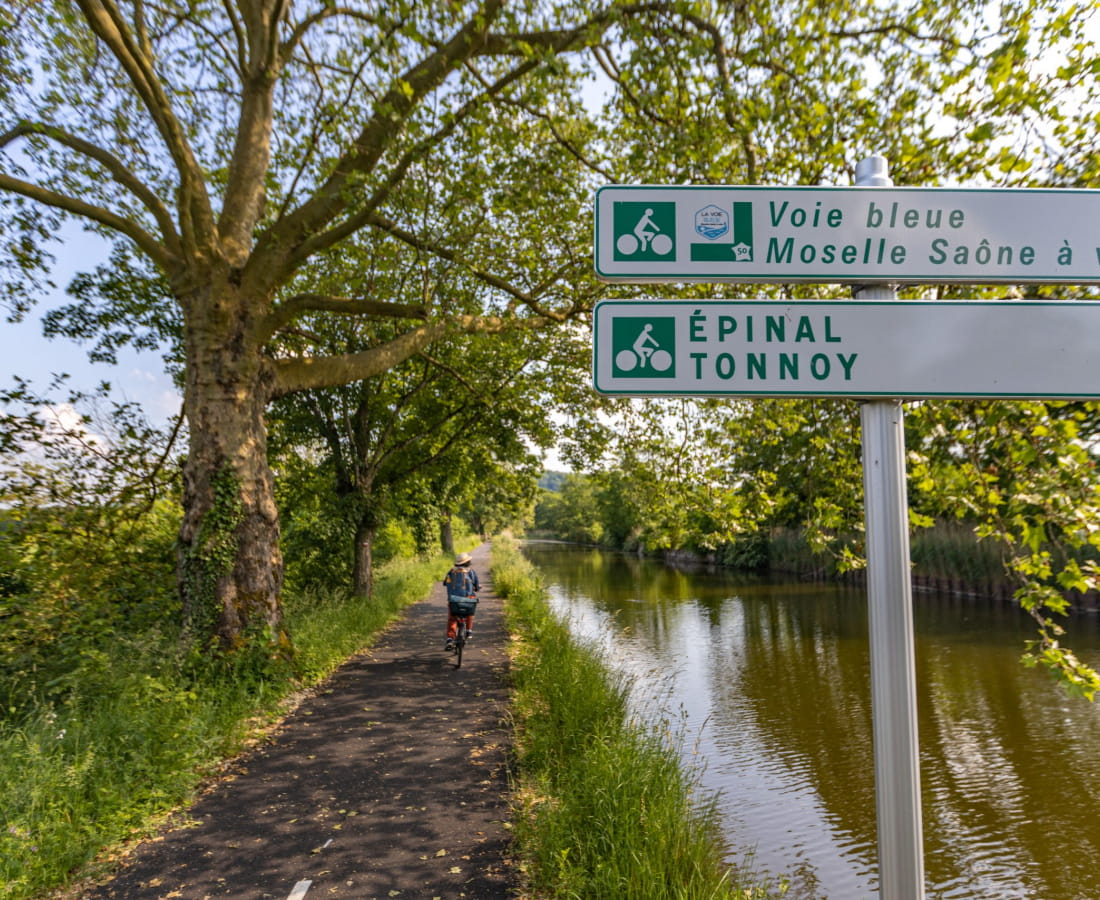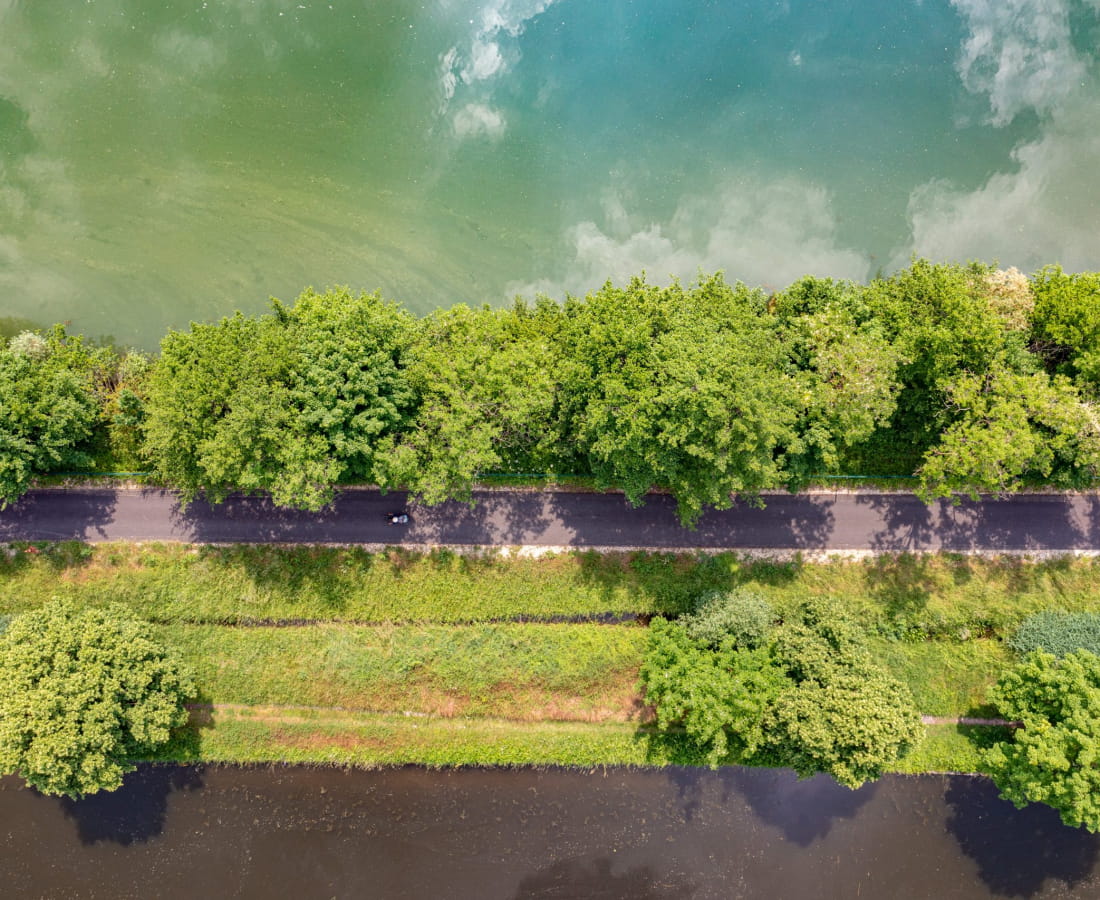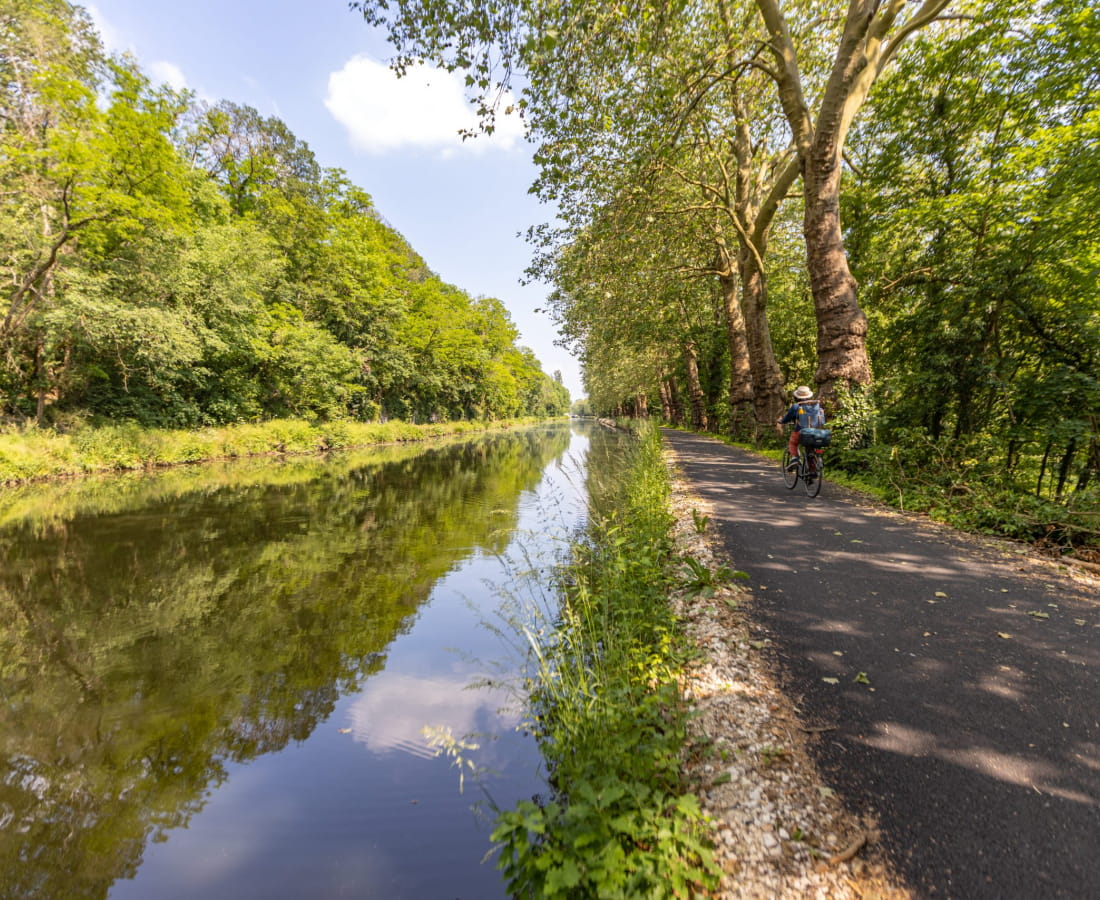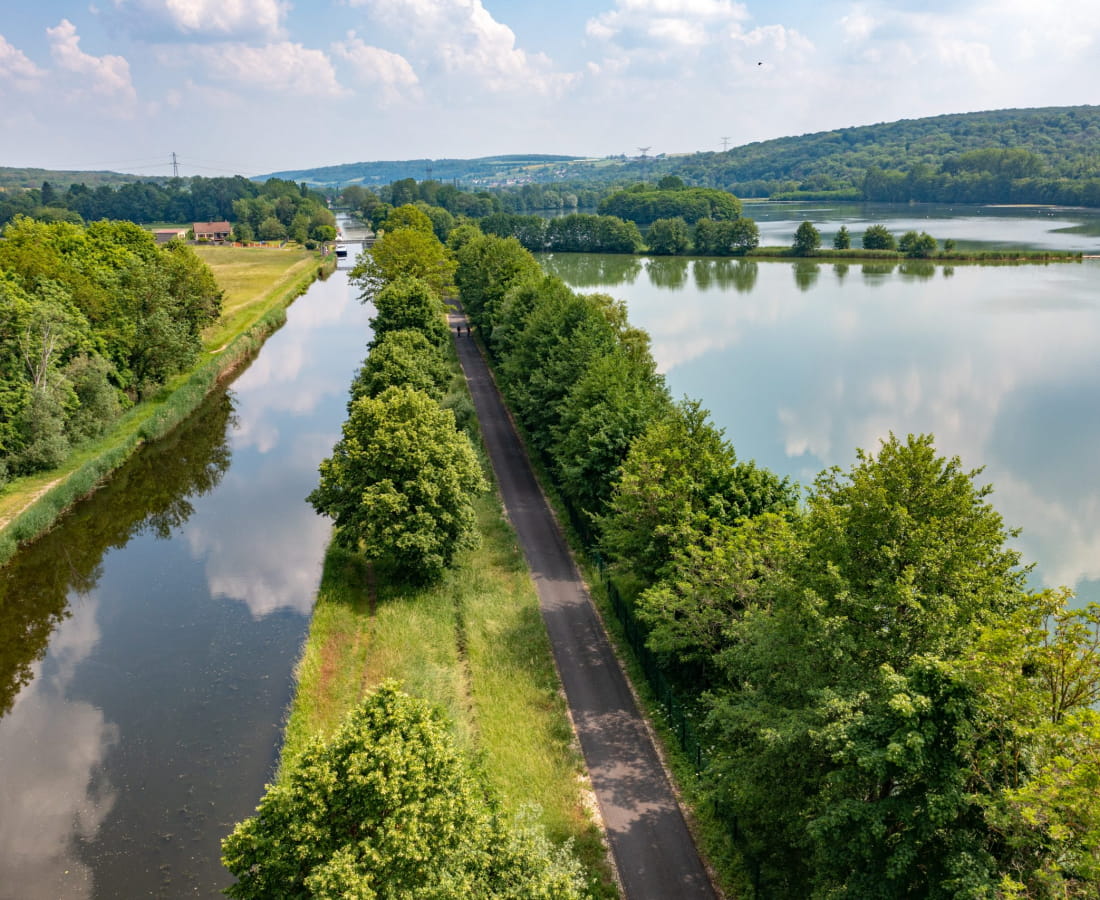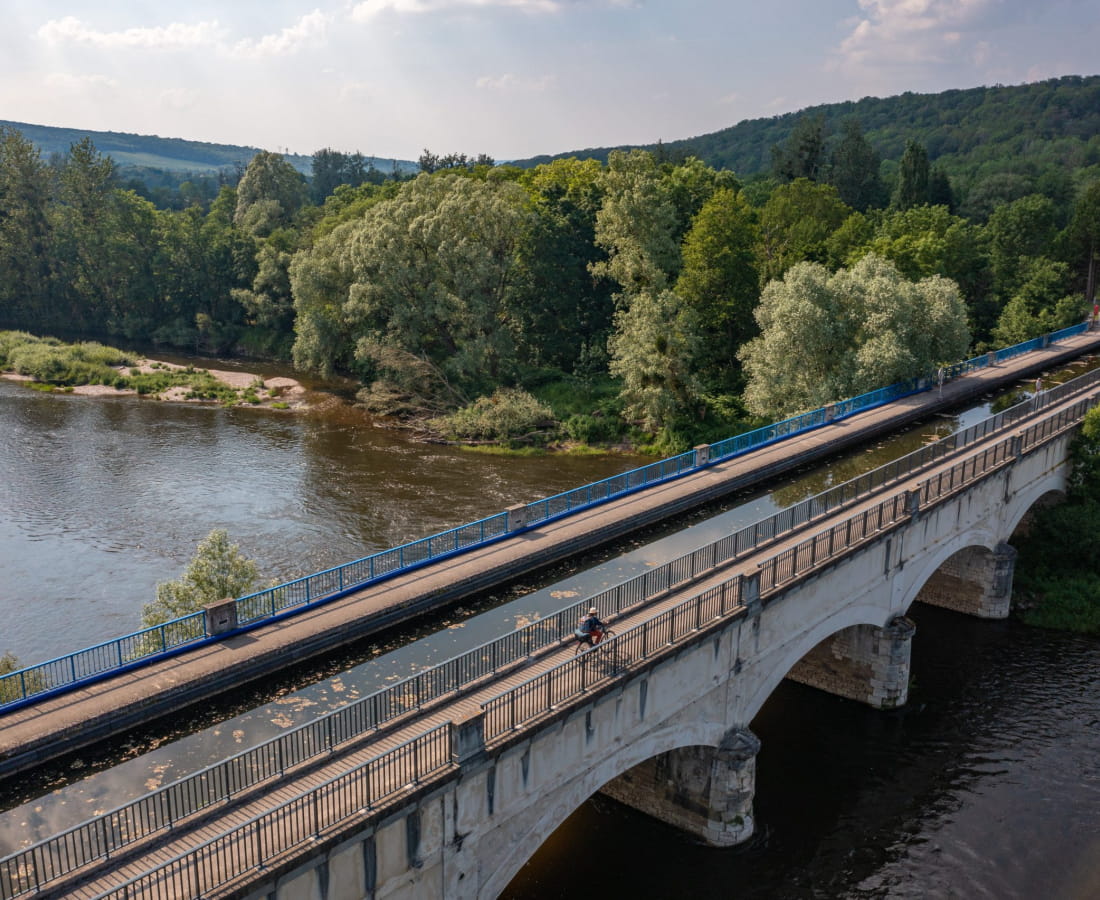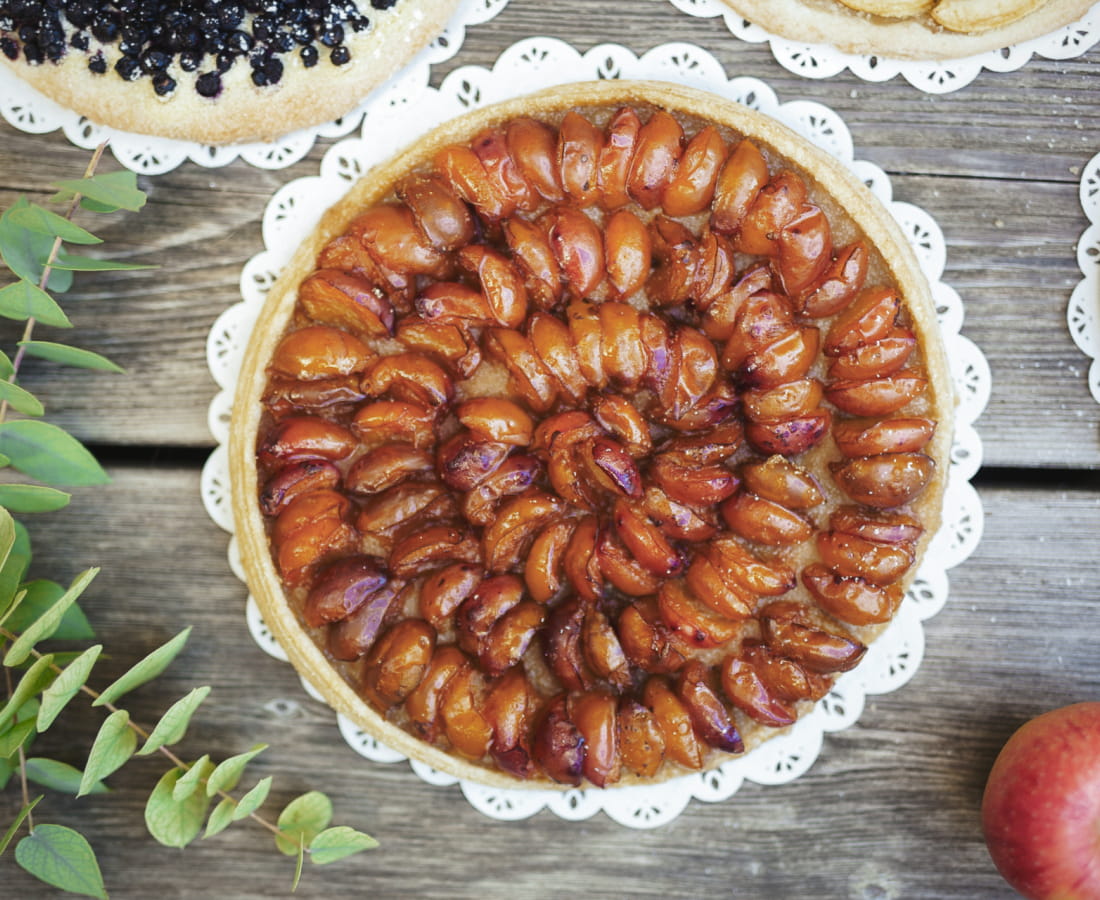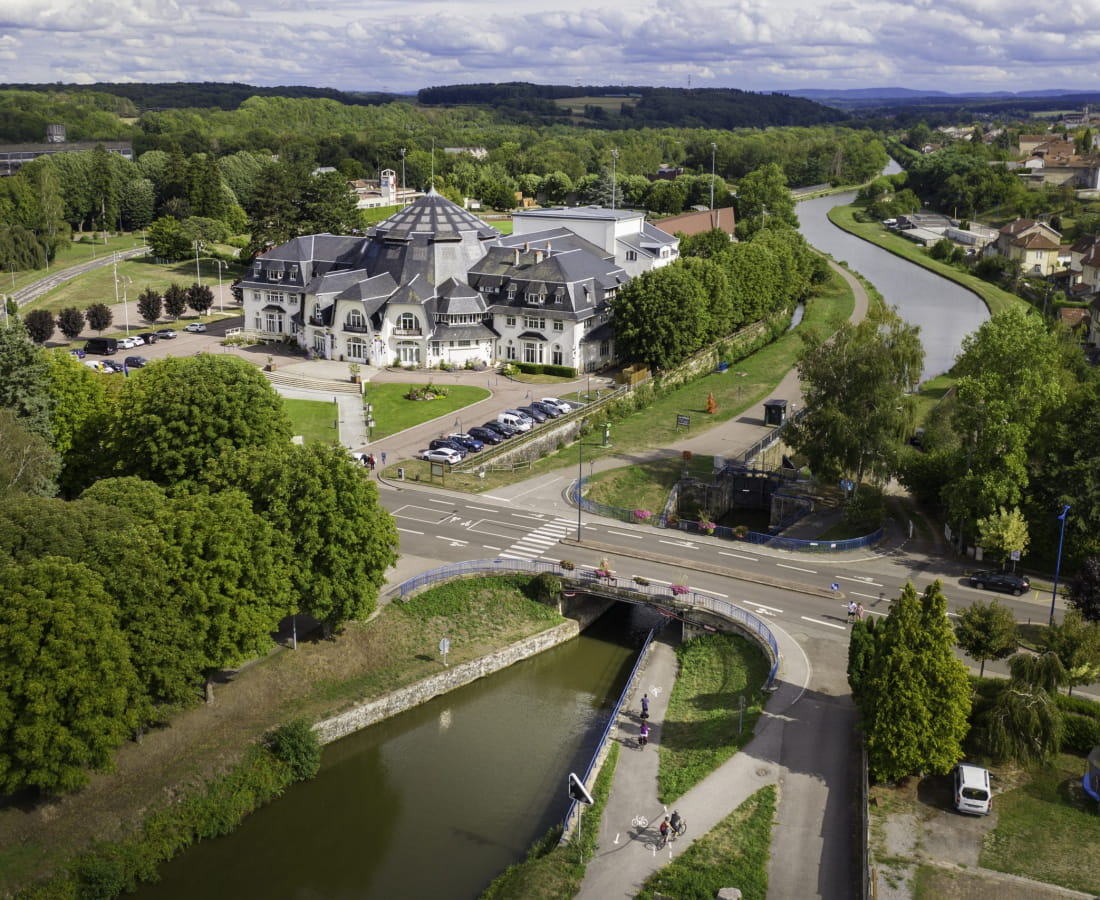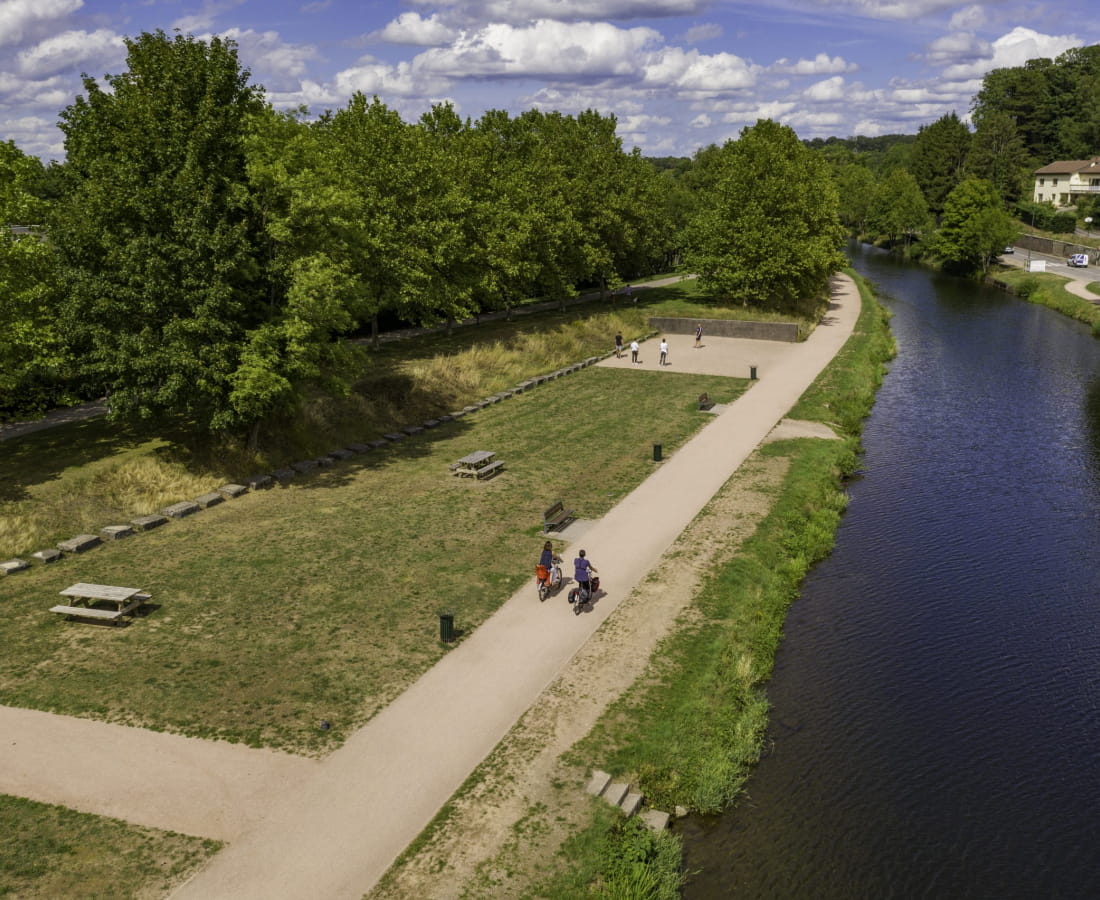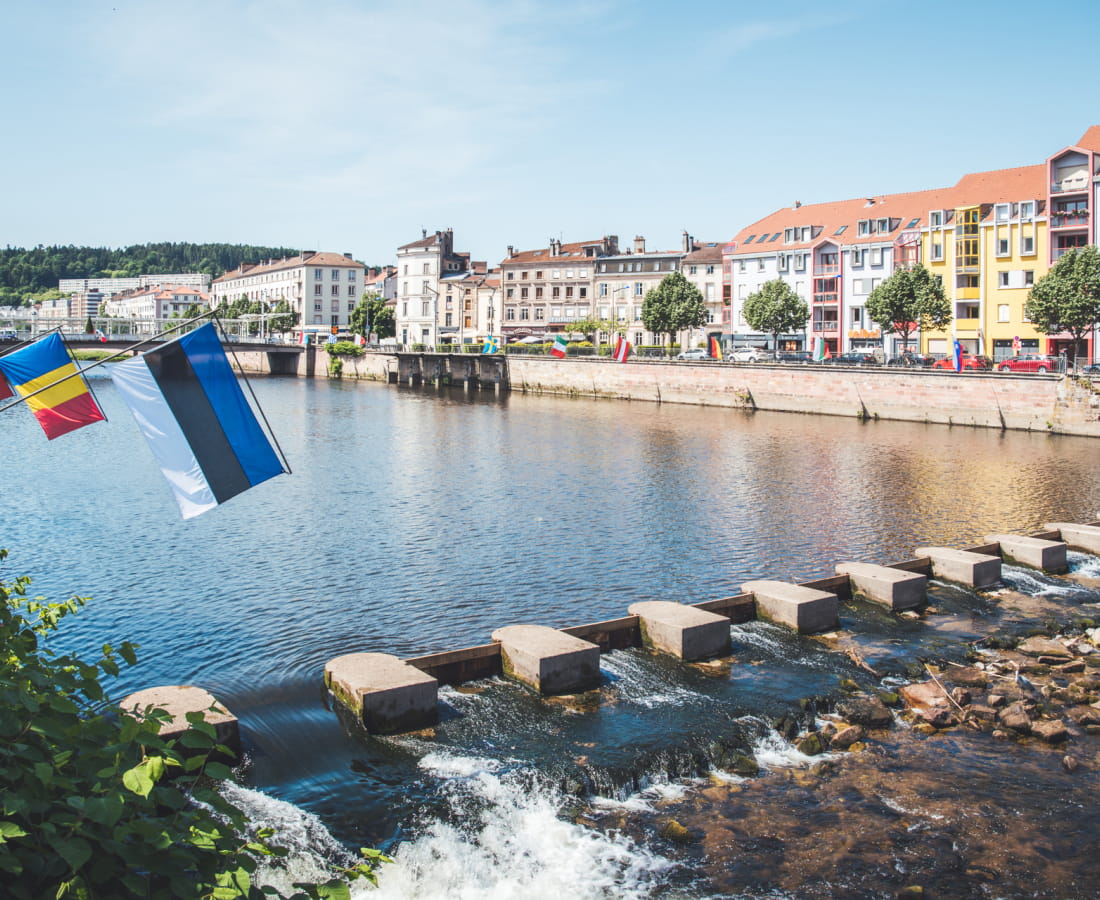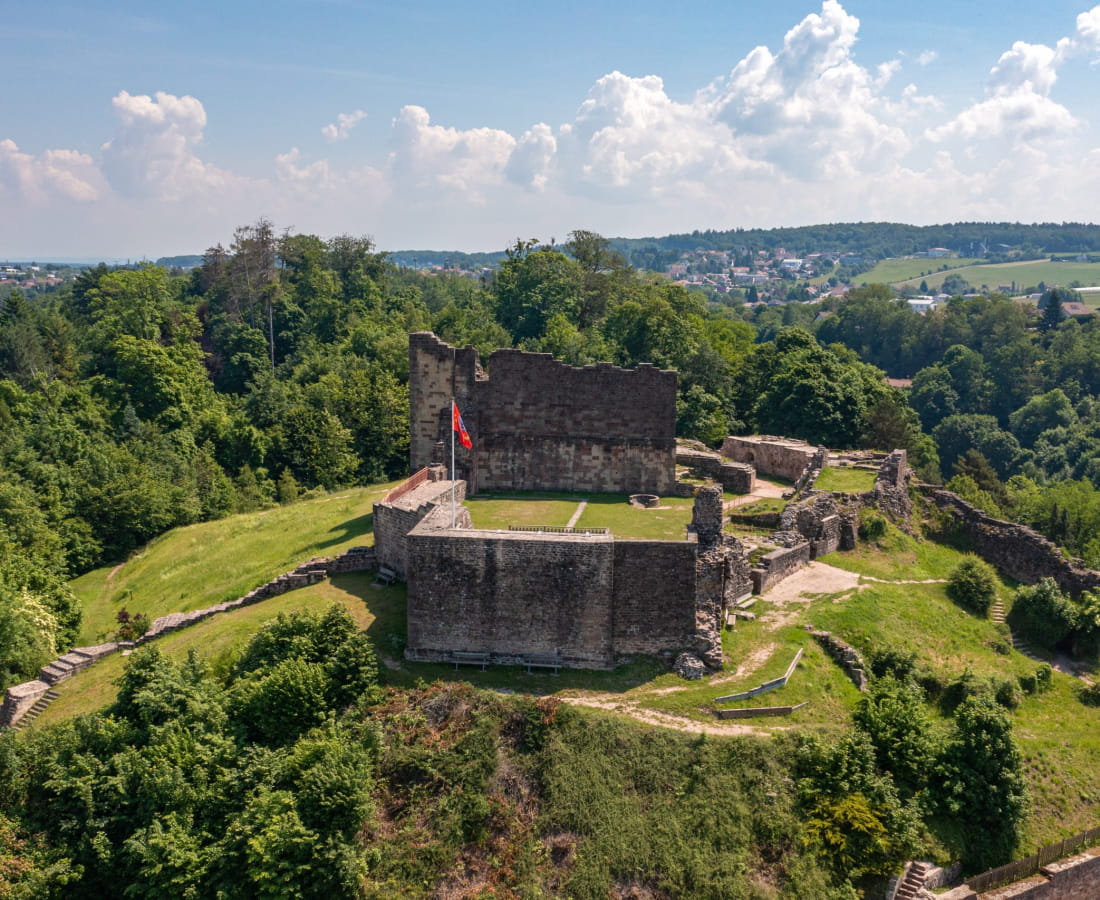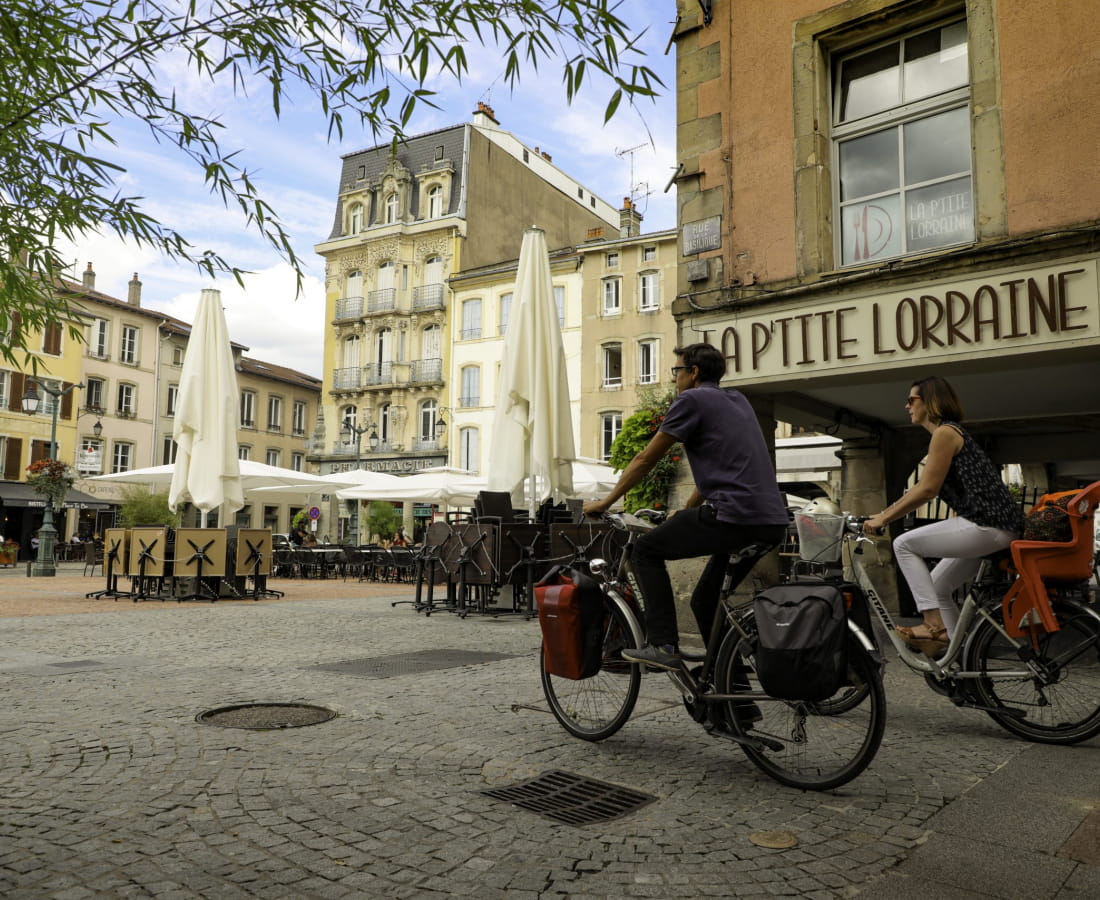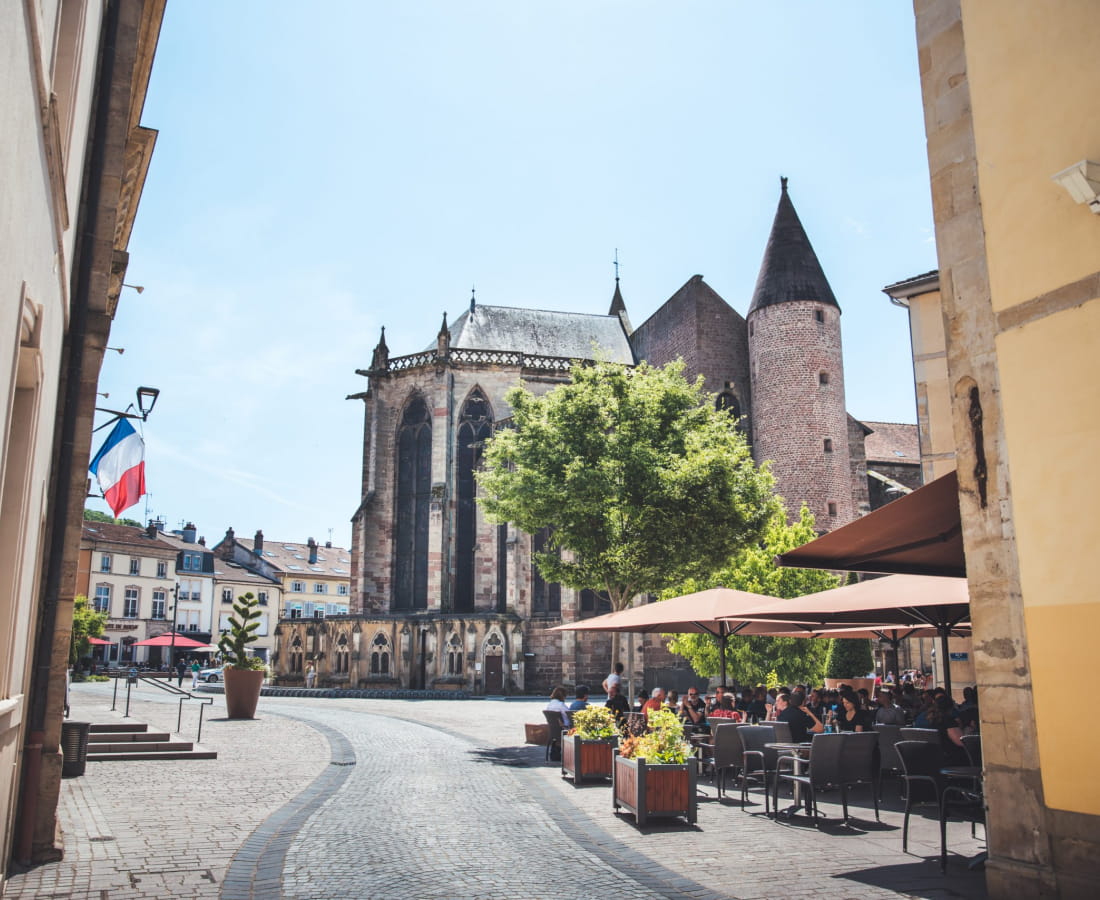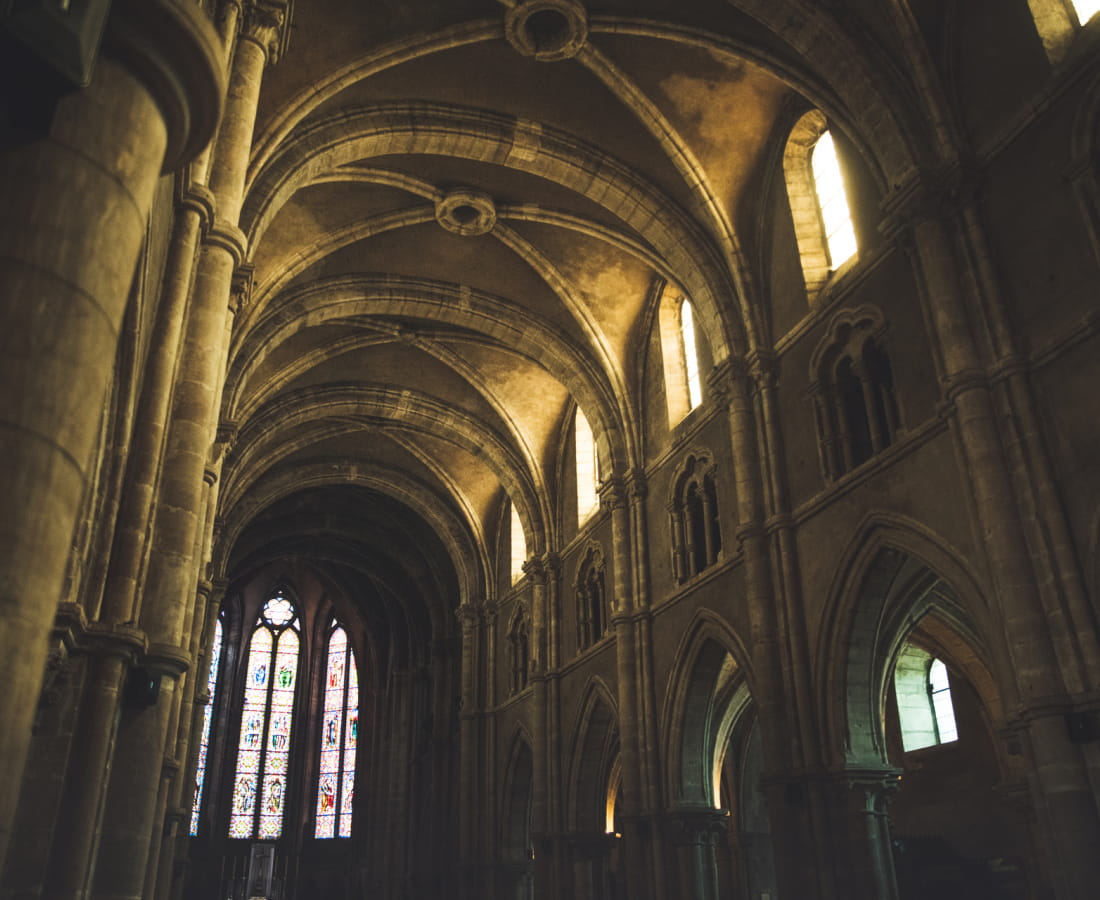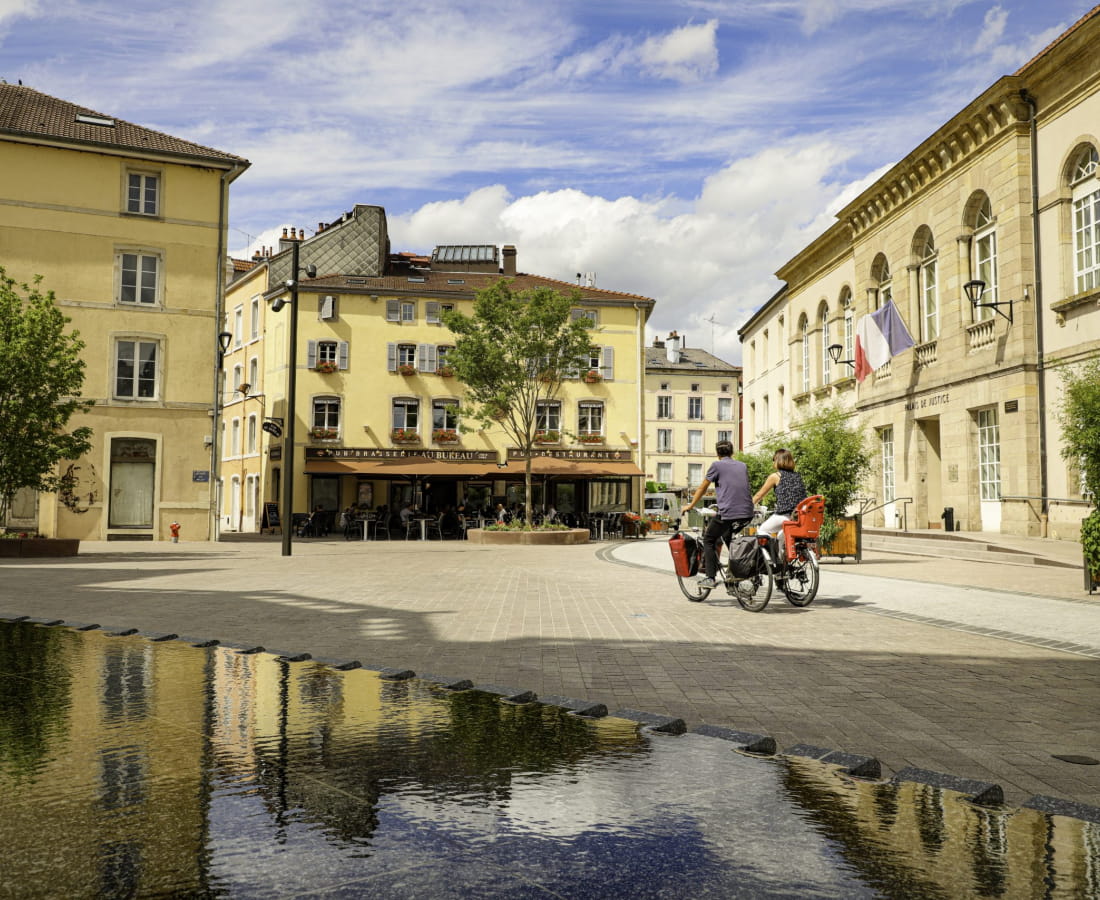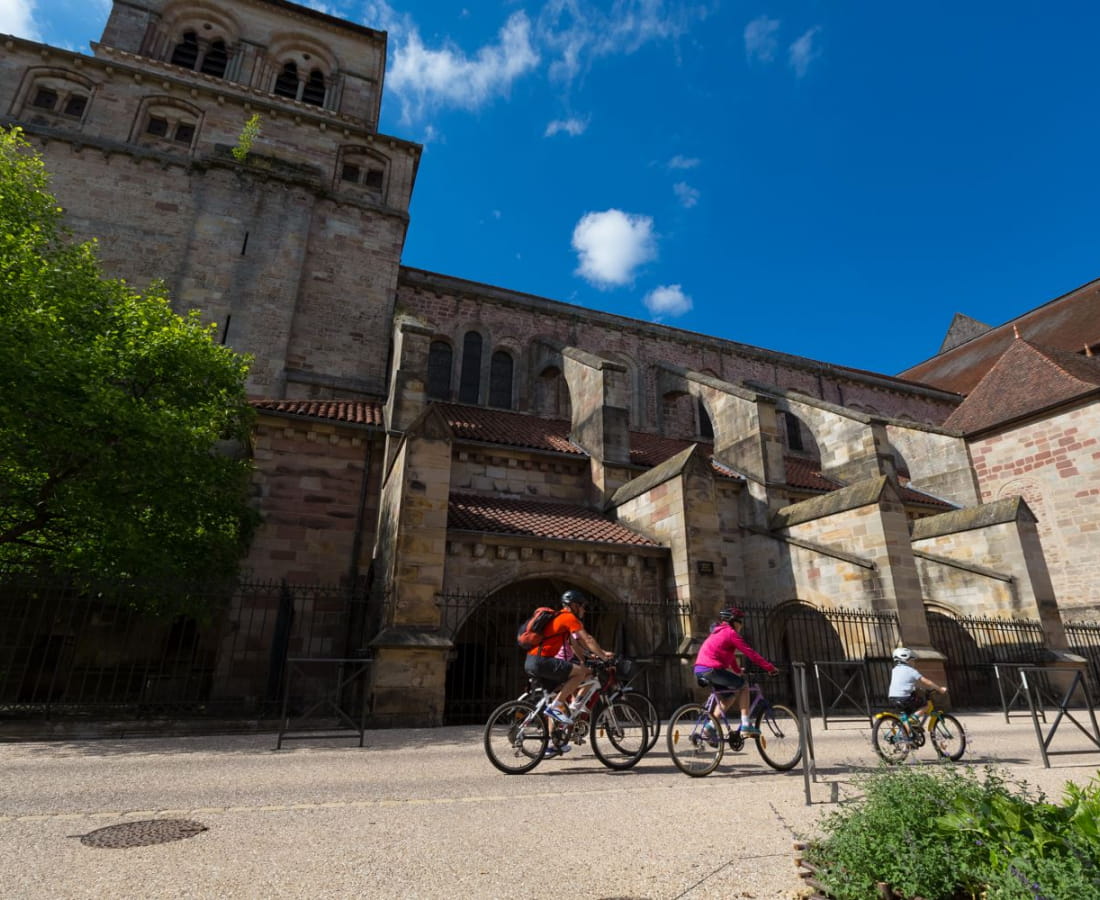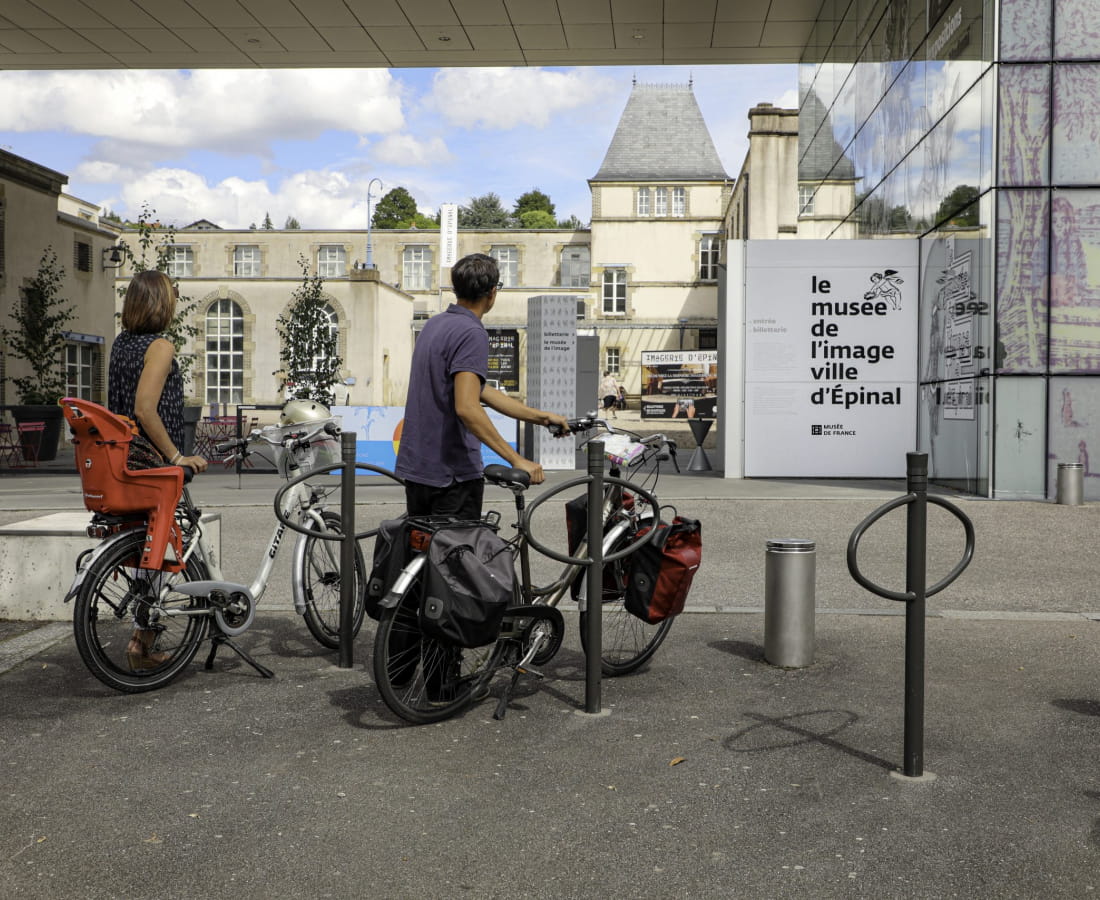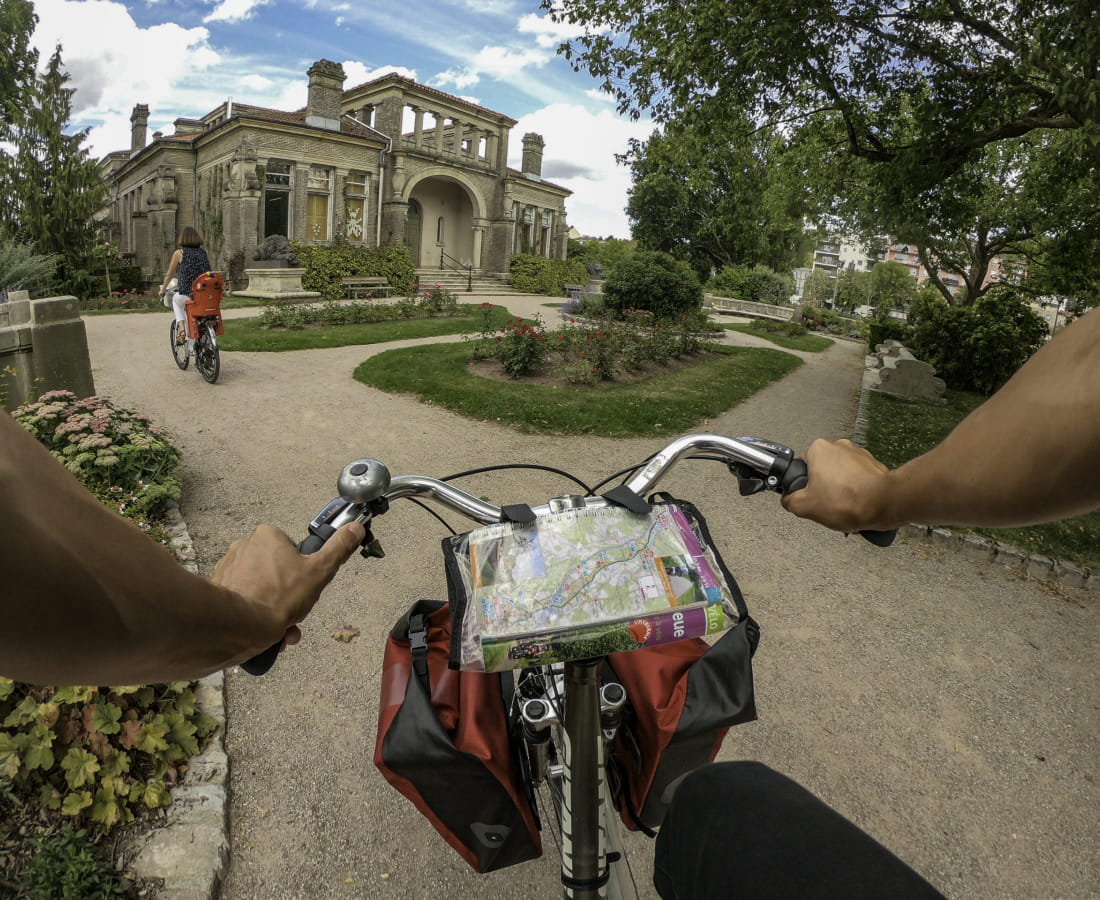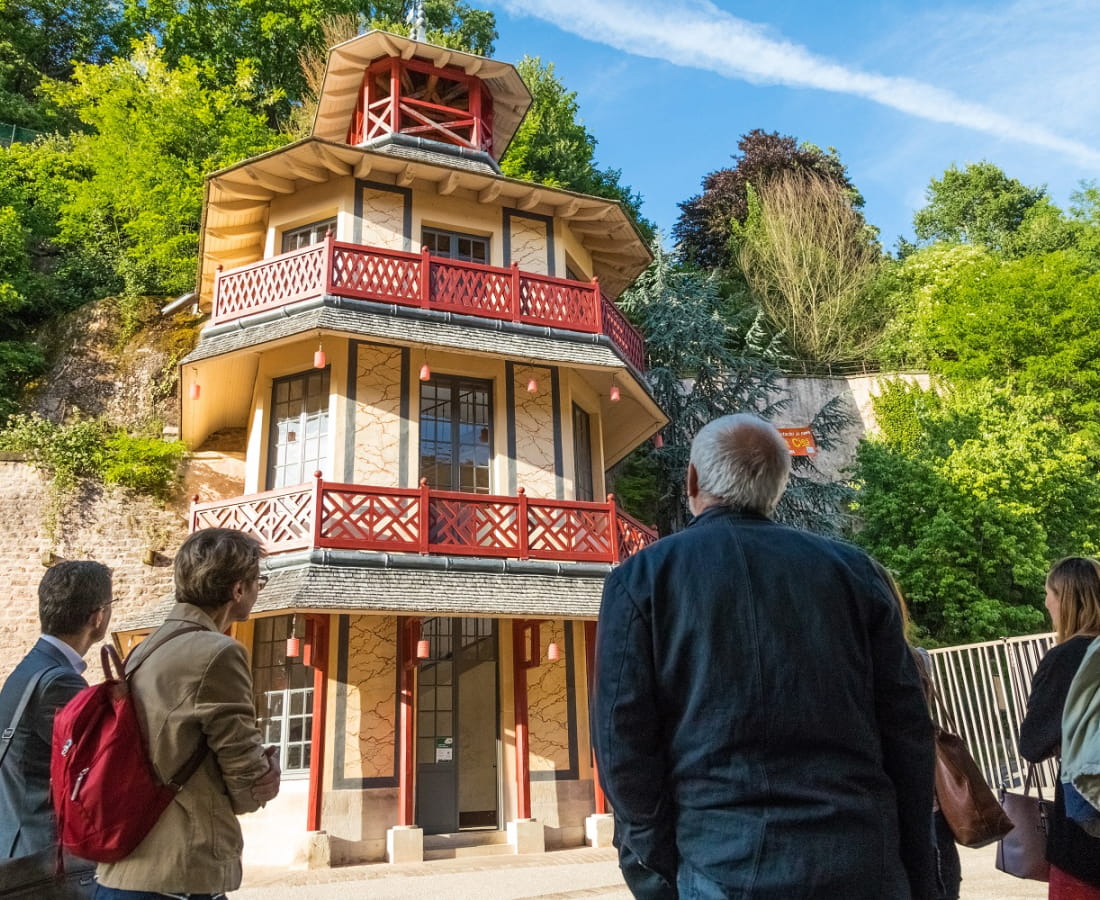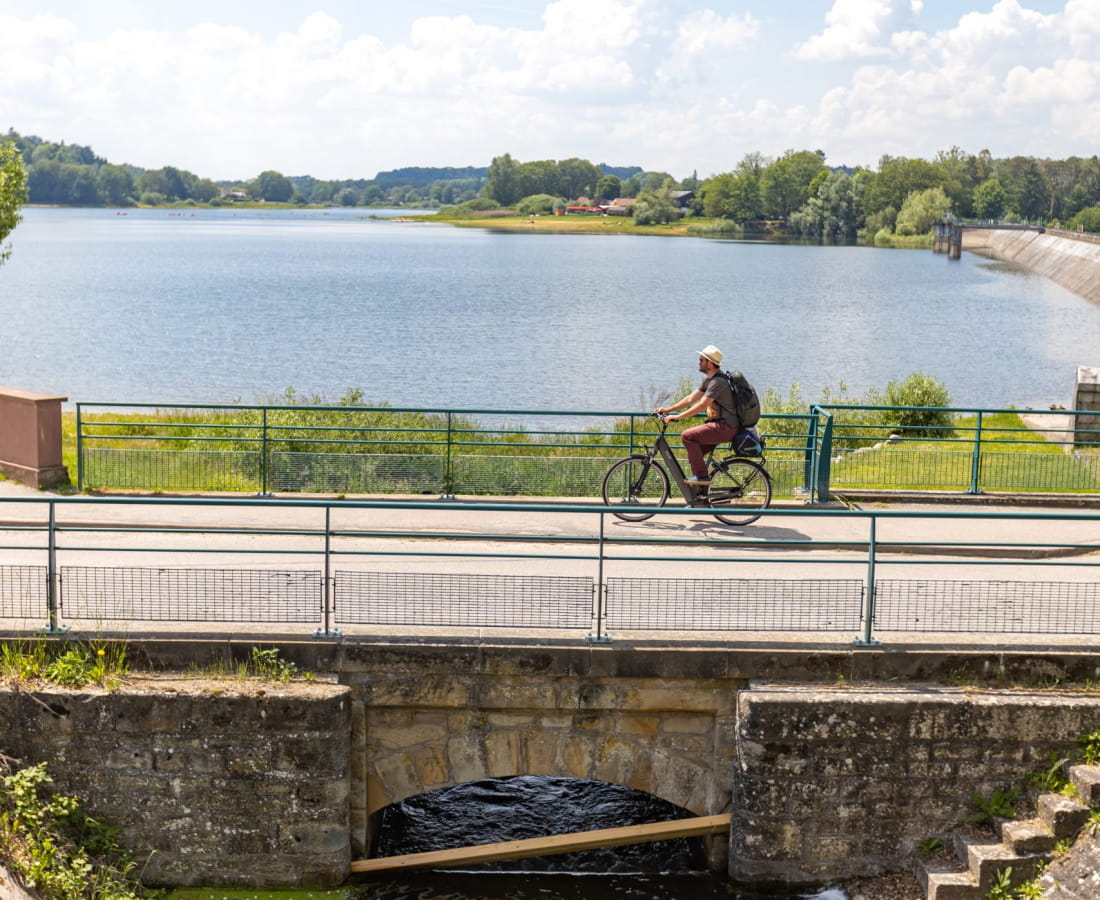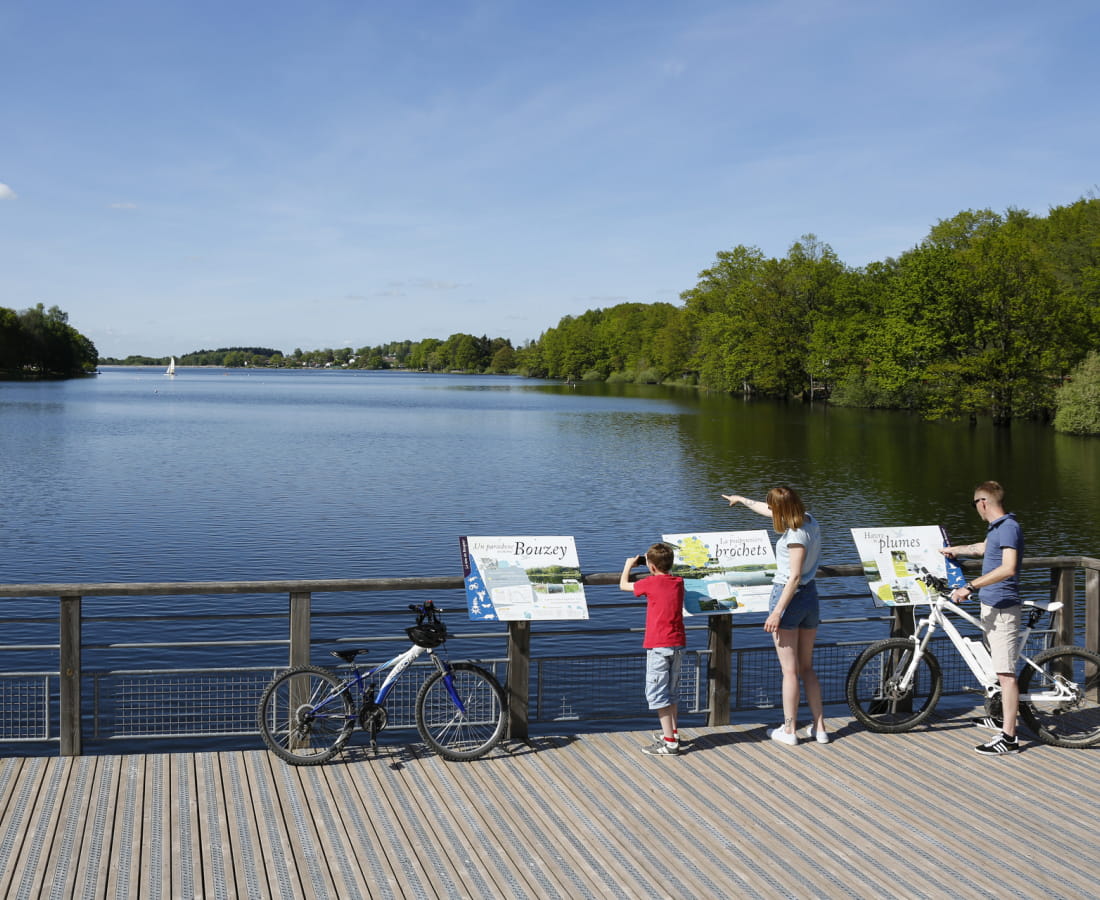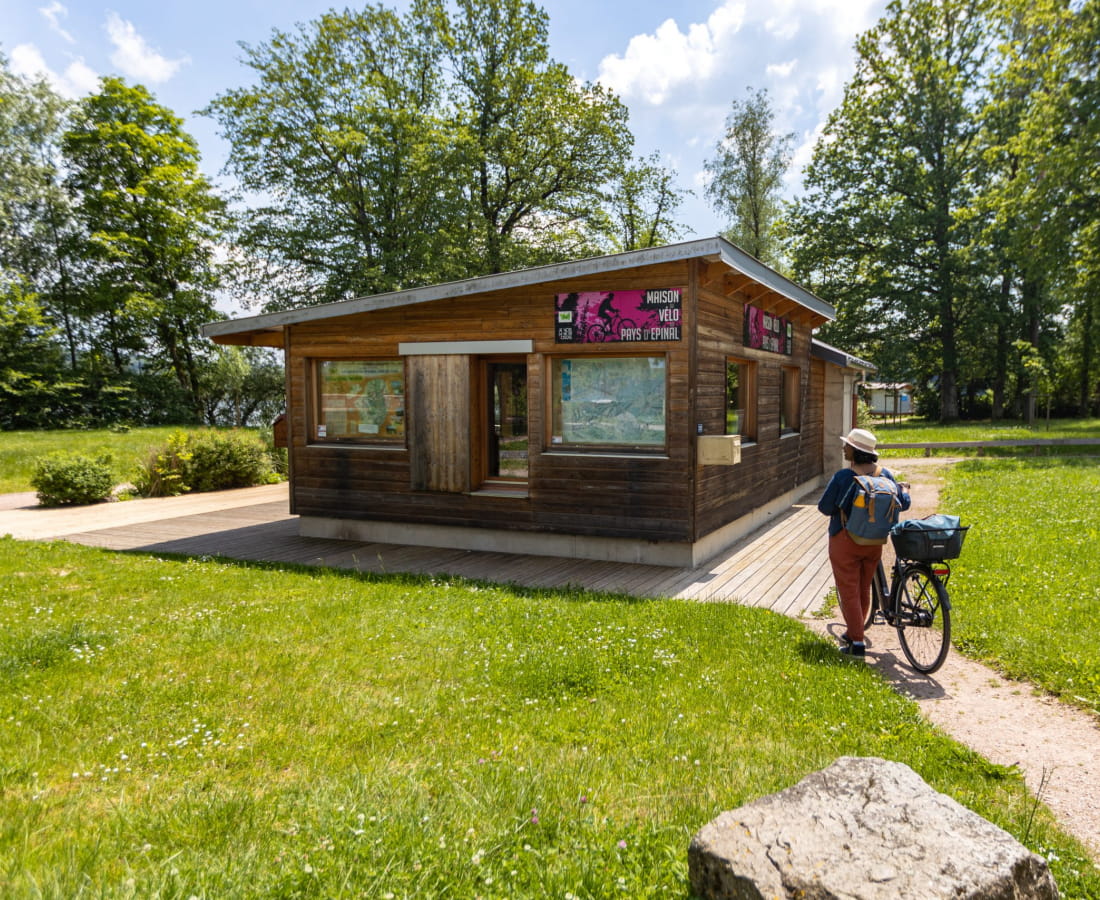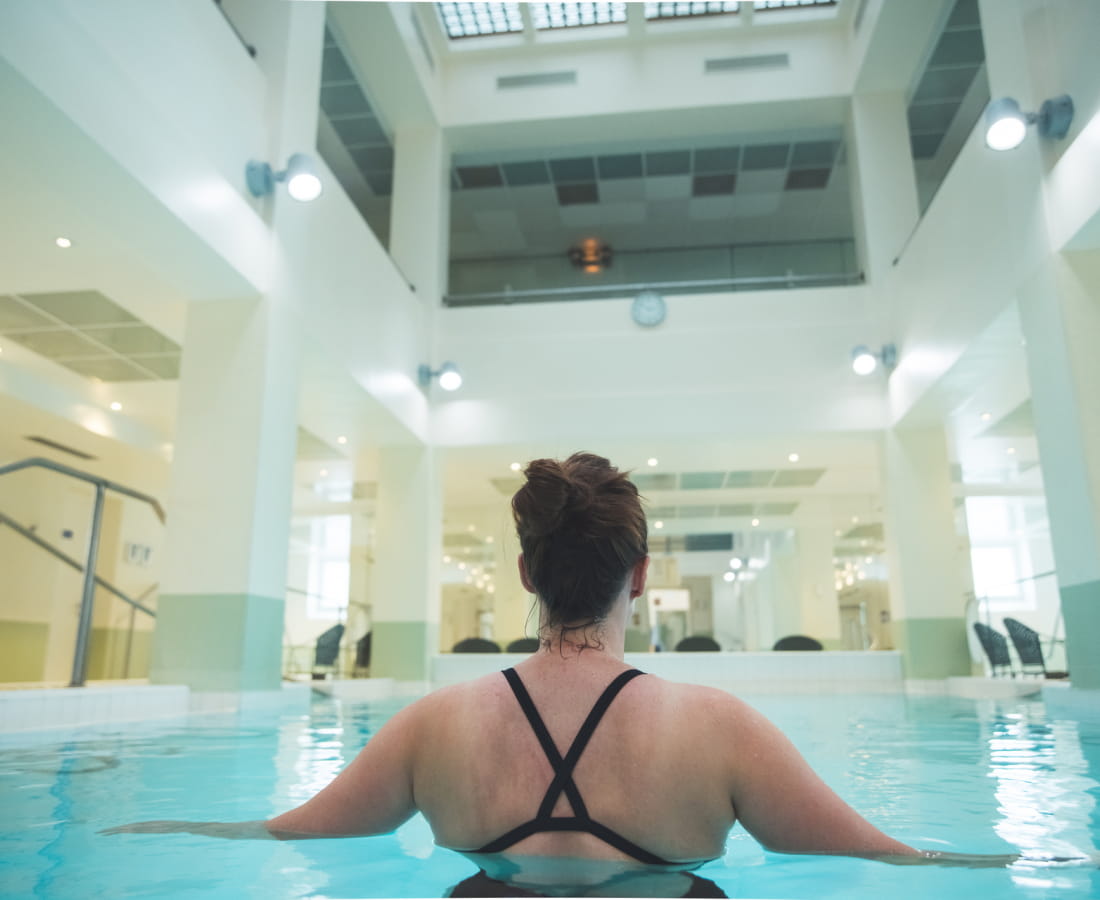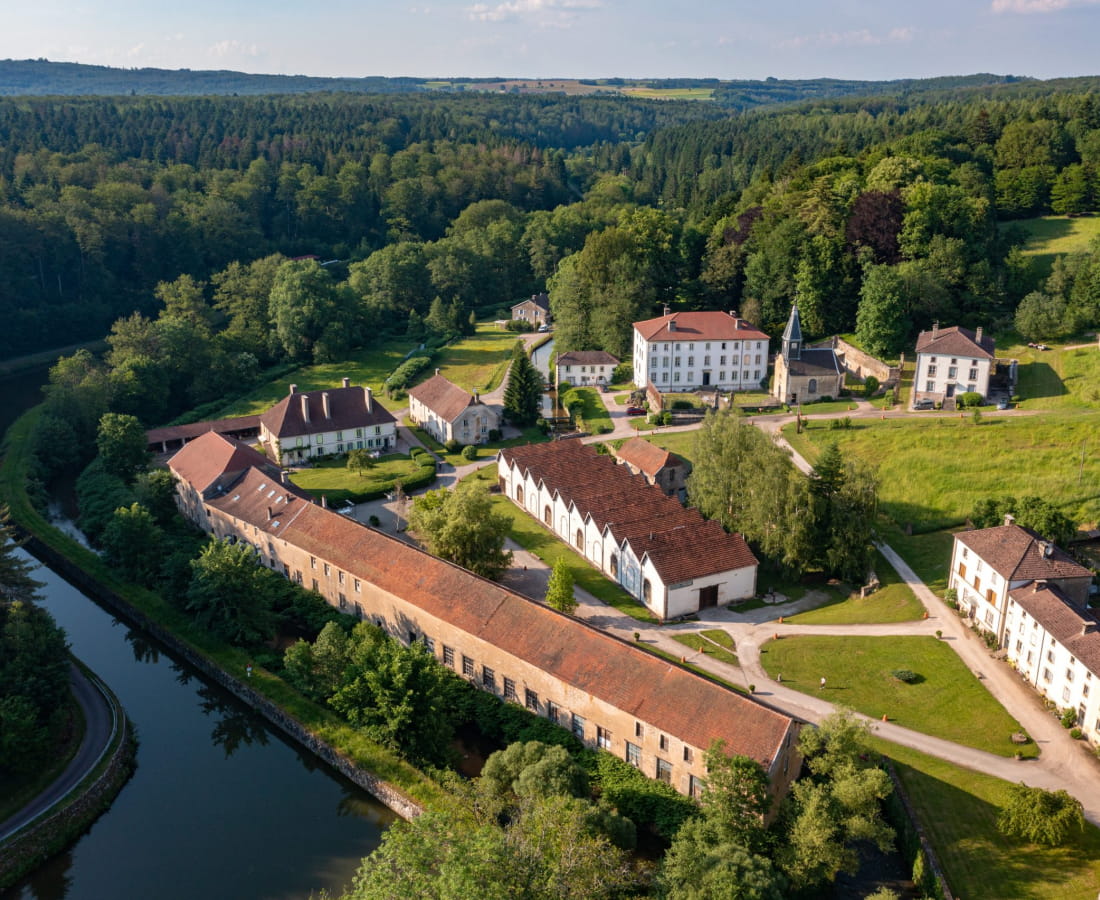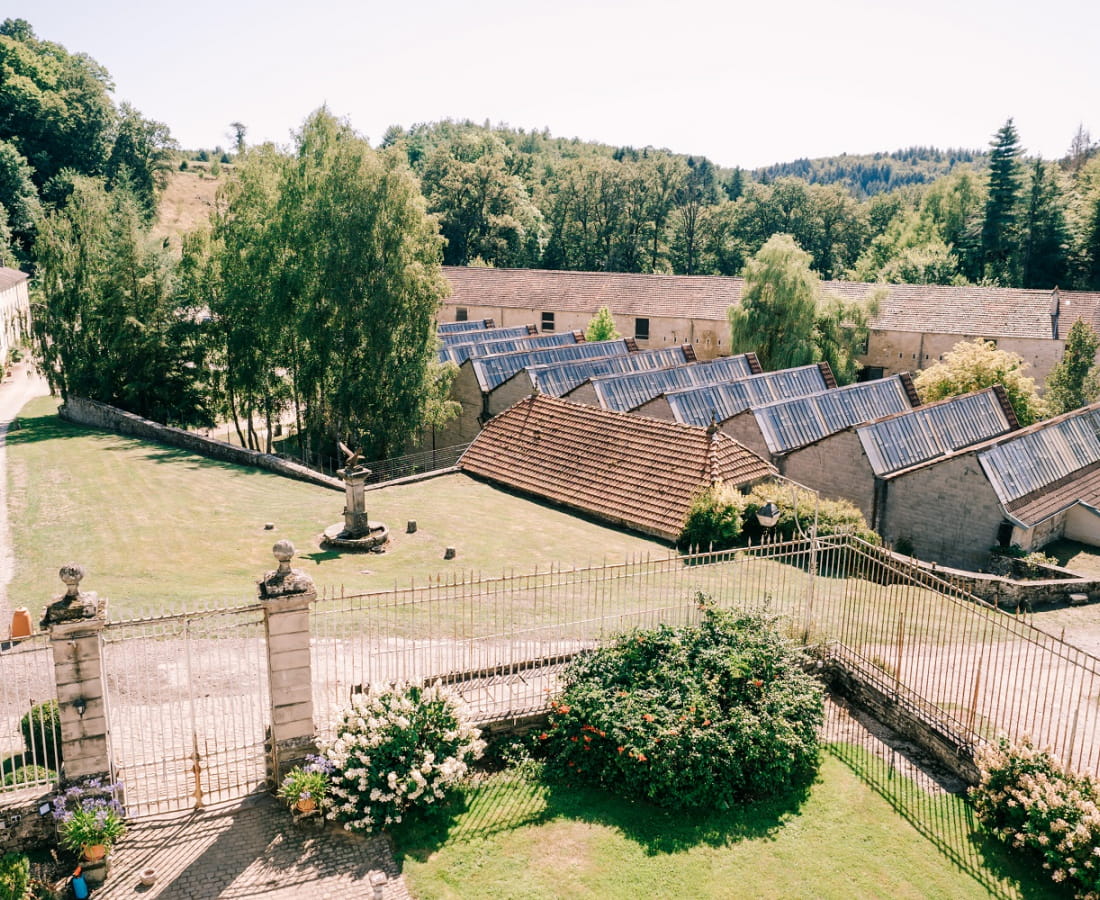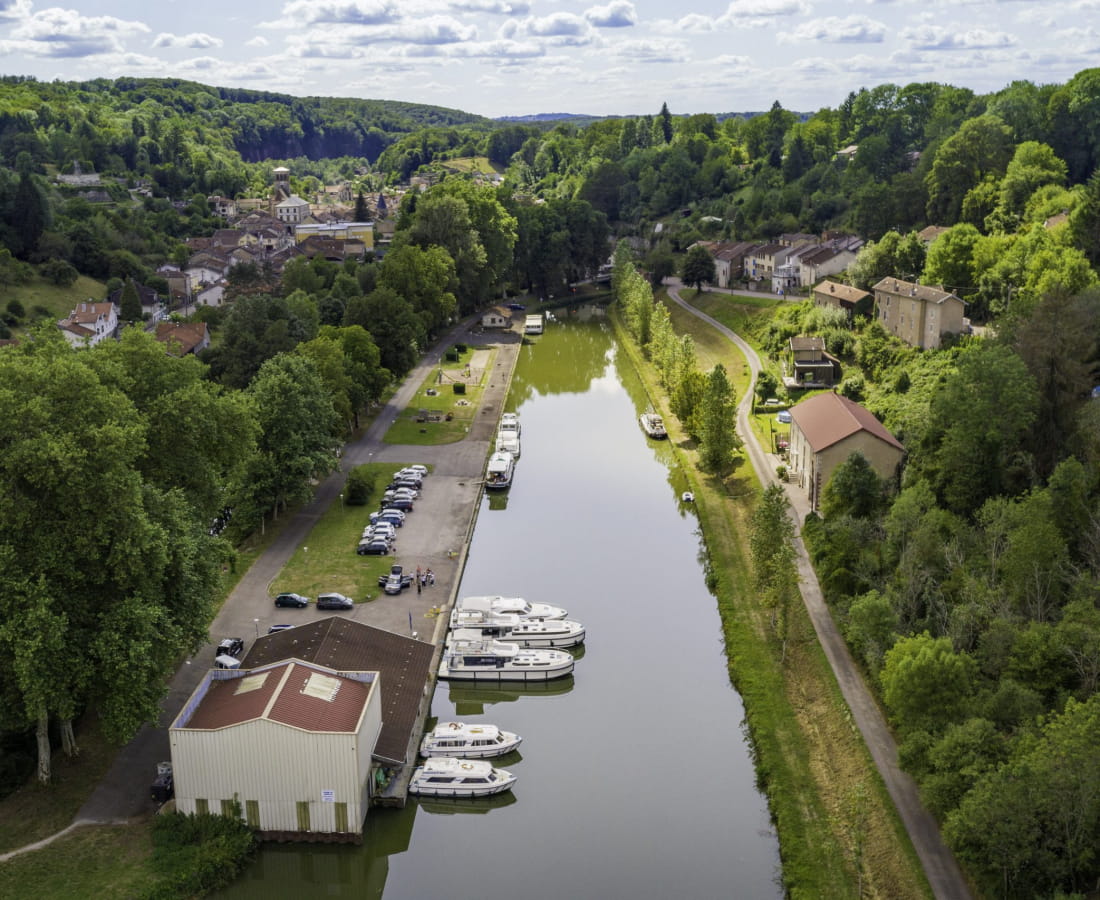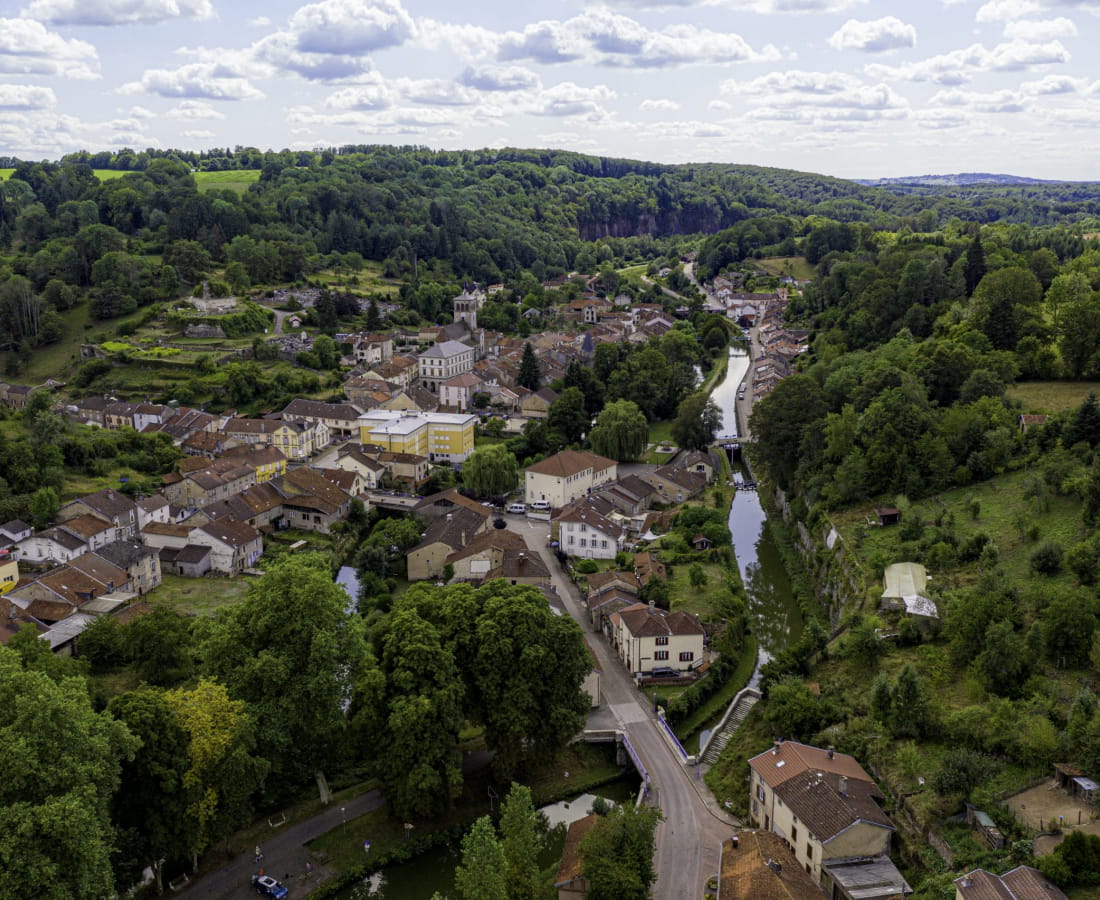-
The Voie Bleue is a 700km route that runs from the border with Luxembourg and Germany (the small village of Apach north of Metz) to Lyon. In the Grand Est region, 250 km of the Voie Bleue crosses the Lorraine departments of Moselle, Meurthe-et-Moselle and Vosges.
-
The main stations for accessing the route in the Grand Est region are Metz, Nancy and Epinal. The Voie Bleue can be reached from Paris, Lyon, Dijon, Strasbourg, etc. via several TER or TGV connections. Other stations are also accessible, and are indicated on each of the stage descriptions.
You can also access the route from Luxembourg (the Eurovélo 5 connecting route between Luxembourg and La Voie Bleue) or from Germany (Koblenz, Trier down the Mosel Radwgeg, or as close as possible to the border at Perl).
If you're planning to do the whole of the Voie Bleue route, there's a daily TGV service between Lyon and Metz, with the option of reserving a cycle parking space (for a fee).
-
The 700 km of the Voie Bleue are signposted. The logo of the national identifier for the V50 route is shown on the signs. Around Pont-à-Mousson, however, some "La Voie Bleue - V50" signs may be missing.
-
More than 93% of the route in the Grand Est region is exclusive right-of-way (greenway or car-free equivalent). The Voie Bleue is therefore accessible to all. However, certain crossing points (bridges, built-up areas, etc.) may be less safe and require extra vigilance, particularly if you are travelling with children. What's more, the Voie Bleue route is completely flat, as it follows the towpaths of the Moselle and the Canal des Vosges.
It's worth noting that over the 700 km of the route as far as Lyon, 80% of the Voie Bleue is exclusive right-of-way - a national record for this type of cycle route!
-
Luggage, bike and personal transfers... On the Voie Bleue, every effort is made to travel light. Logistics specialist La Malle Postale offers luggage transfer, bicycle and passenger transport services along the route. When you use their services, you can travel with peace of mind!
How does it work? In the morning, La Malle Postale collects your luggage from your hotel, gîte or campsite and transports it to the next accommodation. You book your accommodation, La Malle Postale takes care of the logistics!
-
To date, two guidebooks describe the route in its entirety:
- La Voie Bleue, published by Chamina, which will accompany you on your journey and offers a number of excursions around the route, in particular to Dijon.
- The Routard guide to the Voie Bleue (Hachette).In German, a "bikeline" guide (published by EsterBauer) dedicated to the Voie Bleue is also available. In Dutch, the "Véloroute du Soleil" guidepublished by Cycling Europe / Paul Benjaminse describes the entire Voie Bleue route, as well as the entire route linking the Netherlands to the Mediterranean.
-
If you opt for an electric bike, you should be aware that your battery can be recharged using a simple electrical socket. A good battery can have an average range of 80km per day, so you'll be able to recharge it overnight in your accommodation.
Some of the accommodation and visitor sites along the Voie Bleue have the "Accueil Vélo" label, which means you can take advantage of services tailored to your cycling trip, including electric sockets for recharging your electrical equipment.
There are also a number of charging points for electric bikes. However, they are rare along the route.
-
After the effort, the comfort! For a quick lunch, dinner or gourmet break, there are plenty of restaurants and cafés along the Voie Bleue route. Don't hesitate to try the local specialities to discover all the flavours of the region! Along the route, picnic tables are available for you to take a break and have something to eat.
-
The Voie Bleue route in the Grand Est can be completed with any type of bike. For your comfort, it's best to set off with a two-wheeler that's suited to touring. You can choose a mountain bike or VTC modified for bike travel, a traditional touring bike or a gravel bike.
The route follows mostly smooth roads (tarmac or equivalent). There are a few sections that are less practicable on a pure road bike due to root growth or holes forming in certain sectors.
-
Before setting off, it's essential to check your bike and make sure it's in perfect working order. Pay particular attention to the brakes, tyres and transmission. Wear a helmet and choose brightly coloured clothing and/or reflective accessories (such as a waistcoat) to improve your visibility. And, of course, obey the Highway Code. Other basic safety tips include not using your mobile phone while driving, and not wearing headphones that isolate you from your surroundings. It is also not advisable to ride at night or in poor visibility. A lock will come in handy if you want to stop off along the Blue Route!
Finally, pack a few snacks and plenty of water to keep you hydrated and fuelled.
-
Before setting off, it's essential to plan your route in advance, taking into account the distance, level of difficulty and weather conditions. Don't overestimate your abilities and anticipate as far as possible any minor problems that may arise during your outing!
First check that your bike is in good working order. A few accessories such as a bike pump, spare inner tubes and basic tools can be useful. And don't forget a lock to secure your bike!
Dress for the season and the weather. Light, breathable clothing is recommended, as is a windproof jacket in case of rain or wind. Take with you a first-aid kit, sun cream, water and snacks to avoid getting tired!
Don't forget to take your mobile phone with you, and let your friends and family know your route. Even if you can identify the route beforehand, a GPS will come in handy. Finally, don't forget to warm up and stretch before you set off: it'll help you avoid injury!
-
The summer months are often a good time to embark on a cycling adventure. Although autumn and spring are ideal seasons to avoid the heat or cool temperatures, the weather is unpredictable even in summer! Make sure you bring warm clothing or a windproof jacket, as it can be cool in the evenings and mornings. Be prepared whatever the season and check the weather forecast before and during your cycling trip.

